



How can designers and programmers work more harmoniously? How can the tools being created better meet the needs of users? There is a need for designers to have a greater role in the production of the tools that they use, aside from just reporting bugs, requesting features or designing logos for open source projects. This is where the Libre Graphics Research Unit comes in. The Libre Graphics Research Unit (LGRU) is a traveling lab where new ideas for creative tools are developed. The unit has grand aims, looking to bring aspects of open source software development to artistic practices. The programme, sponsored by many organisations in Europe, is split into four interconnected threads:
The first meeting, Networked Graphics, took place in Rotterdam from 7-10 December, 2011 and was Hosted by WORM. This second meeting, Co-Position, for which I was present, took place at venues across Brussels from 22-25 February 2012. Co-Position is described by LGRU as:
[…] an attempt to re-imagine lay-out from scratch. We will analyse the history of lay-out (from moveable type to compositing engines) in order to better understand how relations between workflow, material and media have been coded into our tools. We will look at emerging software for doing lay-out differently, but most importantly we want to sketch ideas for tools that combine elements of canvas editing, dynamic lay-out, networked lay-out, web-to-print and Print on Demand.
The meeting saw the coming together of many international artists, theorists and developers for four days of work around this subject. As some of the sessions of the meeting took place simultaneously I’m unable to give a full synopsis of the event. Instead, what is presented below are some of the key issues raised at the meeting.
The subject of copyright cannot be avoided when discussing digital art and collaborative practices. There is a definite need to foster a safe and welcoming environment for artists and designers to produce, share and remix their work. Licensing of artwork under Copyleft licences – such as Creative Commons – helps to create this environment.
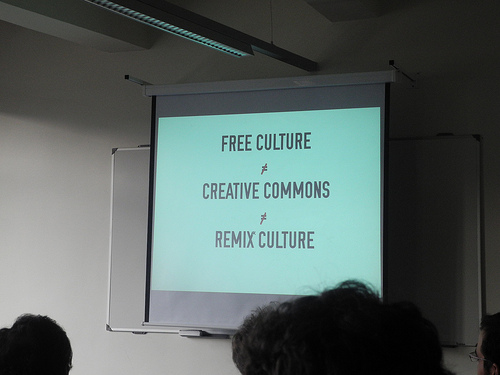
In his presentation, entitled “Libre Workflows – A Tragedy In 3 Acts”, Aymeric Mansoux was quick to point out that Creative Commons licences do not cover the source of the artwork. To put it into context, a JPG is covered by a Creative Commons licence but is the XCF/PSD file? Mansoux also considered what is actually a finished piece of artwork? In a remix culture is an artwork ever finished? Mansoux refers to this quote from Michael Szpakowski for further elaboration:
I’ve found it helpful to think of any artwork, be it literary, visual art or music as a kind of fuzzy four dimensional manifold. So the “complete” artwork is the sum of all its instances in time, and all epiphenomena. The entire artwork, seen this way, is a real and precisely enumerable sum, a concrete, not imaginary, set, which could be knowable in its entirety by something long lived and far seeing enough.
From their home town of Porto, Portugal, Ana Carvalho and Ricardo Lafuente produce Libre Graphics Magazine with ginger coons who is based in Toronto, Canada. For the production of the magazine they use Git, with their repository being hosted on Gitorious. As a tool for sharing files between collaborators Git is very useful. However, they explained that they feel they are not making effective use of all that Git has to offer. Part of this comes from the complexity of using Git. There are more than 140 commands in Git, each with their own unique function. These are usually entered via the command-line, but there are a number of programs with a Graphical User Interface (GUI) available. Programs with a GUI are usually favoured over command-line programs as they remove some of the complexity. Carvalho and Lafuente have found, however, that many of of these GUI programs simply replace commands with buttons, which doesn’t remove any of the complexity in using Git. What is needed is an easy to use specialised tool for the production of art.
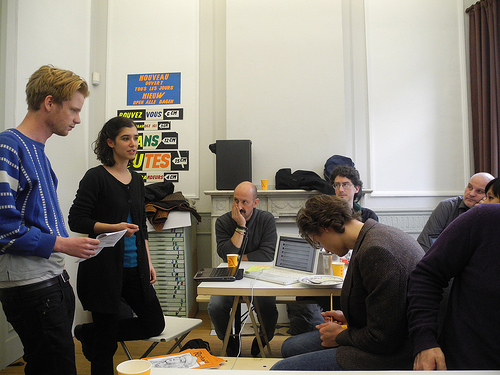
In this work session, presented by Ana Carvalho and Eric Schrijver, the work group imagined how to adapt existing version control tools to meet the needs of artists and designers. The session began by taking a look at how people currently implement version control. A common practice is to manually make backups, renaming files to differentiate between stages. This can be an effective way of making different versions, but it doesn’t address other issues such as making comparisons or merging changes. The ineffectiveness of these manual methods is soon very apparent. The work group was introduced to the Open Source Publishing (OSP) Visual Repository viewer, which begins to respond to some problems with current version control systems by providing thumbnails of files in a repository.
Using this as a basis we began to look at other functions that the OSP Visual Repository viewer should have, such as the ability to compare graphical files in different ways and to revert back to previous versions or merge versions. Although there was no time to produce working code we did seek to address the complex task of merging and comparing not only the ouput file but also the working files (svg/xcf/psd).
Every good work of software starts by scratching a developer’s personal itch.
This quote from The Cathedral and the Bazaar by Eric Steve Raymond could not be more accurate in describing the motivations behind the development of Laidout, developed by Tom Lechner, a comic artist from Portland, Oregon. Perhaps one of the most impressive software demonstrations of LGRU, Laidout is a program for laying out artwork on pages with any number of folds, which don’t even have to be rectangular.
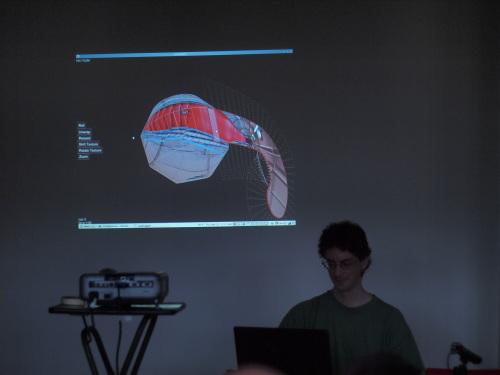
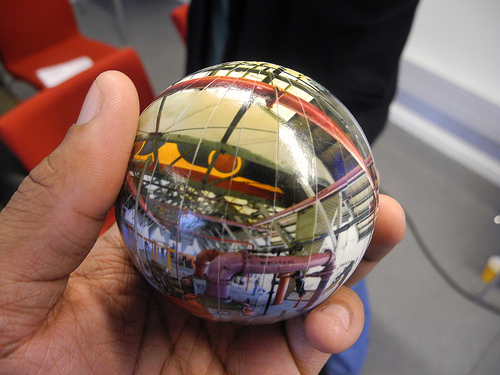
In an attempt to devise new tags that can be added to the SVG specification, Michael Murtaugh and Stephanie Villayphiou presented a work session that looked at the different ways language is interpreted by both humans and computers. To address this the work group took part in a task that saw them act as an interpreter of commands. With nothing more than a list of tags used in SVG files the work group would attempt to construct shapes.


The results varied from person to person and highlighted an important question: How can computers interpret ambiguity
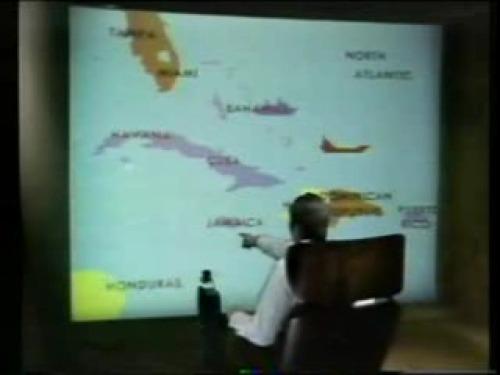
Using the Richard A Bolt “Put that there” demonstration, Murtaugh showed how human-computer interaction is still based around using very clear, unambiguous commands that can be easily interpreted by computers. In SVG only the most basic of shapes – rectangles, circles and lines – are represented. But, as the work group participants asked, could there be tags to represent more complex shapes, such as a horse?
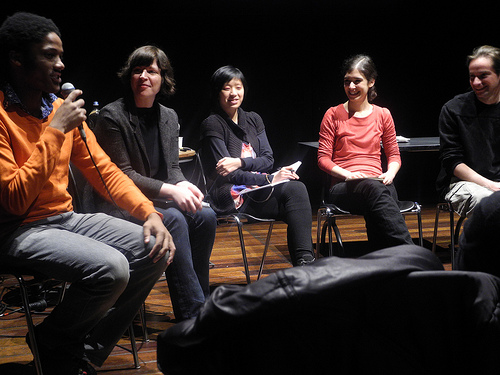
On the final day of the meeting I took part in a roundtable discussion, chaired by Angela Plohman and featuring myself, Stephanie Vilayphiou, Camille Bissuel and Ana Carvalho. The discussion first went over all that we had achieved over the four days at the meeting, and then the discussion focused on how and why we share our artwork. Expanding on the earlier quote from Szpakowski, how can we make sharing all of our artwork – including the early stages and inspirations behind it – an easier and integrated part of making artwork? In addition to sharing our final, “finished” artworks do we want to also share our processes and ideas behind the artwork? More importantly, can software easily aid this?
Other topics debated in the discussion revolved around opening up our artwork and processes to others. By opening up the development process of our artwork do we do so to invite collaborators and contributions or just observers? The Blender Open projects, for example, are highly regarded as an example of the work that can be made using open source software. The files used to make these projects are are released upon completion of the project, but the development process remains closed to the team of artists and developers. Would opening up this process to contributors add any value or could having too many ideas dilute the original vision of the project.
Although no conclusions around these topics were made, it was nonetheless important for everyone at the meeting to think critically about their practice
A concern of mine is that research is not always acted up on and exciting possibilities exist only as theory. However, I feel that the approach of Libre Graphics Research Unit, which combines research and practice, will ensure that the work undertaken at the meetings is implemented. It is actively working with developers and users to try and create solutions.
At the Co-Poistion meeting not one final product was made, but the initial vision for the future of layout was formed.
The next meeting, Piksels and Lines, takes place in Bergen, Norway and is organised by Piksel.
MONODROME: Art’s debt in times of crisis
AB3 Athens Biennale 2011 Monodrome
Curated by Nicolas Bourriaud and X&Y
23 October-11 December 2011
Athens Biennale 2011 was the third edition of this institution and was entitled “Monodrome”, meaning “One way street” after the 1928 text “Eisenstrasse” by Walter Benjamin. The concept of the title is obvious; after the first Athens Biennale in 2007 prophetically entitled: “Destroy Athens”, the second Biennale “Heaven” in 2009, “Monodrome” comes as a closure to this trilogy. Why Walter Benjamin? Because he was a “defeated intellectual”, according to the curators. German-Jewish philosopher, an emblematic figure of 20th century thought, gave an end to his life at the french-spanish border while trying to escape the Nazis. “He was unable to overcome his personal dead-end as a subject”, says Poka-Yio of X&Y and he continues: “The title of this exhibition after Benjamin’s text refers to a collective dead-end” currently at stake and it’s only possible fate: a cloud of doom. “Monodrome” aimed to provoke debate around “something that has fallen apart, but to also offer the possibility of a glimpse at something new to come”.
Indeed, this Biennale took place at a specific moment in Greek and global history, where all 20th century utopian narratives (i.e. modernism, ecology, metaphysics) are crashing, introducing to the whole world a humiliating and disturbing, both socially, as well as nationally, dystopian non-future. Athens, the cradle of democracy was – at the time – “rocking the world”, by suffering the experimental imposition of a non-democratic supernational regime stamped with the mark of over-privatization, a situation that immediately started spreading all over Europe. Now – that the exhibition has come to an end – nearly everyone on this planet feels that “the time” {our world – as we know it – has come to} “is out of joint”, “the very place of spectrality” (Jaques Derrida, “Specters of Marx: The State of the Debt, the Work of Mourning, and the New International“ Routledge, 1994: 82).
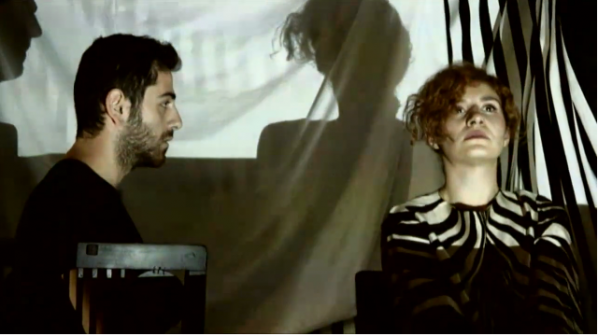
What’s art got to do with this? “Artists usually have premonitions of what’s going to happen, it is often that artists precede with their work social changes; artists are mostly intuitive, it’s at the core of their existence, this how they create” Poka-Yio says. Nicolas Bourriaud and X&Y had to deal with a situation that can be called no less than a “crisis management”. The exhibition was organized practically with no funding and was based mainly on the contribution of all participants and volunteers. The social events that were taking place during the very opening of the show were probably amongst those of the most significant importance in Greece’s postwar history. The energy and emotional vibe caused by this historical moment were the background of the Biennale and made it both a great challenge and a responsibility for the curatorial team.
Despite these critical financial and social circumstances, the Biennale was successfully realized against all odds and it can be said, that it was well received by the audience – an accomplishment on behalf of the curators who selected the works, planned and organized it. The curators of the 3rd Athens Biennale 2011 felt that “the widening situation for which Greece is a much derided yet overexposed case-study must become the focus of cultural investigation, in a way that it is no longer poignant – or even moral – to simply keep making exhibitions in the way that had become the norm in previous years”.
In order to address these issues, besides investigating the exhibition’s conceptual framework, the curators decided “to experiment with the Biennale exhibition format itself, by transforming it into an invitation to create a political moment rather than stage a political spectacle by making a call to a sit-in of collectives, political organizations and citizens involved in the transformation of society”. At another level, as the exhibition was designed and produced, its various stages of development were providing the basis for a feature film directed by Nicolas Bourriaud. Social media also played an important role in the communication strategy of this Biennale, as every event, talk, happening or performance was recorded and presented at AB3 youtube channel and one could follow it via facebook, twitter and other social platforms, as vimeo, flickr and tumblr.
The conceptual framework, upon which the theoretical thread was build, was a deep dive in the folds of Greek history. The curatorial strategy chose “to represent an ongoing crisis through historical fragments, a Benjaminian technique”. Walter Benjamin, provided with his text “Eisenstrasse” the tools for looking at history in a fragmented way, for he, according to the curators, introduced theoretical tools for looking into history with terms of “here and now”, by often making references to the city and to the popular culture of his time. “One way to talk about history is to include history”, says Nicolas Bourriaud. “The exhibition was structured as text; its narrative unfolds as one searches in the ruins and tries to read their meaning”, as one “tries to find out about new possibilities of giving meaning”.
Walter Benjamin, as a character, for the needs of this exhibition’s narrative concept was brought in a paradox dialogue with another character, a fictional one: Saint Expery’s Little Prince. This narrative plot brings this real life character, the emblematic intellectual, to meet the hero of a children’s novel, because: “a child can pose questions in an intelligent manner representing the inner child to be found in everyone” says Xenia Kalpaktsoglou of X&Y team of Athens Biennale co-founding curators. Little Prince poses all fundamental questions of “being” to the philosopher and the intellectual strives to give back the right answers. This imaginary dialogue took place in the form of sketches spreading like a graffiti-comic all over the walls of the exhibition’s main venue building. “As the intellectual retreats defeated in the face of the escalated distress, the Little Prince keeps questioning this condition with the disarming innocence and the plainspoken boldness of a child”.
The real protagonist of the exhibition, however, was Diplareios School, the main venue, a nearly disused old building located at the heart of downtown Athens in an underprivileged area, right across the City Hall and the old big open market. The local color and the smells of the market square, crowded with immigrants, ethnic shops and – especially at night – the presence of junkies, dealers and prostitutes was part of the exhibition’s “aura”. This building was literally used as a “panopticon” of both contemporary and ancient Athens and has a long history. It was built for the purposes of housing a School of Design, meant to be “the Greek Bauhaus”. Among many of its uses, it was requisitioned during the German Occupation and during the time when Athens was so badly over-built, it was hosting the offices of Urban Planning public service. The second exhibition venue was “Venizelos Museum”, a former military basis also used during the Greek dictatorship as the headquarters of torture investigating anti-regime citizens (former ΕΑΤ – ΕΣΑ).“The space is the artwork”, Bourriaud says. “Not just a venue. It’s previous functions manifest its character; it is a real protagonist”.
Diplareios School is an allegory of modern Greece surrendering itself to abandonment. Looking around all one sees is worn walls and graffiti, all one hears are the voices of protests and the ubiquitous noise of the city. The curatorial strategy for this Biennale was quite different from the two previous exhibitions, “Destroy Athens” in 2007 and “Heaven” in 2009. No big names of the international art market to be found among the artists. No self-referential patterns in this exhibition, other than “questions on the reasons behind the political crash, the crisis of moral values, the dead-end”. It was in fact a much more “introvert” exhibition, focused on the local scene, featuring mainly emergent Greek artists. The exhibited artworks in their majority came form Greece: “to include the local, to talk about local artistic production was one of our aims for this exhibition” according to Bourriaud.
Only to mention a few, Spyros Staveris, an emerging Greek photographer with a video art photo-documentation following the “Aganaktismenoi” social movement in Athens at its very birth. In the same room, “Ηommage a Athenes” a sound installation by Vlassis Kaniaris, with recorded sounds of the recent Athenian protests. One could not but mention the remarkable work of young Greek sculptror Andreas Lolis who is making cartboard boxes and felizol sculptures out of marble. “In my artwork, I try to make time stop. The reason why I am using marble, is because I want to make these fragile objects eternal”. “We all use cartboard boxes. People sleep in them. When I looked down from the windows of the Biennale venue and saw people on the terraces sleeping in cartons, it only came to me as a natural thing to co-exist with this situation – not to record it”. “This is the best time for Art. Not the art market, Art. When I recently saw the artworks of Athens Fine Art School graduates, I realized that the bubble-effect’s gone, now. These young artists, living this situation have grown into reality. There’s so much truth in their artworks”.
Another captivating artwork featured at the Biennale was “EXIT” by the Greek collective “Under Construction”, an installation of old rusty worn office desks; “in fact we present an allegorical image of Greece, using old equipment of public services, eroded now from abandonment. The hard to distinguish faded “EXIT” ‘statement’ does not exist, at least not literally”.
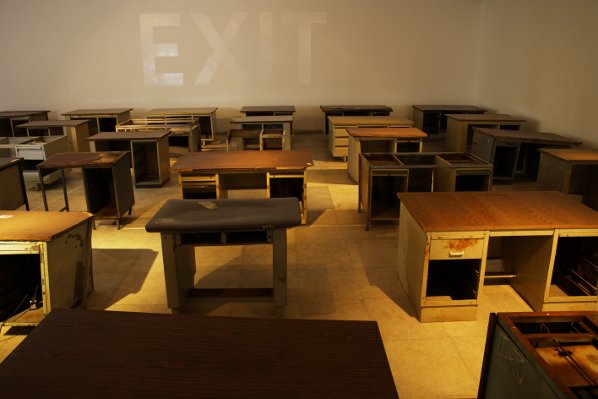
Rena Papaspyrou’s “Photocopies” is another stunning installation, where phone numbers printed on fragments of paper are posted on the wall. “Extending the decay of the wall, this piece secretly interacts with the graffiti notes on the wall waving alternative histories of the numerous uses of the building”. Thus the interaction between Papaspyrou’s installation and the Diplareios building creates a sense of dialogue, both in concept as well as in form.
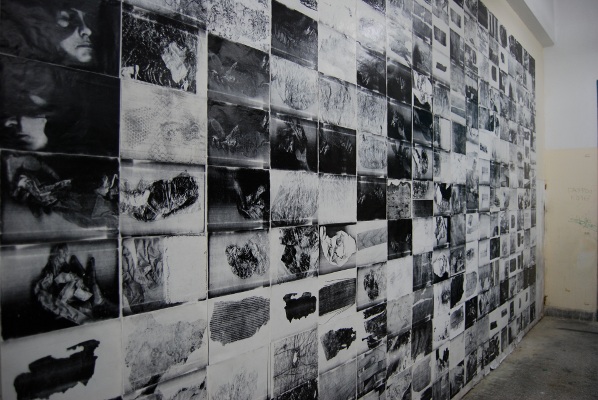
One may wonder whether any international artists were presented in this exhibition. Lucas Lenglet, Jakob Kolding, Norman Leto, Caroline May, Josef Dabernig, Józef Robakowski only to mention a few, and of course, Julien Prévieux’s “A La Recherche du Miracle Economique”.
“This is a fragmented exhibition”, Bourriaud says: “one can see in this exhibition various media, film, collages, photographs, sculptures, drawings, paintings”. Amongst the artworks, the visitor would encounter several objects that have nothing to do with art but were used as tools for the exhibition narrative: a time lapse, a trip down to memory lane. For example, an object used for this purpose was a placard, that the curators found discarded after a recent protest in Athens. On the placard was written: “WAKE UP BANANA REPUBLIC”.
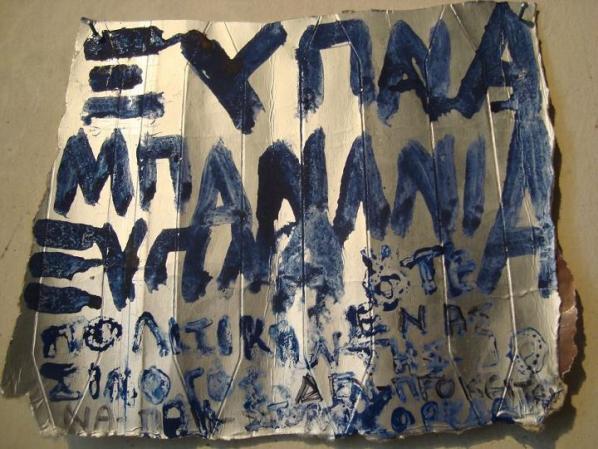
Also, the lost opportunity of Greek design; some of the works of students of Diplareios School were exhibited; they had been left in the old School. Posters by Greek National Tourism Organisation by Michael and Agnes Katzourakis. Pictures of Andreas Papandreou with Gaddaffi during the “good old days”. Air stewart and pilot uniforms from The Olympic Airways. In the attic of the old School, the crescendo of the exhibition’s narrative: as one faces the image of the ancient monument of the Acropolis through the dirty windows of the old School, a dead pigeon that was found there and was respectfully kept by the curators as a symbol, an omen.
The 3rd Athens Biennale 2011 was a double project; in both the form of an international exhibition and a feature film. The return of Walter Benjamin as a ghost that comes to haunt the city of Athens during this crisis period is the theme of a film directed by Nicolas Bourriaud. “It is a feature film, a film as an exhibition, a documentary based on actual characters, a docu-fiction and an experimentation with the platform of the Biennale”, says Bourriaud. “The film will be a work of fiction albeit based on real events. This is the first time that the relationship between contemporary art and filmic language is investigated in this way”. A catalogue will document the whole process of the 3rd Athens Biennale, and a DVD edition, including the movie and documents on participants’ works, will be published. Following the completion of the Biennale, the film in its final format will be distributed both in the art world and the cinema circuit. The executive producer of the movie is Kino Prod (www.kino.fr) in Paris.
Ironically, and sadly, “Monodrome“’s TV trailer was censored by the Greek National Broadcaster (ERT), who was also the major communication sponsor of the Biennale. The director of this 26’’ spot, Giorgos Zois, a talented young Greek filmmaker who has already won several international distinctions and prizes – according to his official statement as an answer to this act – attempted to “deliver the theme of the 3rd Biennale MONODROME (meaning one-way) in a series of slow-motion images of a forcibly accelerated reality depicting the one-way contemporary condition. Instinctively and suspiciously the national Greek television judged the content to be against the law that forbids “messages that contain elements of violence, or encourage dangerous behaviors, or insult human dignity”. “Apparently the daily transmission of aggressive porn-like governmental policies, does not count as an insult to viewers”. You can watch the trailer here:
This show is curated jointly by Helen Sloan of SCAN and the John Hansard Gallery, Southampton. There is both curatorial interest in the technological aspects of the work as well as the subject matter of the war artist. Sloan was approached by the Arts Council in terms of initiating a project for the ‘Interact’ series of commissions, on which she worked with David Cotterrell. In 2007, Coterrell went to Afghanistan as artist-in-residence for a month in a field hospital. At his residency in 2008, at SEOS (now Rockwell Collins), a company that makes flight simulators. He explored the nature of representation itself, and particularly ‘the suspension of disbelief’. This relates to our relationship with digital data, and how often we regard it as more real, due to its nominal representation of reality and our use of this as information.
What appear to be ‘A-life critters’, are in fact scaled down human forms. Trawling across a dust-sculpted landscape, the real of the chalk dust intersects with the virtual projections of the A-life program which is mapping the movement of these forms to the reality of the sculpted landscape.
David Cotterrell doesn’t want to show pictures of the atrocities of war, but instead focuses on the complex experience of lived space in territorial combat and its mapping. He presents a kind of ‘topo-analysis’ of an imaginary space, with nominal figures located and moving in spatial relationship to one another. In Observer Effect the gallery viewer triggers the movement of the virtual entities who are attracted by a ‘sphere of influence’ to the viewers position in the gallery space. In this way, the phenomenon of space, location and relationship and the concomitant fear of combat, casualty, and mortality are implicit in the context of this exhibition.
Cotterrell has chosen to interrogate image making using technology, much as Vilém Flusser recommended, together with a lack of acceptance of the ‘normal’ indexical uses of photography and film about which he is ambivalent, although he used these media in Afghanistan.
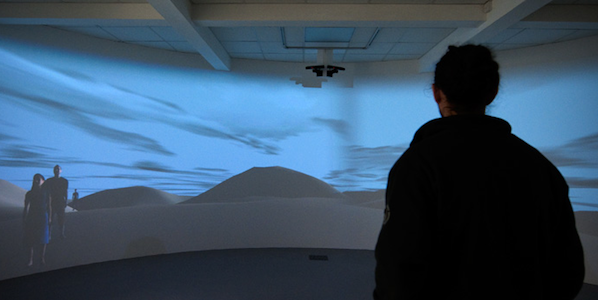
What these works achieve is the proposition of a ‘possible world’ where depersonalisation is understood as part of the virtual, nominal, mapped collective fantasy, which somehow then relates to the changing ‘world view’ of the Western citizen. It is also where the reference to science fiction comes from, ‘Monsters of the Id’ referring to the film Forbidden Planet. Science fiction is perhaps referred to in order to re-conceptualise our thinking as part of this Western view. In this sense it is about empowering us to think differently about the portrayal of conflict itself in the twenty-first century and to understand it as lived experience within specifically managed environments.
This is largely achieved through Cotterrell’s translation of his own experience as war artist in Afghanistan. He seems to want his experience to affect the viewer in a way which is different from that which he witnessed, to a reliance on the imagination instead, provoked by the portrayal of the landscape and militarised environment. Instead the exploration is one of attempting to convey the sense of isolation he felt in the military field hospital.
What becomes apparent on seeing this work, is that we are being presented with data objects, which we are then encouraged to relate to, as though they are the nominal representation of real subjects. It is significant that the work is realised with new technology. All three main works in the show explore a similar landscape but use three different projection systems. In Observer Effect the system relates to interaction with the gallery visitor who influences the installation in spatial relativity, through a device that senses and then calculates, through the algorithms and maths of a game engine, their relationship to the virtual space. Alternatively, in Searchlight 2, there is a synthesis between real and virtual as the figures traverse the landscape. He has said in relation to this piece that ‘from a great distance we lose empathy with the figures crossing the landscape’. In Apparent Horizon, the viewer encounters a semi-immersive relationship with video projected onto specially designed hemi-spheres, a view of the horizon, and a lengthy period of waiting for something to happen, which captures the tension between periods of violence. In this sense the artist has worked both as a war artist and as an artist using and developing the application of new technologies.
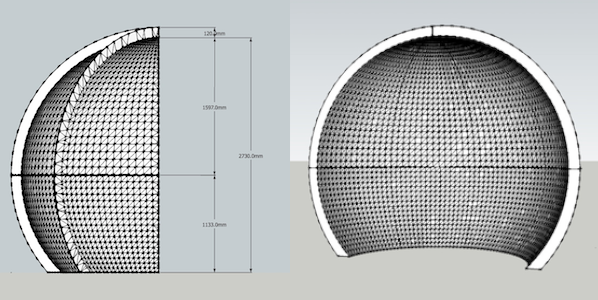
He talked about computer programming having a tendency towards ‘megalomaniac control’, and that the installation was addressed towards ‘how an audience inhabits a gallery’, with no ‘fetishizing of computers’. The residency at SEOS has obviously affected the nature of the technology employed in the work, with two ‘black boxes’ enabling aspects of the projections, as well as the hemi-spheres as immersive hardware. The system of Observer Effect is adaptive and therefore responds to the accumulated impact of viewers in the gallery. He talked about how a commercial games company would find it easy to make, but for him it had been a steep learning curve.
Cotterrell was able to return to Afghanistan in early 2008, due to support from the RSA, and was therefore able to look at the territory of the desert ‘outside the bubble of the military’, which had given him a limited understanding of the environment, a sense of dislocation, and the apprehension of casualties brought from the desert war zone. On this occasion he grew a beard and was able to disguise himself sufficiently so that he could interact with different groups of Afghani people and to gain a ‘pluralism of experience’, as on this occasion he was not part of the chain of command. In this second journey, he was ‘low value’ and therefore able to wander more freely.
Initially, he found it difficult to deliver art work in response to what he had experienced in Afghanistan. He was aware of the historical dilemma of the conflict between medicine and war. But for him, the trauma was ‘quieter’ and involved loss of identity. For example, the twenty-one year old soldier who after severe injury was ambiguous about what would happen for the rest of his life.
He found the operating theatre at the field hospital was ‘like a stage set’, and he took photographs of the surgeons, but found that the documentation ‘didn’t document’ sufficiently his lived experience. At one point he left a video camera running, documenting the arrival of casualties and then, when he was back at home, he edited the footage and left only the moments when attendant individuals ‘allowed their guard to drop’. He questioned though, whether ‘it was right to document trauma’. This left him with the ‘impossibility of conveying content’.
As war artist he has chosen to explore the military and political relationships with the technological portrayal of soldiers and civilians within a territorial combat zone. This is sufficient for Cotterrell in order to convey the sense of isolation and the particular landscape of Afghanistan. In this way, apprehending the virtual or nominal as a way of perceiving what could be real, and is real in a conflict situation, puts the viewer in a complex position, of both suspending disbelief and recognising the construct. The final work Monsters of the Id, includes in a small installation an army tent, desk and military communications equipment. This conjures up an image of Cotterrell’s experience as a war artist, although in fact it is his portrayal of how we might think of it – as naïve in other words.
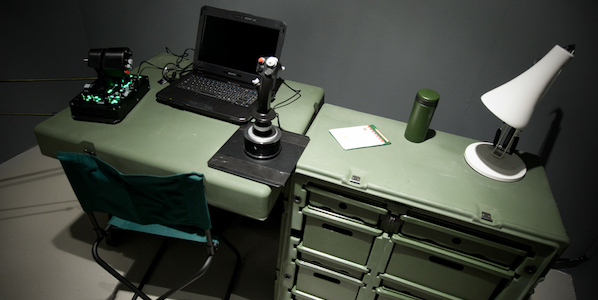
For the team of curators, gallery staff, and the artist, it has been curatorially important to work within the gallery space and Cotterrell claims that the ‘virtual can only really be understood in a gallery context.’ This is enabled through the works being not fully immersive so that you can stand back and reflect. As such the show is all about ‘the manipulation of imagery’ informed by the residencies in Afghanistan and at SEOS.
The exhibition continues till 31 March 2012 at the John Hansard Gallery, Southampton
Women, Art & Technology is a series of interviews that seeks to find different perspectives on the current voice of women working in art and technology. The series continues with curator Sarah Cook.
Sarah Cook is a curator and writer based in Newcastle upon Tyne, UK, and co-author with Beryl Graham of the book Rethinking Curating: Art After New Media (MIT Press, 2010). She is currently a reader at the University of Sunderland where she co-founded and co-edits CRUMB, the online resource for curators of new media art, and where she teaches on the MA Curating course. Most recently she curated the Mirror Neurons exhibition that is part of the AV Festival running through till March 31, 2012, in New Castle.
Rachel Beth Egenhoefer: Over the last few years you have curated a number of exhibitions in relation to festivals of media art. Could you start by giving us a brief description of the AND (Abandon Normal Devices) Festival and your involvement in it last year?
Sarah Cook: My involvement in the AND Festival was to curate a small group exhibition for the galleries at Liverpool John Moore’s University Gallery (in the Art and Design Academy Building). The exhibition was a part of AND but was also curated for the crowd of academics attending the Rewire conference which I was co-chairing. Rewire was the Fourth International Conference on the Histories of Media Art, Science and Technology. A three-day, peer reviewed, international event, the conference had over 150 speakers and three keynote lectures including one by Andrew Pickering, author of the book The Cybernetic Brain. The exhibition, Q.E.D., included seven projects all of which questioned how we can know anything but looking at documentation of it (a problem for art historians of course!). In 2011 the AND Festival had as its theme questioning belief and the structures of belief, so this exhibition complemented their huge and diverse programme.
I had been involved in previous Media Art Histories conferences – having co-curated the exhibition “The Art Formerly Known As New Media” for the first one, Re:Fresh!, which was held in Banff in 2005.
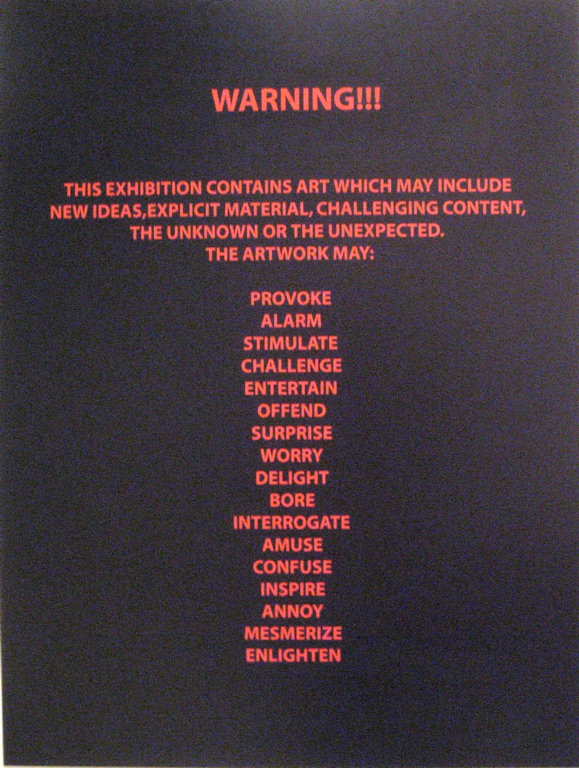
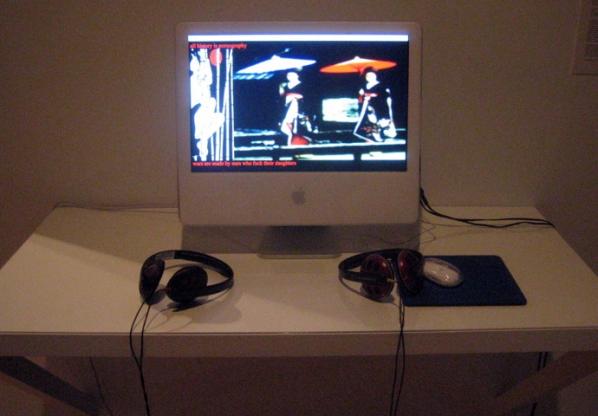
RBE: Could you give us a few examples of work from your exhibition that you felt really abandoned normal devices or methods of production and presented new perspectives?
SC: I selected works in which the artists might have abandoned normal ways of making art, to undertake experiments of sorts, experiments demonstrating phenomena in the world. (Q.E.D. is from the Latin ‘Quod Erat Demonstrandum’ meaning what was to have been demonstrated or what was required to be proved). I wanted a show in which skepticism was the norm, and a perfectly valid methodology for artists to employ as they go about investigating, modeling or representing the world around them.
So there was documentation of Norman White and Laura Kikuaka’s 1988 project Them Fuckin’ Robots — an attempt to create one male and one female electro-mechanical sex machine, without sharing in advance any information about materials, function, or how they would connect.
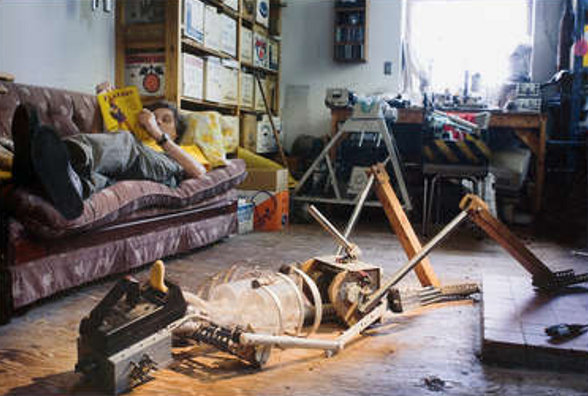
Alexandra Daisy Ginsberg and Sascha Pohflepp’s work-in-progress, Yesterday’s Today, was part of their Southampton University commission investigating the limits and possibilities of models for describing knowledge. They started with the oldest predictive model known to science, and a very British one at that, the weather forecast, and attempted to cool the gallery space to the predicted temperature for the day. There was a heatwave in Liverpool that week in September, so it was a great to experience reality and a model of reality simultaneously.
Axel Straschnoy, along with his many collaborators at the Robotics Institute at Carnegie Mellon University (Ben Brown, Garth Zeglin, Geoff Gordon, Iheanyi Umez-Eronini, Marek Michalowski, Paul Serri, Sue Ann Hong), showed the documentation of their attempts to create a robot that performs art and a robot that watches and appreciates performance art. The informal video interviews with the artificial intelligence engineers discussing how a robot might want to make art are brilliant and often funny.

RBE: I understand your work with AND has lead to a new project recently launched with the AV Festival.
SC: Yes, I have curated an exhibition for the AV Festival, taking place across Newcastle, Sunderland and Middlesborough through March 2012. The show is at the National Glass Centre in Sunderland and is called Mirror Neurons. While AV Festival has a theme of Slowness, Mirror Neurons seeks to question time delay, media processing, and the time it takes for our cognition to kick in when we are in the presence of art – interactive, reactive or not. One of the pieces which was in Q.E.D is in this show also: Scott Rogers’ Self-Flowing Flask – a glass object made based on a drawing by 17th century scientist and inventor Robert Boyle, shown alongside a digitally created animation of it. There is a real sense of confusion by viewers when they see the object: Does it work? Could it work? How would it work? And then when they see the animation they have to work out if it is real or not.
RBE: You mention “Slowness” as the theme for the AV Festival. “Slowness” is also a trending theme right now with slow food, slow craft, etc. How do you see slowness in relationship to technology which is usually portrayed as something “fast”?
SC: The theme of slowness was chosen by AV Festival director Rebecca Shatwell, and so I was glad to leave exploration of that notion to her and her programme, which is stacked with fantastic works of art in moving media (film and video) and sound and performance. In the exhibitions I’ve curated for AV Festival, which include both Mirror Neurons, and a new commission from New York-based artist Joe Winter – also on view at the National Glass Centre in Sunderland – I’ve focused less on the theme of slowness than on the human action of recognising time passing, the lag between our perception or understanding of time and space, and our acknowledgement of our own actions within it.
There are some works in Mirror Neurons which seem, on the surface, to be about time, but which play with the possibility of shifting time, or at least reprocessing it or subjecting it to a new set of rules, with computer technology. By the same token, these works then also implicate you, the viewer, in the time of their action, in your realization of what it is those works are ‘doing’. For instance, Thomson & Craighead’s work Flipped Clock, is a standard computer digital clock, but with the numerals rotated, so that it is defamiliarised and causes you to do a double take and spend a moment working it out. And Michael Snow’s WVLNT (Wavelength for those that don’t have the time) was 45 minutes, now 15!!, in my mind collapses time and space, by superimposing scenes from his 1967 structuralist film – not speeding it up but overlaying it, and seeing through it from beginning to end within the same frames.
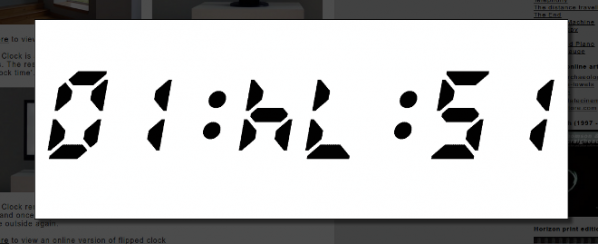
Last comes Joe Winter’s work (which was also included in Q.E.D in the form of wall-based works which appear to be representations of astronomical or geological phenomena, but are made from standard office photocopier images or meeting room whiteboards). For the AV Festival I commissioned him to make a new work for the National Glass Centre also. …a history of light: variable array is comprised of a series of sculptural works which appear like lovingly-made office in-box trays to hold documents. Only they are ranged on white pedestals across a sunny balcony space, and contain coloured craft paper and plates of glass produced by Cate Watkinson. The idea is that over the time of the exhibition (1 March to 20 May) the sunlight will fade the coloured paper, through the plates of glass, and abstract images, based on the patterns and effects in the glass, will result. The images are both created, and destroyed, by the light, over time. Joe’s previous works have all dealt in conceptions of time – deep time, geological time, astronomical time and media time – and his work takes its aesthetics from the media and technology which surrounds us, in mundane spaces such as the office cubicle or the classroom, which while might contain ‘fast’ technology, such as computers, also contains quite ‘slow’ or old or timeless technology, such as chalk, or paper.
RBE: This interview is going to be part of a series of interviews with women working in Art & Technology. What do you consider to be important today about being a woman working in art & technology? Do you think it is still useful to discuss the female voice in the field?
SC: I suppose there is an interesting generational break in the art and technology world at the moment as regards women’s work. I am keenly aware of (and tremendously grateful for) the work of a slightly older generation of women than me, including curators, who set up networks, facilitated international exchange, built the platforms which new media artists can work on. This generation also includes important women artists who worked with technology, gaining access to labs and high tech equipment to make work – some understanding it technically better than others, many working with the help of (often male) programmers.
In the exhibition Mirror Neurons is the work of Catherine Richards, a media artist from Canada whose work I wrote about in my PhD dissertation. For her career to date she has investigated how our bodies are plugged in to the electromagnetic spectrum which surrounds us, making Faraday Cages and copper-woven blankets to insulate us from these signals. Other of her work makes visible the connection between us, as electric beings, and our techno-environment. For the work on view in Sunderland, which was made in 2000, she worked with expert vacuum physicists and scientific glass producers at the National Research Council of Canada. For other works she has collaborated with software engineers (it was an early web-based project of hers which led in part to the invention of the software Java). She plays an important role also teaching art students, reminding them of the history of media art, which is often overlooked, and of where these technologies we take for granted come from.
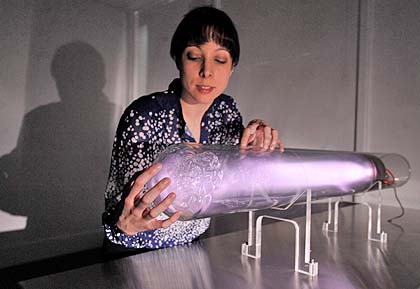
Now that technologies are more ubiquitous there is a younger generation of women artists working in the field, under their own initiative. For instance, the new Pixel Palace programme at the Tyneside Cinema included three women artists in residence earlier this year – working in sound, film and digital media. Sometimes I do wonder what the preceding generation is up to; have they been able to keep up with new technologies or stuck with older ways of doing things? Have they changed tactics and after working so hard to establish themselves in what was then a rather male technological world, decided to move on? Like any field, the art and technology world will have its share of ‘old boys’ but I suppose in my work I strive to always value the collaborative relationships I have with artists and other curators, of any generation and any gender.
Also read – Woman, Art & Technology: Interview with Lynn Hershman Leeson By Rachel Beth Egenhoefer.
“It is not accidental that at a point in history when hierarchical power and manipulation have reached their most threatening proportions, the very concepts of hierarchy, power and manipulation come into question. The challenge to these concepts comes from a redsicovery of the importance of spontaneity – a rediscovery nourished by ecology, by a heightened conception of self-development, and by a new understanding of the revolutionary process in society.” Murray Bookchin. Post-scarcity and Anarchism (1968).
The rise of neo-liberalism as a hegemonic mode of discourse, infiltrates every aspect of our social lives. Its exponential growth has been helped by gate-keepers of top-down orientated alliances; holding key positions of power and considerable wealth and influence. Educational, collective and social institutions have been dismantled, especially community groups and organisations sharing values associated with social needs in the public realm. [1] Bourdieu.
In this networked society, there are controversies and battles taking place all of the time. Battles between corporations, nation states and those who wish to preserve and expand their individual and collective freedoms. Hacktivist Artists work with technology to explore how to develop their critical and imaginative practice in ways that exist beyond traditional frameworks of art establishment and its traditions. This article highlights a small selection of artists and collaborative groups, whose work is linked by an imaginative use of technology in order to critique and intervene into the opressive effects of political and social borders.
In June 2000, Richard Stallman [2] when visiting Korea, illustrated the meaning of the word ‘Hacker’ in a fun way. When at lunch with some GNU [3] fans a waitress placed 6 chopsticks in front of him. Of course he knew they were meant for three people but he found it amusing to find another way to use them. Stallman managed to use three in his right hand and then successfully pick up a piece of food placing it into in his mouth.
“It didn’t become easy—for practical purposes, using two chopsticks is completely superior. But precisely because using three in one hand is hard and ordinarily never thought of, it has “hack value”, as my lunch companions immediately recognized. Playfully doing something difficult, whether useful or not, that is hacking.” [4] Stallman
The word ‘hacker’ has been loosely appropriated and compressed for the sound-bite language of film, tv and newspapers. These commercial outlets hungry for sensational stories have misrepresented hacker culture creating mythic heroes and anti-heroes in order to amaze and shock an unaware, mediated public. Yet, at the same time hackers or ‘crackers’ have exploited this mythology to get their own agendas across. Before these more confusing times, hacking was considered a less dramatic activity. In the 60s and 70s the hacker realm was dominated by computer nerds, professional programmers and hobbyists.
In contrast to what was considered as negative stereotypes of hackers in the media. Steven Levy [5], in 1984 published Hackers: Heroes of the Computer Revolution [6]. In three parts, he writes about the canonical AI hackers of MIT, the hardware hackers who invented the personal computer industry in Silicon Valley, and the third-generation game hackers in the early 1980s. Yet, in this publication, what has had the most impact on hacker culture and is still used widely as a guideline by many is the ‘hacker ethic’. He identified this Hacker Ethic to be a code of practice consisting of key points such as that “all information is free”, and that this information should be used to “change life for the better”.
1. Access to computers—and anything which might teach you something about the way the world works—should be unlimited and total. Always yield to the Hands-on Imperative!
2. All information should be free.
3. Mistrust authority—promote decentralization.
4. Hackers should be judged by their hacking, not bogus criteria such as degrees, age, race or position.
5. You can create art and beauty on a computer.
6. Computers can change your life for the better.
Levy’s hacker ethic promotes the idea of performing a duty for the common good, an analogy to a modern day ‘Robin Hood'[ibid]. Proposing the concept that hackers are self-reliant whilst embracing a ‘healthy’ anti-authoritarian stance, combined with free and critical thinking. Proposing that hackers should be judged by their ability to hack, and presenting hacking as an art-form. Levy also says that the Free and open source software (FOSS) movement is the descendant of the hacker ethic. However, Levy’s hacker ethic has often been quoted out of context and misunderstood as to refer to hacking as ‘breaking’ into computers. This specifically prescribed role, denies the wider and creative context of what hacking is and could be. It does not have to be just about computer security.
This leads us to ‘crackers’. All crackers hack and all hackers hack. But, crackers are seen as second rate wannabe hackers by the older generation of hackers. The Black Hat Hacker or cracker designs and releases malicious code, gathers dangerous information and brings down sensative systems. The White Hat Hacker hunts down and destroys malicious code, and the casual hacker who hacks in order to learn information for his or her own curiosity; both generally dislike ‘Black Hats’ and ‘Crackers’, and tend to view them as computer criminals and dysfunctional juveniles. Lately, crackers have also been labeled as ‘script kiddies’. As a kind of snobbish insult, it refers to those who are not capable of building or programming their own tools, but tend to use scripts and programs written by others to perform their intrusions. To add to the confusion we also have the term ‘Grey hat’. Which refers to a hacker acting between black hat and white hat. Indeed, this could demonstrate where art hacktivists reside, challenging the trappings of the traditional concept of goody and baddy.
“There is another group of people who loudly call themselves hackers, but aren’t. These are people (mainly adolescent males) who get a kick out of breaking into computers and phreaking the phone system. Real hackers call these people ‘crackers’ and want nothing to do with them.” [7] Raymond.
“The basic difference is this: hackers build things, crackers break them.” [ibid] Raymond.
But before we judge,
let’s view a snippet of the \/\The Conscience of a Hacker/\/ by +++The Mentor+++
Written on January 8, 1986.[8]
“This is our world now… the world of the electron and the switch, the
beauty of the baud. We make use of a service already existing without paying
for what could be dirt-cheap if it wasn’t run by profiteering gluttons, and
you call us criminals. We explore… and you call us criminals. We seek
after knowledge… and you call us criminals. We exist without skin color,
without nationality, without religious bias… and you call us criminals.
You build atomic bombs, you wage wars, you murder, cheat, and lie to us
and try to make us believe it’s for our own good, yet we’re the criminals.”
The term ‘Hacktivism’ was officially coined by techno-culture writer Jason Sack in a piece about media artist Shu Lea Cheang published in InfoNation in 1995. Yet, the Cult of the Dead Cow [9] are also acknowledged as defining the term. The Cult of the Dead Cow are a group of hackers and artists. They say the Hacktivism phrase was originally intended to refer to the development and use of technology to foster human rights and the open exchange of information.
Hacktivism techniques include DoS attacks, website defacement, information theft, and virtual sabotage. Famous examples of hacktivism include the recent knocking out of the PlayStation Network, various assistances to countries participating in the Arab Spring, such as attacks on Tunisian and Egyptian government websites, and attacks on Mastercard and Visa after they ceased to process payments to WikiLeaks.
Hacktivism: a policy of hacking, phreaking or creating technology to achieve a political or social goal.
“Hacktivism is a continually evolving and open process; its tactics and methodology are not static. In this sense no one owns hacktivism – it has no prophet, no gospel and no canonized literature. Hacktivism is a rhizomic, open-source phenomenon.” [10] metac0m.
The practice or behaviour of Hacktivism is at least as old as Oct 89 when DOE, HEPNET and SPAN (NASA) connected to (virtual) networked machines world wide. They were penetrated by the anti-nuclear group WANK worm.
WANK penetrated these machines and had their login screens altered to…
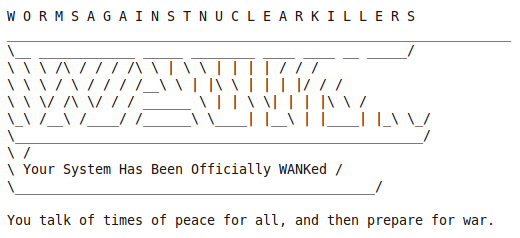
HACKING BORDERS: Examples of Art Hacktivism & Cultural Hacking…
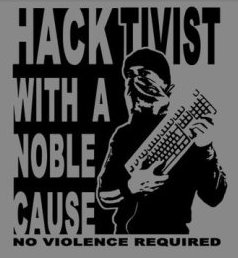
“Radical groups are discovering what hackers have always known: Traditional social institutions are more vulnerable in cyberspace than they are in the physical world. And some members of the famously sophomoric hacker underground are becoming motivated by causes other than ego gratification.” [11] Harmon.
Hacktivism, exploits technology and the Internet, experimenting with the immediacy of distributable networks as a playful medium for independent, creative and free expression. There has been a gradual and natural shift from net art (and net.art) into Hacktivism. Net Art in spirit, has never really been just about art being viewed on a web browser alone. Some of the very same artists whose artwork involved being shown in browsers and making code behind the browser as part of the art, have also expanded their practice outside of the browser. One such artist is Danja Vasiliev, “Fifteen years ago WWW was something very new in Russia and besides the new dial-up aesthetics and world-wide means it brought a complete new layer of existence – “netosphere”, which made my youth.” Vasiliev very soon moved on from playing with browsers into a whole new territory. [12]
Danja co-founded media-lab moddr_ in 2007, a joint project at Piet Zwart Institute alumni and WORM Foundation. Based in Rotterdam moddr_ is a place for artists and hackers, engaging with critical forms of media-art practice. He collaborated with Gordan Savicic and Walter Langelaar from the moddr.net lab on the project Web 2.0 Suicide Machine, which lets you delete your social networking profiles and kill your virtual friends, and it also deletes your own profile leaving your profile image replaced by a noose.”The idea of the “Web 2.0 Suicide Machine” is to abandon your virtual life — so you can get your actual life back, Gordan Savicic tells NPR’s Mary Louise Kelly. Savicic is the CEO — which he says stands for “chief euthanasia officer” — of SuicideMachine.org.” [13]
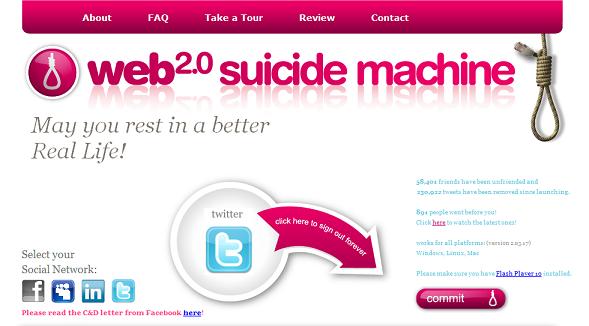
Just like another project called ‘Face to facebook’ that stole 1 million facebook profiles and re-contextualized them on a custom made dating website (lovely-faces.com), set up by Italian artists Paolo Cirio and Alessandro Ludovico, whom also just so happens to be editor in chief of Neural magazine. Web 2.0 Suicide Machine, had to close its connections down regarding its Facebook activities after receiving a cease and decease letter from Facebook. [14]
Julian Oliver and Danja Vasiliev teamed up and formed the mysterious group Men in Grey. The Men In Grey explore our online vulnerabilities by tapping into, intervening into wireless network traffic. Observing, tracing and copying what we do. This hack then redisplays our activities back to us, showing the data of our online interactions.
At first no one (except myself & a few others) knew who they were. When they first arrived on the scene I started an interview with them and then suddenly, I was asked to hold back due to their antics on the Internet and interventions in public environments receiving much coverage. They were not sure how it would pan out for them. Partly due to the anonymous nature of their project, and also because of the sudden impact of the larger hacktivist group Anonymous getting much press in commercial media themselves.
“Men In Grey emerge as a manifestation of Network Anxiety, a fearful apparition in a time of government wiretaps, Facebook spies, Google caches, Internet filters and mandatory ISP logging.” M.I.G
“Spooks are listening into calls, just like they always have,” said Eric King of London’s Privacy International, in an e-mail. “With A5/1 being broken—you can decrypt and listen into 60 calls at once with a box smaller than a laptop.” [15]
Later they won the Golden Nica (1st prize) Interactive Arts category, Prix Ars Electronica in 2011. In a show called Project Space — M.I.G. — Display of unknown, quarantined equipment hosted at the Aksioma Project Space Komenskega, Ljubljana 2011. The statement read:
“The particularly threatening quality of the Men In Grey equipment is its apparently invasive nature; it seems able to penetrate – and even hack into – virtually any electronic device in its reach. While we are all aware of the wire-tapping and data retention done by the government (along with the spying carried out by corporations like Facebook and Google), Men In Grey seem to operate with a range of tools and techniques well beyond those that are currently known to be in use.”
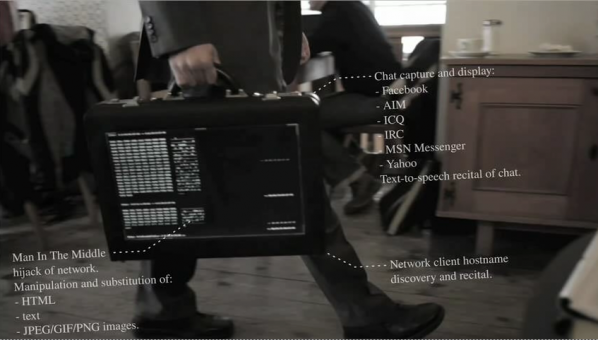
Hacktivism involves many different levels of social intervention and engagement. Whether it is to do with direct action, self-referential geekiness, obscure networked antics, crtical gaming, or peer 2 peer and collective change. Hacktivists challenge defaults put in place by other people, usually the systems imposed upon them and the rest of us by authority. Even though the subjects themselves may be concerning serious matters, humour and playfulness are both essential ingredients.
“A promising tactic for the early Situationists was the unpredictable yet forceful potential of play — what anthropologist Victor Turner termed the “liminoid,” or the freeing and transformational, moments of play when the normal roles and rules of a community or society are relaxed.” [16] Dovey & Kennedy.
One group crossing over from the digital into physical and social realms, is Tiltfactor. [17] Their form of intervention is not necessarily about causing political controversy, but is engaged in reaching people through games of play. Experimenting with social everyday contexts, making games that tackle less traditional topics, such as public health, layoffs, GMO crops. One of the many games creating awareness on these subjects, is POX “Our game actually helps a player understand how a disease can spread from one place to another and how an outbreak might happen” says Mary Flanagan. [18]
A local public health group called Mascoma Valley Health in the New Hampshire region of the US approached Tiltfactor with the problem of the lack of immunization. “At first, a game about getting people immunized seemed like one of the most “un-fun” concepts imaginable. But that sinking feeling of impossibility almost always leads to good ideas later.” [19] Flanagan.
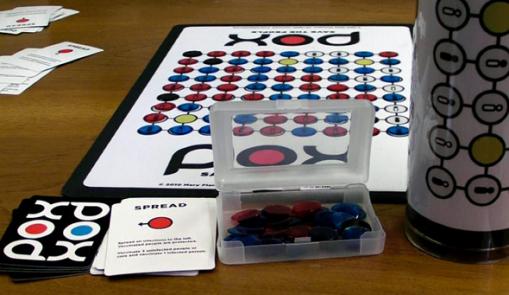
“Geopolitical space has always been a conflicted and fragile topic. Borders and frontiers are changing so fast, that sometimes it seems that our sociopolitical status can change from “citizen” to “immigrant” from one moment to another, or simply live under the “immigrant” status all your life. We’re getting used to words like refugees, enclaves, war, borders, limits –and the list has no end.” Ethel Baraona Pohl & César Reyes
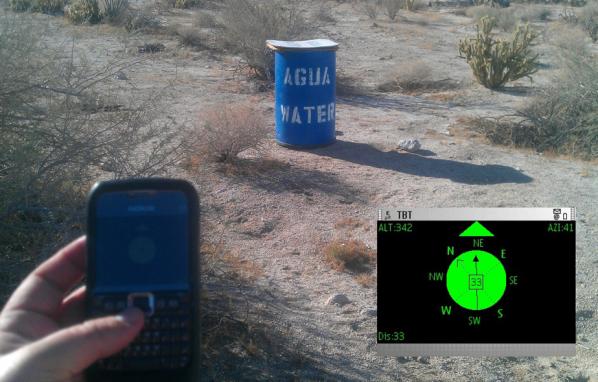
Ricardo Dominguez collaborated with Brett Stalbaum, Micha Cardenas, Amy Sara Carroll & Elle Mehrmand, on (TBT) (and others), on a hand-held mobile phone device that aids crossers of the Mexico-US border. An inexpensive tool to support the finding of water caches left in the Southern California desert by NGO’s for those crossing the border.
“The entire group of artists who are part of Electronic Disturbance Theater 2.0/b.a.n.g. lab working on the Transborder Immigrant Tool (TBT) was being investigated by UCSD and 3 Republican Congressmen starting on January 11, 2010. Then I came under investigation for the virtual sit-in performance (which joined communities statewide against the rising students fees in the UC system and the dismantling of educational support for K–12 across California) against the UC Office of the President (UCOP) on March 4, 2010. This was then followed by an investigation by the FBI Office of Cybercrimes.” [20] Ricardo Dominguez.
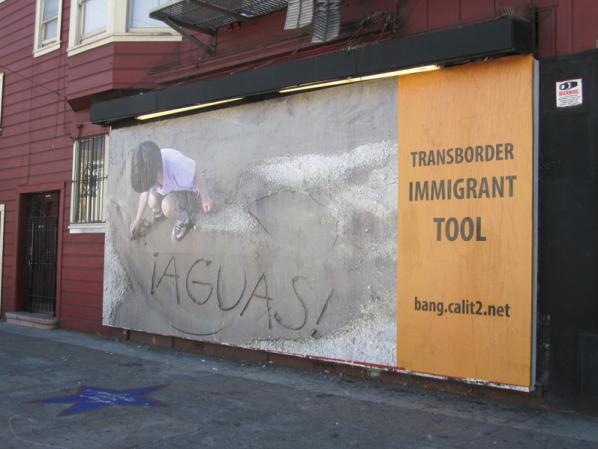
In an interview with Lawrence Bird Dominguez discusses that the TBT is still developing as a gps tool, but infers that it is not just a tool but also ‘border disturbance art’, consisting of different nuances existing as part of a whole with other factors at play. Such as a hybrid mix of things, objects and expressions “artivism, tactical poetries, hacktivism(s), new media theater, border disturbance art/technologies, augmented realities, speculative cartographies, queer technologies, transnational feminisms and code, digital Zapatismo, dislocative gps, intergalactic performances, [add your own______].” [ibid]
“Borders are there to be crossed. Their significance becomes obvious only when they are violated – and it says quite a lot about a society’s political and social climate when one sees what kind of border crossing a government tries to prevent.” [21] Florian Schneider
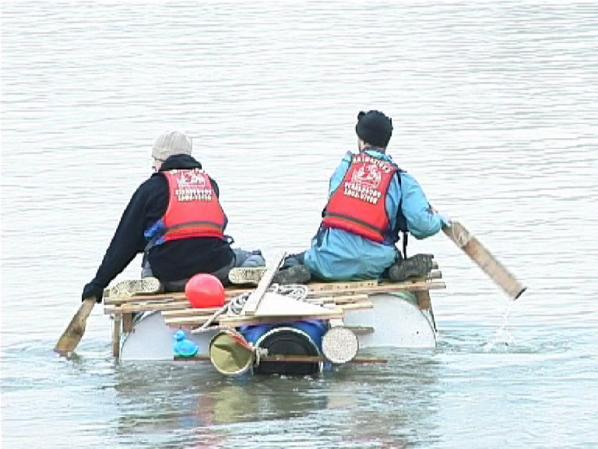
National borders are front-lines of political and social friction. The exerience of asylum-seekers and political migrants reflect some of the most significant issues of our time. Immigration is a toxic issue and unpopular with voters. Bunting’s BorderXing Guide, plays on the fear of invisible alien hordes of people crossing our borders illegally.
The context of this work fits well with issues about borders, whether it is about creating borders online or physical environments. Only those needing to cross a border are allowed access to the site, it is limited to ‘social clients’ who have a static IP (Internet Protocol) address and who, most notably, have gained the artist’s confidence. Such as peer activists and immigrants using libraries, colleges, cultural centres. The site allows those who would other wise end up crossing borders in harmful ways, such as in containers, on the backs of (and underneath) lorries and planes.
Heath Bunting’s BorderXing Guide website primarily consists of documentation of walks that traverse national boundaries, without interruption from customs, immigration, or border police. The work comments on the way in which movement between borders is restricted by governments and associated bureaucracies. It is a manual written not at distance like a google map, but by foot. A physical investigation, involving actually going to these places; trying these discovered routes out and then sharing them with others. A carefully calculated politics of public relations.
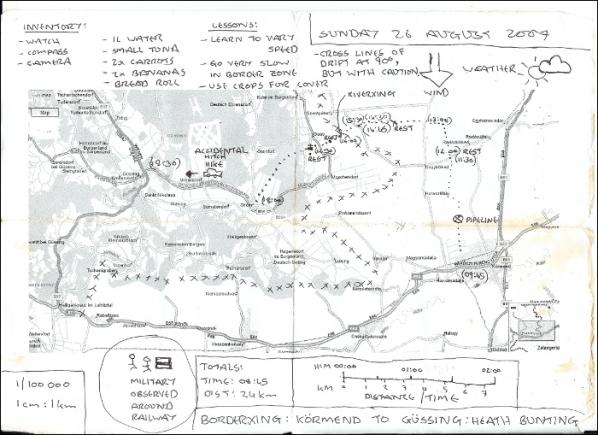
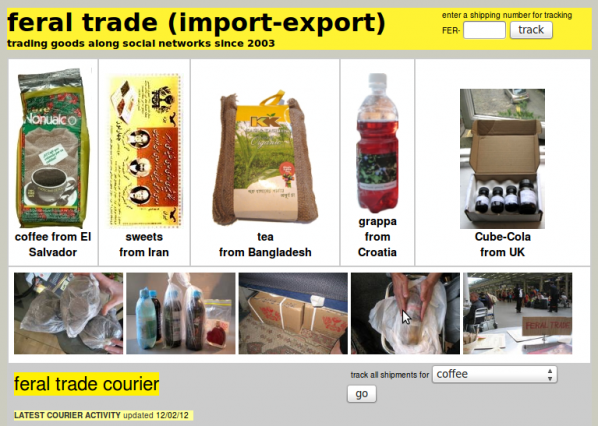
“The Feral Trade Café is more than just an art space that’s a working café, it’s about provoking people to question the way big food corporations operate by looking at the journey of the food we end up scraping into our pampered bins.” [22] Gastrogeek
Feral Trade uses social and cultural hand baggage to transport food based items between cities, often using other artists and curators as mules. Feral Trade products (2003-present), alongside ingredient route maps, bespoke food packaging, video and other artefacts from the Feral Trade network. The goods rangefrom coffee from El Salvador, hot chocolate from Mexico and sweets from Montenegro, as well as locally sourced bread, vegetables and herbs.
Kate Rich uses the word ‘feral’ as a process refering to being deliberately wild, as in pigeon, as opposed to romantic nature wild as the wolf. It is an unruly wild, shitting everywhere, disruption and annoyance in contrast to ‘official’ human structures and connected infrastructures. Feral Trade freight operates largely outside commercial channels, using the surplus potential of social, cultural and data networks for the distribution of goods. Working with co-operatives, small growers and food producers.
The Feral Trade Courier is a live shipping database for a freight network running outside commercial systems. The database offers dedicated tracking of feral trade products in circulation, archives every shipment and generates freight documents on the fly.
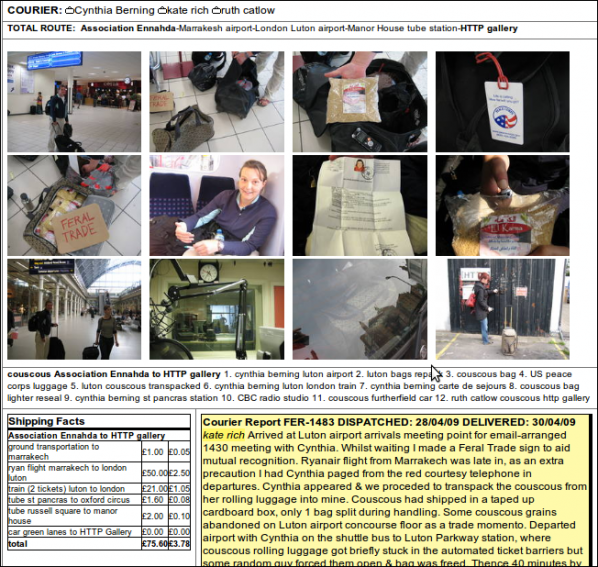
Every shipment is different and has its own story of how and where it was delivered from. Also included is information on who the carriers are with details about producers and their local culture as contextual information. The product packaging itself is also a carrier of information about social, political context and discussions with producers and carriers.
![Feral Trade at Furtherfield's Gallery (2009) [23] Link to exhibition](http://www.furtherfield.org/wp-content/uploads/2012/03/3657297700_42b1c26014_b.jpg)
Since the rise of the Internet individual and collective actions are symbiotically connected to the every day. In a world transformed, common people have access to tools that can change ‘our’ cultures independently; sharing information, motivating actions and changing situations. We know of the Arab Spring, the Occupy movement, Anonymous and Wikileaks and how successful they have been in exploiting technology and social networks. Technology just like any other medium is a flexible material. By tweaking, breaking and remaking ‘something’ you can re-root it’s function, change its purpose.
The links between these mass social movements and the artists here are not just relating to technology’s use but, a shared critique at the same enemy, neo-liberalism.
“”Neo-liberalism” is a set of economic policies that have become widespread during the last 25 years or so. Although the word is rarely heard in the United States, you can clearly see the effects of neo-liberalism here as the rich grow richer and the poor grow poorer.” [24] Martinez & Garcia.
At the same time as highlighting the continual privatization of human society. This form of art practice shows us the cracks of where a social divide of gate-keeping has maintained power within the Western World’s, traditional art structures. We now realize that the art canons we have been taught to rely on as reference are more based around privelage, centralization and market dominance rather than democratic representation or even just pure talent. Hacktivist artists adapt and recontextualize with a critical approach, towards a larger and more inclusive context beyond their own immediate selves. Demonstrating a respect and use of autonomy, and an awareness of social contexts and political nuances, freeing up dialogue for new discussions which include a recognition of social contexts, as a vital ingredient and valued resource in art. Re-aligning, reconfiguring the defaults of what art is today.
Lies, Lawlessness and Disbelief 1. Thinking Art and Capital: Conceptual Capitalism and Risk Management, is the first of five essays by Canadian artist & critical thinker, Katie McCain. McCain discusses how capitalism has become on the one hand all encompassing and on the other utterly unreal. Arguing that we need to be prepared to think the impossible so that resistance is able to grow.
DOWNLOAD the full text (including all 5 parts) here.
An Attempt at Thinking Art and Capital: Conceptual Capitalism and Risk Management
this sentence is a lie[1]
Capitalism is no longer the simple fordist system of production and consumption. It has, in its post-fordist lifetime become a more and more complex and intangible form. Today, it is a conceptual capitalism that has become unmoored, free floating, and all encompassing. As it continues, capital has the amazing ability to subsume everything it encounters, including criticism and resistance.[2] This proliferation seems to leave little room to resist – there is no longer a way to step outside and critique, since the death/failure of really existing socialism,[3] but this means only that critique must come from within, which is no small feat. It is a method riddled with paradox and self-defeat, but this perhaps reflects the nature of capital itself – as a system it offers up many moments of fissure or collapse that can be manipulated. The vastness of capitalism and the complexity of the bureaucracy necessary to hold together a system of “order” that directly contradicts chaos theory inevitably begins to circle and break down. It is these moments of circuity, of fissure, that this essay will focus on.
Contemporary capitalism is conceptual capitalism – it runs on the idea of money in the form of loans, mortgages, hedge funds, junk bonds; it is fictional money and a fictional market based on an elaborate system of risk management, which implies some intrinsic (but impossible) knowledge of the future. It also seems that this fictional market can be bolstered by belief alone. ‘The financial crisis of 2008 showed enormous sums of money spent not on a real, concrete problem, but rather to restore belief in the market. Capital, in all its intangible forms, is the Real of our lives’.[4]
If what Žižek states is true, and capitalism can be equated with Lacanian theory of the Real[5], it again seems to close down access to it further still. It is opposed to reality, which encompasses the Imaginary and the Symbolic and it is located beyond them, out of reach, but exerting influence. It is undifferentiated, without fissure, always in its place.[6] It is impossible to imagine, to verbalize, to integrate in the Symbolic order. But perhaps this impossibility is the moment, the fissure, which can bring about its demise.
The signification of the Real is attempted in the Symbolic order, but is impossible. The Symbolic structures everything, and through repetition is subject to the death drive. That is, in its constant return to enjoyment the Symbolic transcends beyond pleasure in search of death. This could be seen as some radical call to accelerationism, a desire to weaponize capitalism against itself, and in a way it is, but not in the apocalyptic sense that accelerationism implies, pushing it to its extreme.[7] Rather, a radicalism could exist in simply exploiting these impossibilities, finding weak points in rationality, and the supposed rationality of capitalist systems, in its inherent bureaucracy.
This Symbolic capitalism is contingent in regards to the Real; it does not spring from it[8], but is created out of a desire to verbalize the impossible, to understand something that is impossible to understand, to socialize this intangible system. It could be said that it is impossible to speculate on the origins of the Symbolic once it is in place, generated as it is from a primal prohibition, a negation, le-nom-(non)-du-pere[9]; once capitalism is in place, it becomes impossible to see an alternative to the universe it creates.[10] This is mostly due to the all-encompassing nature of conceptual capitalism. Perhaps then, the ability to catch it in a paradox, in a state of bureaucratic failure, could open up a space to trip it up and think other and could offer a passage a l’acte.
other other other say it three times in the mirror
Employing the idea of a contingent conceptual capitalism, that is, one which is not necessary, which is indifferent to existence, one can argue that in fact it is very possible to think of the other to capitalism. It is logic and rationality that trips it up, that prevents any thought of the alternative, just as it is strictly impossible to think infinity, or an ancestral time prior to human existence. Science can prove facts about both ancestral time and descendant time (prior to and after the death of consciousness), but philosophy is paradoxically stuck with the idea of a relation to the world before or after the existence of thought[11]. How can thought think the death of thought?[12] According to Hakim Bey it is impossible to really conceive of death – it appears rather as ‘an unpleasant vagueness’[13] – the death considered is never actual death. Similarly, how can one think anti-capital from within conceptual capitalism? If it is permitted that both the universe and capitalism are contingent, and therefore completely indifferent to human existence and human thought, then the possibility for alternatives opens up.
A speculative and realistic approach to thinking capital can restore our ability to resist.
Once it is granted that the tension between equality and liberty cannot be reconciled and that there can only be contingent hegemonic forms of stabilization of their conflict, it becomes clear that, once the very idea of an alternative to the existing configuration of power disappears, what disappears also is the very possibility of a legitimate form of expression for the resistances against the dominant power relations.[14]
If conceptual capitalism encompasses everything, there is less and less physical space for resistance, unless resistance moves into the conceptual realm as well. The idea, the imaginary, the psychical: these all offer a variety of forms of resistance to a boundless capital. For the concept, in its true dematerialized form, is capable of altering systems, of bolstering illogic, of predicting the future. It is the very boundaries of thought, beyond which lies psychosis (the lack of the Symbolic, or capital) that prove to be integral in terms of non-knowledge and the unknown, a knowledge of the unknown, or a thinking of the impossible. Perhaps lies, fiction and the radical un-real can be the site of production for a capitalist alternative.
Ideas are characterized as both distinct and obscure. They are distinct insofar as they are perfectly differentiated via the reciprocal determination of relations and the complete determination of points – but obscure because they are not yet differenciated – since all Ideas coexist with one another in a state of virtual perplication.[15]
Ideas are simultaneously two things, distinct and obscure. Graham Harman introduces the idea as something not only possible, but actual insofar as an idea is thought as an image. This introduces all things possible to the realm of the actual, even if only in thought.[16]
The contemporary mantra of risk management as a fundamental economic strategy is in itself paradoxical. If, in fact, a risk could be managed, then it would not really be considered a risk. This term depends on the belief in an organized system of capitalism that extends both directions through time – the idea that it is a constant that can be depended upon, is predictable, forever. In fact, the amount of bureaucracy that goes into even the tiniest element of conceptual capitalism manifests itself through many circular moments, many points of fissure. In compatibility with Gödel’s Theorem of incompleteness, no system can be totally defined without incurring some kind of paradox. There will always be statements that are true, but that cannot be proved within the system. If the system is capable of proving certain basic facts, then one particular truth the system cannot prove is the consistency of the system itself.[17]
Risk management is nothing more than a reaffirmation of our collective belief in the predictive qualities of financialization, our collective consent to the idea that an intangible, unmoored, all-encompassing economic system can be predicted. In fact, prediction alone is a falsity that humans fall prey to frequently; the notion of the future as anything other than a continuation of the past is a mental operation at which the mind continues to fail. When thinking of tomorrow, the mind just projects another yesterday.[18] The future, or rather a human relation to the future, is deemed philosophically impossible. After all, how can consciousness think something devoid of consciousness?[19]
It is impossible for thought to think an object or event in-itself – in this sense, thought can only experience a relation between the subject and the object-as-given. Lacan argues in his fifth discourse that we do not derive libidinal enjoyment from object relations, but rather it is capital’s link of subject-to-object that frustrates and isolates the subject. Capitalism is successful in the sense that it produces a continual desire, but no longer satisfies it, which for Lacan – and a world full of neurotics – falls in line with our drives.[20]
Lacan also reorients Marx’s analysis of surplus value. An older, more tangible form of capitalism sold objects for more than it cost to make them. This ‘surplus value’ is what Marx stated that the capitalists stole from the proletariats – it was used by the capitalists for leisure or libidinal enjoyment. Now, capital demands this surplus value to be re-invested at the level of production to create an unrelenting, perpetual motion machine of production and consumption of money by a business in-itself. We are now, according to Lacan, all proletariats, subject to the will of capital that has taken over the role of master from the capitalists themselves.[21]
The debt circulates on its own orbit, with its own trajectory made up of capital, which, from now on, is free of any economic contingency and moves about in a parallel universe (the acceleration of capital has exonerated money of its involvements with the everyday universe of production, value and utility). It is not even an orbital universe: it is rather ex-orbital, ex- centered, ex-centric, with only a very faint probability that, one day, it might rejoin ours.[22]
This faint probability is the only thing tying us to capital.
Adorno, Theodor.W. Negative Dialectics. Translated by E.B. Ashton. New York: Continuum, 2005. First Published 1966 by Suhrkamp Verlag.
Associated Press. “Romanian Witches Curse Latest Government Clampdown,” The Guardian, February 9, 2011, main section, 20.
Bartlett, Monica Y., Aida Cajdric, Nilanjana Dasgupta and David DeSteno, “Prejudice from Thin Air: The Effect of Emotion on Automatic Intergroup Attitudes.” Psychological Science 15, no. 5 (May, 2004): 319-324.
Baudrillard, Jean. Global Debt and Parallel Universe. Translated by Francois Debrix. http://www.egs.edu/faculty/jean-baudrillard/articles/global-debt-and-parallel-universe/ (accessed April 4, 2011).
Baudrillard, Jean. Radical Thought. Translated by Francois Debrix. Edited by Sens & Tonka. Paris: Collection Morsure, 1994.
Bey, Hakim. T.A.Z.: Temporary Autonomous Zone, Ontological Anarchy, Poetic Terrorism. New York: Autonomedia, 2003. First Published 1985.
Bradley, Will. “Guarana Power.” in Self-Organization/Counter-Economic-Strategies, edited by Bradley, Hannula, Ricupero and Superflex, 311 – 333. New York: Steinberg Press, 2006.
Brassier, Ray. “I Am a Nihilist because I Still Believe in Truth” Interview with Marcin Rychter. Kronos: March 4, 2011 http://kronos.org.pl/index.php?23151,896 – accessed: march 23rd, 2011.
Brassier, Ray. Nihil Unbound: Enlightenment and Extinction. Basingstoke: Palgrave McMillan, 2007.
Critical Art Ensemble. Marching Plague: Germ Warfare and Global Public Health. New York: Autonomedia, 2006.
Declercq, Frédéric. Lacan on the Capitalist Discourse: Its Consequences for Libidinal Enjoyment and Social Bonds. Psychoanalysis, Culture & Society 2006, 11, (74-83).
Fisher, Mark. Capitalist Realism: Is There No Alternative? Winchester: Zero Books, 2009.
Foucault, Michel. Power/Knowledge: Selected Interviews & Other Writings: 1972-1977. New York: Pantheon Books, 1980.
Fromm, Erich. The Fear of Freedom. London: Routledge & Kegan Paul Ltd., 1966.
Groys, Boris “Art and Money,” E-Flux 24 (2011), http://www.e-flux.com/journal/view/226.
Harman, Graham. Circus Philosophicus. Winchester: Zero Books, 2010.
Hofstadter, Douglas R. Gödel, Escher, Bach: An Eternal Golden Braid. London: Penguin Books Ltd., 1979.
Holt, Jim. “The Way We Live Now: Against Happiness,” New York Times, June 20, 2004.
Horizon: What is Reality? Documentary. Directed by Helen Shariatmadari. BBC: ep. 9, 2011.
Huberman, Anthony, ed. For the Blind Man in the Dark Room Looking for the Black Cat that Isn’t There. St. Louis: Contemporary Art Museum St. Louis, 2009.
Huxley, Aldous. Brave New World. London: Vintage Books, 2007. First published 1932 by Chatto & Windus.
K-Punk Blog. http://k-punk.abstractdynamics.org/archives/004421.html
Kafka, Franz. The Castle. Middlesex: Penguin Books Ltd., 1964. First published 1926 by Das Schloss.
Kurant, Agnieszka and Nassim Nicholas Taleb. “Unknown Unknowns: A Conversation between Agnieska Kurant & Nassim Nicholas Taleb about the Benefits of Uncertainty.” Frieze, September 2010, 127 -135.
Lacan, Jacques. “Seminar on the Purloined Letter.” Yale French Studies 48 (1972): 39-72.
Lacan, Jacques. The seminars of Jacques Lacan: Book II: The Ego in Freud’s Theory and in the Technique of Psychoanalysis 1954-1955. Ed: Jacques-Alain Miller. New York: W. W. Norton and Co., 1991.
MacKinnon, Catharine A. “Feminism, Marxism, Method and the State.” Chicago Journals 8, no. 4 (1983), 635-658.
Meillassoux, Quentin. After Finitude: An Essay on the Necessity of Contingency. London: Continuum, 2008.
Mouffe, Chantal. The Democratic Paradox. London: Verso, 2000.
Noys, Ben. Persistence of the Negative: A Critique of Contemporary Continental Theory. Edinburgh: Edinburgh University Press, 2010.
Place, Vanessa and Robert Fitterman. Notes on Conceptualisms. New York: The Ugly Duckling Presse, 2009.
Stephen, Kylie. “Sexualized Bodies.” in Real Bodies: A Sociological Introduction, edited by Evans and Lee, 29-45. Basingstoke: Palgrave MacMillan. 2002.
Taleb, Nassim Nicholas. The Black Swan: The Impact of the Highly Improbable. London: Penguin Books Ltd., 2007.
Thacker, Eugene. “Nihil Unbound” review of Nihil Unbound: Enlightenment and Extinction, by Ray Brassier, Leonardo 42: no.5, (2009): 459-460, http://muse.jhu.edu/journals/leonardo/v042/42.5.thacker.html (Accessed April 2, 2011).
The Trap: What Happened to Our Dream of Freedom? Documentary. Directed by Adam Curtis. BBC Two: March 2007.
Trotta, Roberto. “Dark Matter: Probing the Arche Fossil.” Interview with Robin Mackay. Collapse: Philosophical Research and Development 2 (2007): 83-169.
Vidal, John. “Bolivia Enshrines Natural World’s Rights with Equal Status for Mother Earth.” The Guardian. April 11, 2011. Main section, 15.
Weaver, Matthew. “Romanian Witches to Cast Anti-Government Spell.” The Guardian. January 7, 2011. Main section, 23.
Wilson, Eric G. Against Happiness. New York: Sarah Critchton Books, 2008.
Žižek, Slavoj. First as Tragedy, Then as Farce. London: Verso, 2009.
Žižek , Slavoj. The Iraqi Borrowed Kettle. http://www.lacan.com/zizekkettle.htm (accessed April 4, 2011).
Žižek, Slavoj. What Rumsfeld Doesn’t Know that He Knows About Abu Ghraib. (2004) http://www.lacan.com/zizekrumsfeld.htm (accessed April 4, 2011).
Featured image: Martijn de Waal, co-founder of The Mobile City, introduces the conference (image courtesy Virtueel Platform)
On Feb. 17th Amsterdam hosted Social Cities of Tomorrow, a conference on new media and urbanism. Adapting its title from Ebenezer Howard’s Garden Cities of Tomorrow, but taking equal inspiration from the work of Archigram, the conference presented a snapshot of the direction cities are moving today: as conventional means of planning and designing are renegotiated through our engagement with new media technologies:
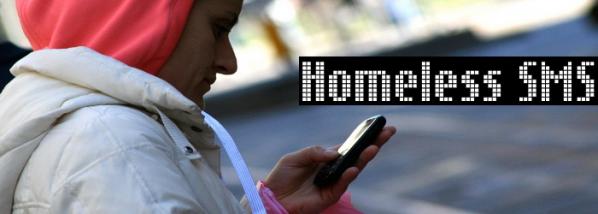
Organized by The Mobile City and Virtueel Platform, the event showcased best-practise examples of the use of media in urban analysis, design, art and activism. These ranged from “Homeless SMS”, a text-messaging system designed to provide information to the 70% of homeless Londoners who own cell phones; “Amsterdam Wastelands”, an on-line mapping of disused sites in Amsterdam and Zaanstad; “Koppelkiek”, a game project in which residents of a troubled area of Utrecht collected “couple snapshots” (in couples of friends, relatives or complete strangers), promoting social interaction through play; and “Urbanflow”, and New York-based project to rethink the contents of urban screens. In all, a dozen such projects were presented at the conference.
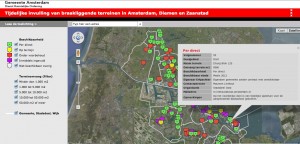

http://www.socialcitiesoftomorrow.nl/showcases
Immediately preceding the conference an intensive three-day workshop took place at ARCAM, the Amsterdam Centre for Architecture. This event brought together two dozen interdisciplinary creatives from around the world to tackle urban issues in four current case-studies: Haagse Havens, Den Haag; Zeeburgereiland; Strijp-S Eindhoven; and the Amsterdam Civic Innovator Network (a proposal to open up Amsterdam’s civic resources to distributed control by citizens). Working with local stakeholder organizations, the participants brainstormed how to leverage new media to solve intractable or new problems in these real-world sites.

http://www.socialcitiesoftomorrow.nl/workshop/the-four-cases
Also at ARCAM, a roundtable discussion on the alternative forms of trust emerging out of new media conditions was held, with panelists (below, left to right) Tim Vermeulen, Henry Mentink, Rietveld Landscape, Scott Burnham, Michiel de Lange (image courtesy Aurelie).

Keynote speakers Usman Haque, Natalie Jeremijenko, and Dan Hill concluded the conference with a panel discussion that placed the presentations in the context of distributed technology, contemporary art, social innovation, and architecture (image courtesy Virtueel Platform).

Featured image: ‘Promised Land’ design of transmediale 2k+12
Everything is not connected was the title of one of the talks organised as part of the in/compatible symposium at transmediale 2k+12 (2012), precisely the keynote speech of Graham Harman for the section titled systems. But this year’s programme of transmediale was all about connectedness, or I’d better say, about a curatorial structure of connectedness and subtle linkage.

The festival’s format was one of visual and conceptual reminders, and this became evident at the very beginning and during the opening ceremony, in the auditorium of the the Haus der Kulturen on the 31st January.
At the moment of opening a power point presentation, the new artistic director Kristoffer Gansing seemed to experience a technical problem as his file would not open. A technical assistant was then called on stage to fix it, and while we all giggled and looked at each other thinking that this was somewhat like a paradox for a festival devoted to the exploration of art, technology and media culture, we soon realised that the dooming technical failure was a pretext for one of the Prepared Desktop performances by glitch-artist jon.satrom.
Thus, from the very start, we experienced what Gansing often defined as a festival which “is an incompatible being”, suggesting that the 25th edition of transmediale would be different, perhaps more oriented to a multidirectional engagement with its audience and, surely, aimed at making us aware of how much technology is intrinsically part of our everyday lives – physically, mentally and also politically. It seems that Gansing had worked towards making us feel like explorers in order to experience what he described in his curatorial statement as the “in/compatible moment”, the “moment of stasis” resulting from the clash between things that were supposed to flow and converge peacefully within a system. That unforeseeable clash generated by an incompatibility which, according to him, is to be seen (and perhaps also sensed) as a moment full of potentials, as a gap which allows a new rearrangement of the elements of a given system – be it artistic, social, economic or political.
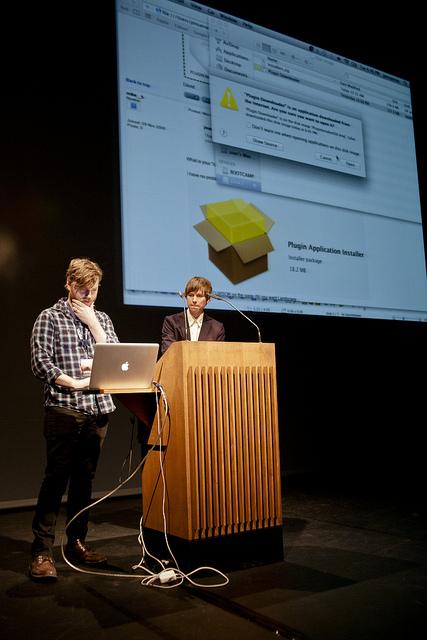
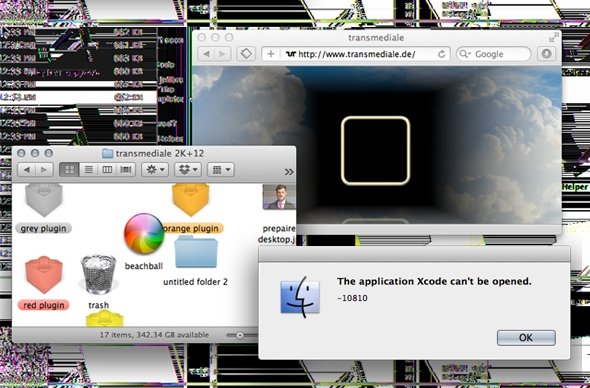
This ‘curatorial tactic’ marked the rich programme of transmediale 2012, which spanned from exhibitions to academic research networks, from online artistic interventions to talks and live performances – worth a mention is also the overall design of the festival’s contextual material, called the Promised Land design theme, which with its retro digital-pop aesthetic [1] seemed to have been devised to reinforce the idea of the clash, the tensions at work within the notion of technological convergence (“the myth” of contemporary society), starting from the very aesthetics of it.
The connectedness I mentioned above is very tangible when looking back at the main themes discussed at the in/compatible symposium – which was divided into three thematic segments:
systems, publics and aesthetics – in that they could be found as extensions across the whole programme, which in turn was developed across six sections:
1- the exhibition Dark Drives. Uneasy Energies in Technological Times curated by Jacob Lillemose
2- The Ghost in the Machine performance programme curated by Sandra Nauman
3- the video programme Satellite Stories curated by Marcel Schwierin
4- 25 Years, a series of events, amongst which talks and video screenings, about “areas of conflict between old and new” that were devised to mark the 25th anniversary of the festival
5- Featured Projects, a series of special parallel projects, such as web-based and site-specific
interventions
6- last but not least, the new addition of reSource for transmedial culture, an “interface between the cultural production of art festivals and collaborative networks of art and technology, hacktivism and politics” presented as a series of ongoing events (workshops, discussions, lectures and performative interventions) curated by Tatiana Bazzichelli.
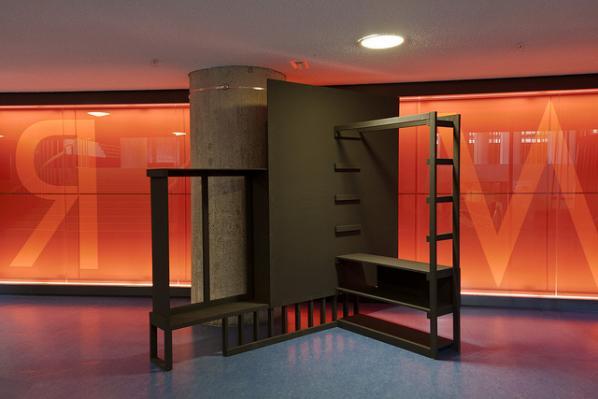
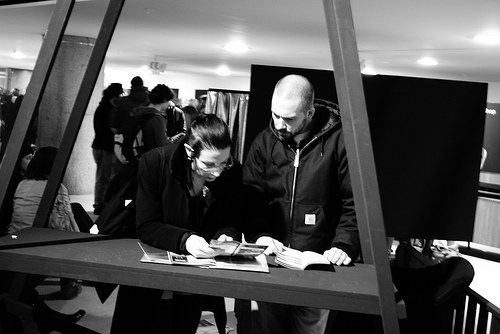
Taking a step back to look at the overall thematic framework of the festival before digging into the specifics of each programme, what should be emphasised is the effort that was made to strengthen the transdisciplinary nature of the festival as a whole. In fact, each section of the programme inserted itself into the wider discourse of cultural production; putting a stress on how deeply technology is intertwined with the every day while looking at the relationship between art and technology from a socio-economic and political perspective that was permeated by an historical orientation. And the latter is precisely what makes this 25th edition different from those I had experienced before.
Gainsing’s perspective – as it was often stated by his collaborators throughout the festival – is that of a media archeologist; and in this sense he occupies a specific place in the media theory-scape of the city of Berlin, which houses the Institute for Time Based Media (Berlin University of Arts) where Siegfried Zielinski is the Chair of Media Theory. As many might know, Zielinski is the theorist who coined the term (or better still, founded the field of) media archaeology with his book Deep Time of the Media (MIT Press, 2002). I would then say that the methodological approach of the artistic director, as well as that of the four festival’s curators, was the one which looks at a present “linked to a past pointing at a possible future”, adopting a perspective that is different and finds “something new in the old” rather than seeking “the old in the new” (quotes from Zielinski, 2002). This is probably the reason of the festival’s holistic character, of the existence of critical and aesthetic linkage between the various panel discussions and performances, research projects and art installations.
This year’s symposium, across three different but converging angles, looked at the tension between functionality and disruption in order to address how the gap existing between the two has been (and could be) “productively used” by artists, as well as by society at large, in relation to available technology – mostly digital and web-related.
The strong connection existing between all panels – grouped under systems, chaired by Christopher Salter; publics, chaired by Krystian Woznicki; aesthetics, chaired by Rosa Menkman– was given by the historical approach of their explorations into the present. Their positions were those according to which it is not technology that impacts society, but it is almost the reversal: it is society – and artists – who, with their behaviours and actions, transform it, generating a new language and new possibilities within established systems, or failing systems. One way to embrace this type of perspective was described by Graham Harman in his keynote speech: it is through differentiating “between background and foreground” and bringing the latter “into consideration”, through accepting obsolescence as something inherent to the state of the technological thing and through embracing the fact that mediums change, that new ways of thinking and understanding reality can be established.
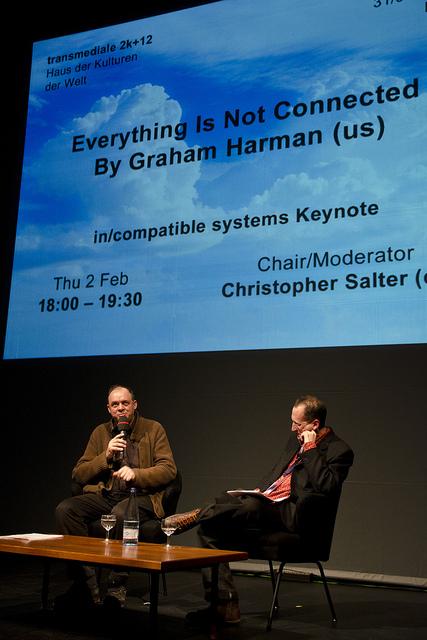
In this regard, the in/compatible aesthetics panels brought about interesting paradoxes in relation to media archeology and technological historicism, such as the necessity to move away from nostalgia for the past and avoid what could perhaps be termed as techno-romanticism. Through a series of panels, spanning from Uncorporated Subversion. Tactics, Glitches, Archeologies to Unstable and Vernacular. Vulgar and Trivial Articulations of Networked Communication, this section of the symposium presented a variegated array of artistic and research practices (from artist Olia Lialina to media theorist Jussi Parikka) that are concerned with establishing methods for challenging given systems, their codes and protocols, in order to establish new languages and modes of operation. All of them presented different artistic scenarios embedded in current socio-cultural frameworks, stressing the fact that “cultural history is shaped by users more than its inventors” (quote from artist and programmer Dragan Espenschied‘s presentation during the Unstable and Vernacular panel).
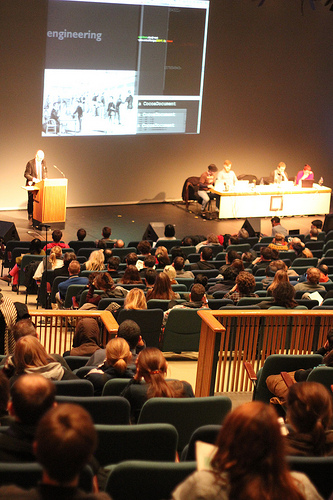
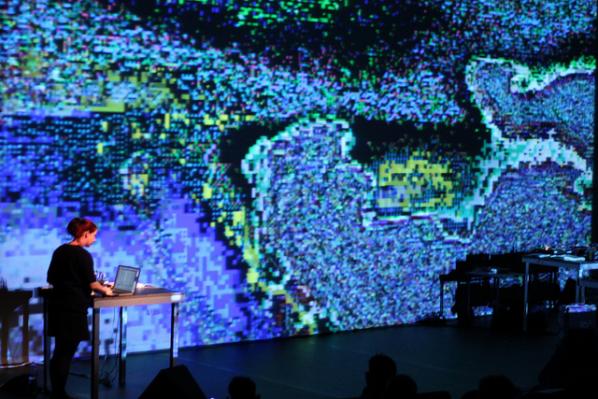
The publics section dealt with “forms of activism and social resistance” that emerge from incompatibility with the economic-political systems. In the instance of the Norifumi Ogawa in his talk Social Media in Disaster, during which he gave a very detailed insight into the “productive and effective” uses of social media during the recent Japanese earthquake and the consequent accidents at the Fukushima’s nuclear plant.
According to the exhibition curator Jacob Lillemose, Dark Drives “explores the idea that uneasy energies exist in technological times” and offers “a thematic reading and an historical mapping of the last fifty years, expressing a critical attitude to existing phenomena as well as exploring possibilities of reinvention”. And it does so with “no promise of overcoming” them (quotes from Lillemose’s curatorial statement).
In fact, the exhibition included works by 36 artists spanning different cultural fields as well as periods. The inclusions ranged from Ant Farm’s Media Burn, Chris Burden’s Doorway to Heaven and William S. Burroughs/Antony Balch’s The Cut-Ups (late 60s and 70s) to Art 404’s 5 Million Dollars 1 Terabyte, Constant Dullaart’s Re: Deep Water Horizon (HEALED) and jon.sotrom’s QTzrk (2010/2011), all while moving through the practices of artists attached to the net.art movement, such as Heath Bunting’s Skint – The Internet Beggar and JODI – the latter with a new light installation, LED PH16/1R1G1B, dated 2011–. Included were also works produced in the 80s by music bands like SPK with their Information Overload Unit. Not only, but the show also presented works which are usually not associated with the conventional art circuit, such as the TV programme Web Warriors produced by Christopher Zimmer (2008) and the music video Come to Daddy by Chris Cunningham/Aphex Twin (1997), along with, as a reversal, old(er) media-oriented work, such as the series of computer prints Leaves by Sture Johannesson, which can be read as early pieces of conceptual art.
This condensed list is to say that the amount of artistic and cultural material on display in the exhibition and the trajectories that it opened were broad to such an extent that Dark Drives functioned more as a general narrative survey than a show with a clear proposition. It was a survey of how uneasy energies might materialise as consequences of the modes and methods in which technology is used and understood, with no much distinction drawn between technology in electronic, computational or digital times.
Dark Drives did not aim to address further its initial statement, nor to narrow down the kind of relationships (and their reasons) between historical instances and contemporary ones; and from my perspective this was its flaw. However, this is the kind of exhibition that a festival like transmediale eventually needed, because to my knowledge this sort of display and curatorial approach had not been presented before: an exhibition which finally embraced the inclusion, with no hierarchies or differentiation in terms of choices of display, of works conventionally shown in gallery spaces along with those traditionally related to (ahem) the still-existing ‘niche of new-media experts’.
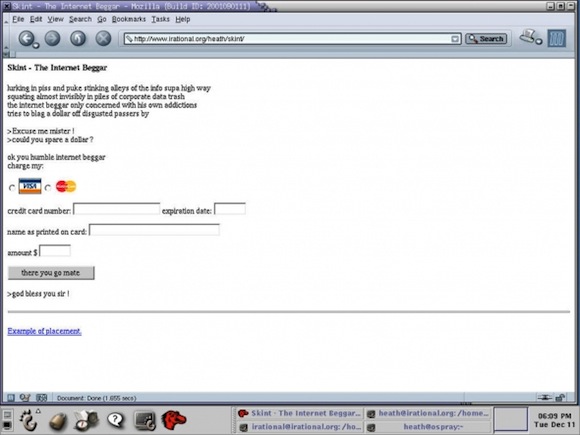
Dark Drives might not be a very daring exhibition if placed outside the context of a media art festival like transmediale, but it is certainly almost subversive in this context, and in comparison with its precedents. The exhibition installation was clever and atmospheric and, as it was for the festival’s format, it was dotted by visual and aesthetic reminders. I’ll give you an example amongst many and various ones that you could have spotted in the show: formulas by Peter Luining (2005), which is a video about manipulating a screen-grabbed image in Photoshop till it becomes a black screen, was shown just a work before jon.sotrom’s Qtzrk (2011), another video based on the process of image deformation – in this case through the use of QuickTime 7; the latter, was, in turn, shown just another work before Heath Bunting’s Skint – The Internet Beggar (1996), a website that operates as a service through exploiting the potentials offered by the network system. The three works all adopted the framework of computer desktop as a display platform for their artistic interventions, but also as a production space. And although each artist’s agenda and research area were different, their proximity made these distinguishing elements more evident, highlighting various ways of activating modes of production that diverge from those of the system within which these artists operate.
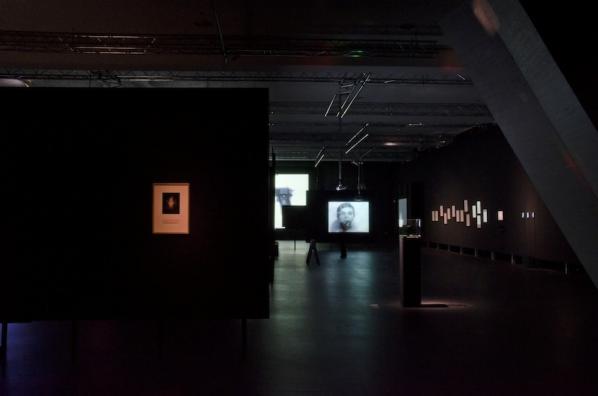
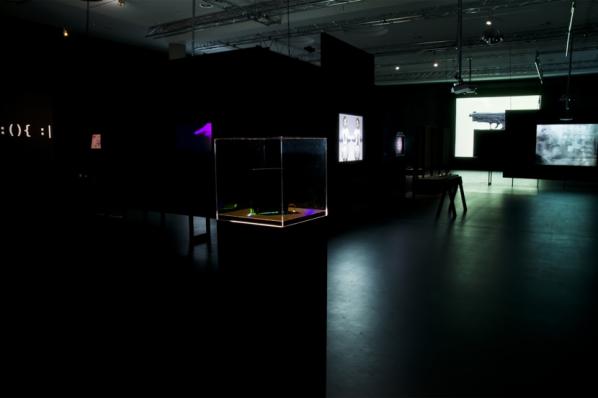
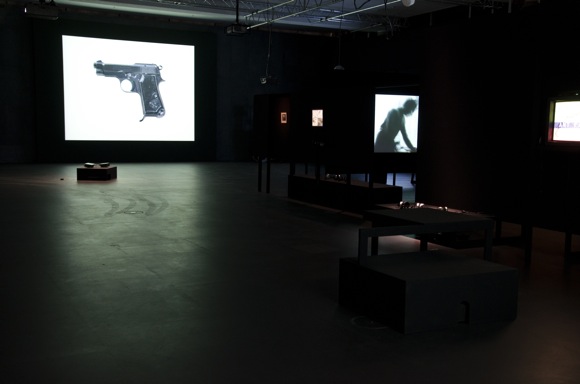
Similarly to what I have just described, it was Dark Drives as a whole that guided the visitor all the way through its display towards specific thematic directions, which were suggested by the installation in conjunction with the many visual and aesthetic links. But simultaneously, the visitor would also be free to follow the other and many trajectories arising from the content of each specific work, and this flexibility made the exhibition an attractive narrative territory ready to be employed for further explorations.
This section of the programme has been devised as an ongoing project by curator and researcher reSource is an initiative that started before transmediale festival with the gathering of an international network of PhD researchers for a conference and workshop held at the University of Arts in Berlin last November. The outcome of this collaborative network was launched on the second day of the festival, in the form of a research newspaper titled World of the News – Thank you & Goodbye . This newspaper operates as a platform in which an array of researcher, most of whom practising artists, presented a series of essays and interviews looking at the “unresolved questions and paradoxes of media technology” and how they might impact (and redefine) not only artistic production but also research processes and academic conventions, such as peer-review systems or the definition of what is currently accepted as ‘proper research’ within the academia.
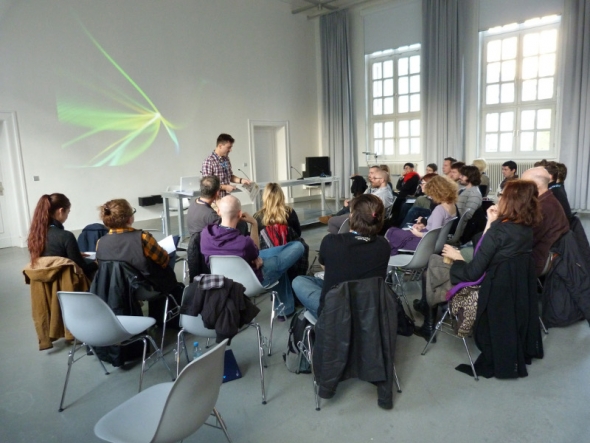
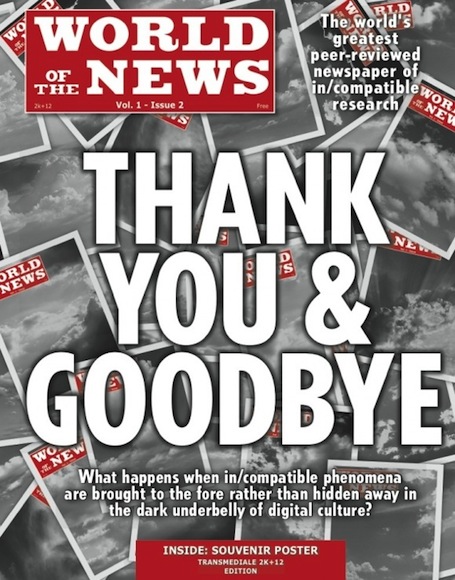
World of the News gathers a very well-thought through research material, and it does challenge academic formats, bringing forth the necessity (and preciousness) of collaboration and dialogues across disciplines, forms and formats.
The above is only one of the activities that were part of reSource; in fact, its programme was divided into five different sub-themes, Methods, Activism, Networks, Markets and Sex, each of which ranged from panels to presentations and workshops.
One of the proposed panel was titled Coded Cultures – Sub-Curatorship Beyond Media Arts and drew on a previous event organised by the group 5uper.net in Vienna, Coded Culture: The City as Interface (2011). Although aimed at addressing questions about curatorship and media art festivals, thus the public sphere, I wonder why curatorship as a practice within the field of new media and, supposedly within what was termed as “beyond new media art”, were not discussed more in depth, especially given the changes that transmediale exhibition itself proposed. If Joasia Krysa presented her specific approach to curating as a system that is informed by technology and thus embraces its inherent systems, like software codes and protocols of Internet and digital technology, in order to change the hierarchy of power; the other invited curators seemed to lack a depth in the discourse. The whole panel unfortunately stranded in general statements such as “technology changes the role of the curator” or “the curator does not want to define itself as a curator anymore, but as a coordinator and a producer”; a cliched conversation that – opportunely – ended with Krysa throwing on the table of discussion Christine Paul’s definition of “curator as filter feeder”.
Many other were the events presented at transmediale, such as the visually stunning, and purely analogue, performance of Joshua Light Show for the The Ghost in the Machine performance programme . At different times during the week of the festival Joshua Light Show performed with different musicians, such as the one man band Oneohtrix Point Never, bringing to light the beauty and magic that old(er) media can (still) give to a public of a “transmedial” festival.
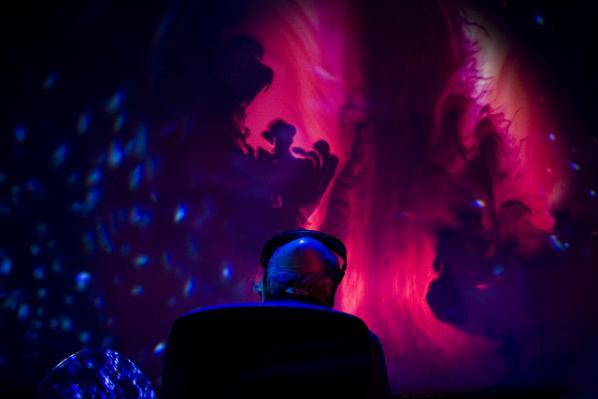
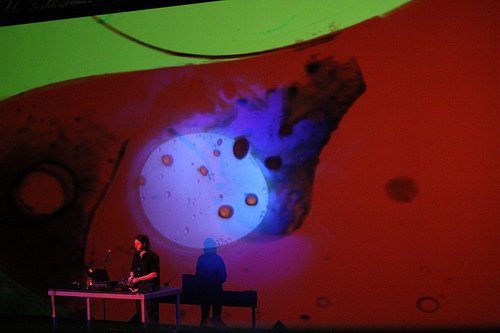
As a final round-up, it is also to be noticed that in/compatible embraced slightly more extensively the sphere of online production and distribution, specifically in conjunction with the 25 Years, Satellite Stories and Featured Projects programmes.
If when browsing the transmediale website you experience some strange episodes, such as pages merging into each other when scrolling up and down, that is because of a site-specific intervention by Danja Vasiliev and Gottfried Haider – the developers of a Content Manipulation System called HOTGLUE which allows to construct websites directly in a web-browser.
Also as part of 25 Years there was a video installation <collaborative documenting / archiving on netart.activities> initiated by artist Constant Dullart and art historian and artist Robert Sakrowski. The duo had devised an open database system which employes YouTube as a repository for net.art projects. This project tackles issues related to hardware and software obsolescence in relation to the (often impossible) access to early net.art projects, and proposes a way of archiving them by filming an ‘audience-in-action’ during the browsing; a strategy which is also useful for tracking users’ behaviours and thus highlight the changes brought about by technological development. Dullart and Sakrowski also led a workshop at the transmediale headquarter, as well as presenting their work during the panel discussion web.video the new net.art?.
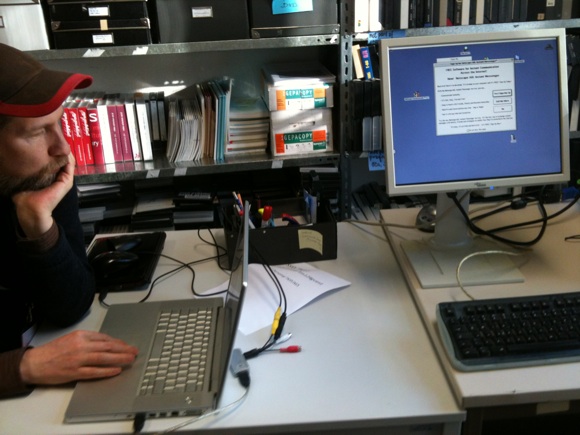

As a last mention, the video programme Satellite Stories was launched at the opening night with Screening Re-enactment Videospiegl, a looped video screening which connected the present of the festival with its history, its archive. In fact the festival first opened in 1988 as VideoFilmFest, and the Videospiegl selection of early videos is now accessible on transmediale website; hopefully marking the start of an archive which will be online and for all.
The online activity described here is certainly not enough for a festival like transmediale, which should investigate thoroughly the relationship between art festivals, artistic production and online distribution; but at least it seems a start for what is a much needed new exploration to be carried out by the organisers.
There is one more issue that I feel was only and often superficially addressed by this edition of transmediale. There were many mentions, in theory, of capitalism and its ramificated systems, such as the closeness of network systems which before were open and the consequent failure of techno-utopian ideals. However, there was little evidence of this in the artworks on display, nor in the site-specific installations presented. I don’t support the idea that artists should be literally political, or activists, but when I experienced jon.satrom’s performance at the opening, it came across as a sort of exercise in showing what can be done through bending technology to generate new languages and approaches to that which is established. In a way it reminded me again that we often operate within boxes, and rarely attempt to challenge the form and format of what is given to us. But then, most of us already know this. And although in/compatible as a festival did not want to give answers but generate a context for formulating questions, as Gainsing specified in his presentation, I felt the need of a next step, a step made of actions, which to me was only fully present in the reSource programme of Tatiana Bazzichelli. When I rethink of jon.sotrom’s performance, and I am very aware I am using him as an example to point to a larger scenario (my apologies to the artist!), I cannot refrain from thinking that the system he was challenging was that of an Apple Macintosh software, built on visual tricks like Spaces, Mission Control, etc; a system that perhaps needs to be challenged at a deeper level since, for instance, its reliance on the exploitation of developing countries workers?

This is just a final thought.
That said, I am really looking forward to seeing how transmediale will move forward, will it take the next step from this initial change?. It will be interesting to see how this merging of historical perspectives, academic research and artistic innovation will stir up more conversations and, as I said, more actions for another exploration of the relationship between contemporary cultural production, media and technology.
Please note: since the richness of the programme, I have highlighted my personal experience of the festival, so that this review highly reflects the choices I made about what to attend and what I (unfortunately) left out from my jammed daily schedule.
Michael Szpakowski’s “Lawrence Weiner Erasure“, 2012, presents itself as an erasure of Lawrence Weiner’s “A RUBBER BALL THROWN ON THE SEA“, 1969. It takes the form of a handwritten text on a drawing pad accompanied by the ballpoint pen used to write it and an edition of framed photographs of them.
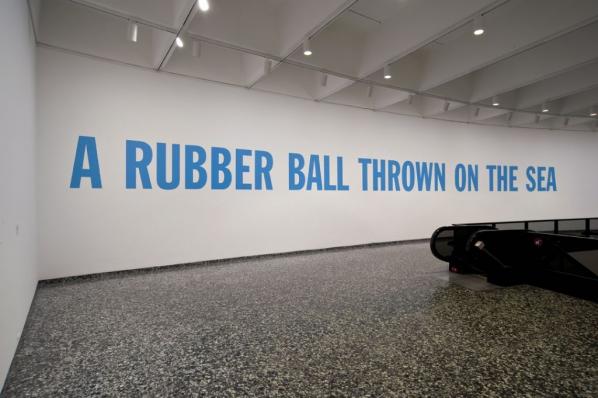
The best known act of erasure in twentieth century art is Robert Rauschenberg’s “Erased de Kooning Drawing“, 1953. The young Rauschenberg visited Willem de Kooning at the height of the latter’s fame and asked for a drawing to erase. de Kooning obliged, but ensured that Rauschenberg would have his work cut out by choosing a drawing that would be particularly difficult to erase. It took Rauschenberg a month to get the paper almost free of marks (its catalogue entry lists the medium as “traces of ink and crayon on paper”).
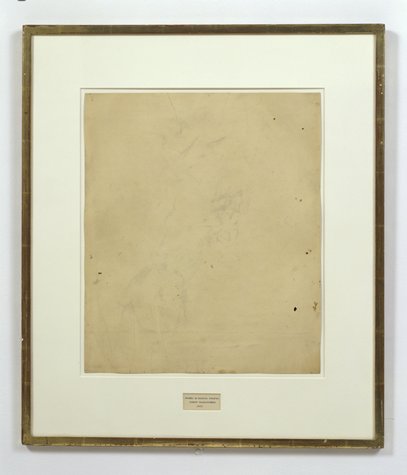
This was a clear act of iconoclasm and generational positioning by Rauschenberg but he was not reacting negatively to de Kooning’s work or fame. Rauschenberg had previously been erasing his own drawings but felt that this lacked creative tension. Using a de Kooning drawing gave both an aesthetic and an artworld weight to the act of erasure. Although fitting neatly into the historical era of Neo-Dada, its relational and performative content can also be read through the lens of the conceptual art of a decade later.
Conceptual art’s journey from institutional critique to critically important part of contemporary art institutions is a cautionary tale for artists with any kind of political or social aims. In the nineteen-sixties it must have seemed that an idea typed on office paper or published in a photocopied journal could never be sucked into the market for authentic artworks as defined by Greenberg’s ideas of painting and sculpture. When Art & Language were recently asked to authenticate what a dealer had been told were previously unknown prints of theirs from the sixties, they pointed out that they must be fakes as they were on “good paper”. But the very difficulty of acquiring and preserving early conceptual art, both for collecting by private collectors and for display by public art institutions, has made it increasingly appealing and valuable precisely because of its lack of physical quality.
Many artists have followed their work through this transition, the artistic equivalent of an indie band turning to stadium rock as their audience grows. Lawrence Weiner started out in the 1960s making (or in fact not making) such works as “ONE STANDARD DYE MARKER THROWN INTO THE SEA”, 1968, and “A REMOVAL OF THE CORNER OF A RUG IN USE”, 1968. These started naturally as happenings-era proposals for performances and installations that were never made, instead becoming art in themselves. Over the years Weiner responded to the need to display these simple texts in increasingly grandiose public contexts with increasingly large typographic arrangements painted onto or cut into walls and floors. I appreciate Weiner’s work but it is easy to appreciate the criticism that it has progressed more in the scale of its presentation, than in its form or content.
Against this backdrop of institutional recuperation and inflation of the history of conceptual art, Michael Szpakowski has turned to Rauschenberg’s erasure and Weiner’s concepts. Rather than recreate the current large-scale installations of Weiner’s texts, he has gone back to conceptual art’s simple material and conceptual roots with a hand-written text. I initially read the tone of voice of that text as the artist’s own. In fact it is not (as he pointed out in a private email exchange). It is a conscious part of the aesthetics of the piece and the effect it must create in order to persuade the viewer to enter into the imagined actions that it describes.
Those actions serve to undo, or erase, the action described in Weiner’s original. They undo both the action and its formal properties. The experience described in Szpakowski’s text is of a different duration and character to that described in Weiner’s. The length of Szpakowski’s text contrasts with Weiner’s gnomics very clearly. It also relates to the thoroughness required to erase a vivid drawing or concept. And it is a product of the requirement to create the mental self-image in the audience of standing by the sea waiting, to really create that concept in someone’s mind. This requires a number of words longer than “stand by the sea and wait for a rubber ball to drift into view”.
Using handwriting rather than wall-sized cut vinyl letters reproduces the Johns/de Kooning power relationship in the form of an aesthetic relationship between the simple recording of an idea and Weiner’s increasingly grandiose and expensive typography. It evokes Weiner’s humble (but authentic…) beginnings and brings this into tension with the artworld monster he has become. This is a dialectical art, of aesthetic and conceptual tension and what they generate. Though it may seem to be more about the artworld than about geopolitics (as was the case in Art & Language’s Cold War-era “Portrait of Lenin In The Style Of Jackson Pollock”), the artworld and the careers within it are a reflection of broader socioeconomic changes.
Making an edition of photographs emphasizes the work as competent contemporary art given the increasing prevalence of editions in the art market. The contrast between the edition and the physical original draws in the economic and social relationships between the privileged individuals who pay for and experience the work itself and those of us who just see photographic records of it in galleries, books and magazines. The digital image is also Lawrence Weiner Erasure available on Flickr as a Creative Commons Attribution-Licenced download, making it Free Culture as well. This sits in further tension with the idea of an edition. And it is an important moral statement when making work by excercising one’s right to commentary on and reference or depiction of the work of previous artists, protecting the rights of future artists and critics to do so in turn.
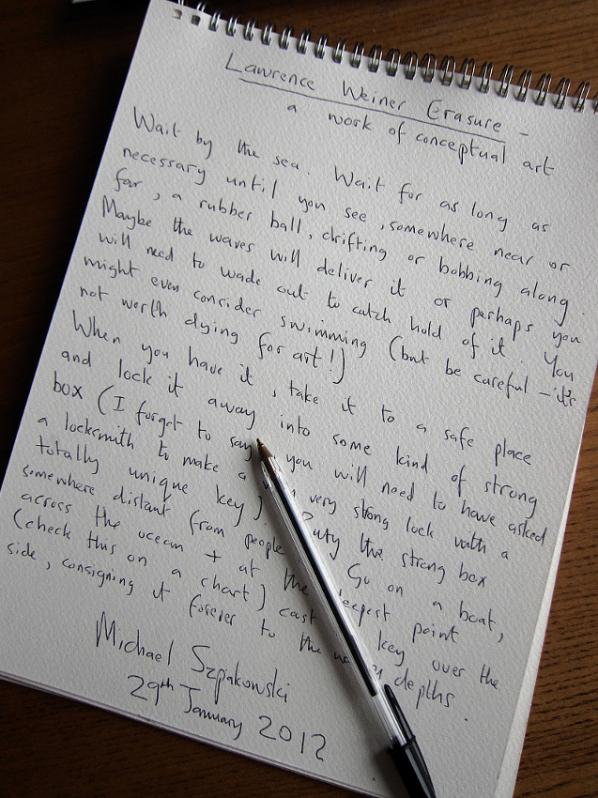
Lawrence Weiner Erasure – a work of conceptual art
An erasure of Lawrence Weiner’s ‘A RUBBER BALL THROWN AT THE SEA’ 1969
Download/Print the photo: free, help yourself
Framed photos, limited edition of five (four currently available): £100 each
Drawing pad, with text and ballpoint pen: £750
Raushenberg and Weiner are two favourite artists of mine (although I can’t stand Rauschenberg’s comic strip panels). More to the point, they are well known within the artworld and their institutional histories are useful critical resources. “Lawrence Weiner Erasure” is an aesthetically and conceptually literate and effective mash-up of the form of Weiner’s art with the content of Rauschenberg’s that expresses an important critique of the history and experience of conceptual art.
The text of this review is licenced under the Creative Commons BY-SA 3.0 Licence.
How many New Years can a world survive before it crashes into a recession? We ask ourselves this question right before the most commercialised of all holidays, facing the year in which the world recession which has gripped the Western hemisphere for the past two years is about to officially knock on our doors. Senka Anastasova, Ph.D. in Philosophy from the Sts. Cyril and Methodius University from Skopje, Media Culture Analyst and Head of the Center for Humanistic Research, says that holidays represent a glamorous festivity of the consumer society that we all live in – culturally, economically and politically.
Jasna Frangovska: What do the Christmas and New Year holidays say about consumerism?
Senka Anastasova: We live in a period of automated consumer democracy, of fast-moving consumer capitalism. All issues must be resolved on the spot, now, immediately. We consume consumeristic desires, as Zygmunt Bauman puts it succinctly, or rather we experience desires that demand to be grafted onto other desires. There is a joke on this subject, that is in fact not a joke. It happens in one of the many megamalls that operate today. A whole queue of people are lined before the cash register, holding bags in their hands. In the background you can hear the constant playing of a recorded message saying: “Repeat after me: We are free, we are free”. As midnight is fast approaching, the shopping spree reaches panic levels. This type of disorder only gets more emphasised during times of inflation. In these types of situations, it is necessary to confront not only the rigid economic discourses, but also the cultural, economic, and political philosophy of neoliberalism. People have the need to express their freedom and creativity through the consumption and using of goods. However, the voice of the machine irritatingly expresses and reveals the profit-based corporative policies of this time of the year. Unfortunately, in the given context its message is that people are only free when they shop.
J: Ironically, then, New Year and Christmas would be the pinnacle of achieving this kind of “freedom”?
S: The perspective is warped. These past days, simultaneously with the world premiere of the animated feature “Arthur Christmas”, several protest debates were started in the US aimed at discrediting the credibility of the figure of Santa Claus. The main motto of the discussions is: “Santa Claus brings more gifts to the rich, rather than to the poor children”. Well, does anyone have the audacity to tell these “poor” excluded children about the new market conditions for the Clauses? What are they to do? Hire their own private chocolate managers? Balloon agents? PR teams for toys?
J: How does consumerism as a social phenomenon impacts the political environment?
S: Chomsky talks about a so-called moderate democracy which is related to the ideological and cultural concepts of the consumer industry. Even though consumerism is not anything new, especially in the US, it became for the first time not only an economic but also a dominant social and cultural phenomenon in America and Western Europe starting 40 years ago with the market expansion. Thus, the explosion of the neoliberal market ideology ushered in the current new era which serves as the paradigm for consumer capitalism. The emphasis has been put on the ideology of regular consumption, which puts both you and me in the same spot. We are all potential buyers, the spotlight is on us from an ideological point of view. Take, for example, the government’s marketing campaigns in Macedonia: “Knowledge is power and strength”; or the series of ads “Buy Macedonian products”. What are we talking about here? A tautological trick, a marketing syntagm, following a set of standards or “hijacking” potential customers for the purpose of confirming the prototype of the ideal of the “national” consumer? It’s quite obvious to see that the idea behind this is to create “pseudo-communities” of buyers which are relied on to affirm the sense of belonging in the name of the promotion of certain ideological value systems. Communication now is terribly controlled, directed, precisely coded. Is this kind of discourse just an introduction to the creation of the “ideal” profile of an enlightened citizen – consumer for whom the late capitalist system simply yearns. What, then, to do with the offal? It is quite clear that capitalism by itself is dynamic in essence, so it doesn’t take it long to find ways to multiply its capital and to turn consumption to its own benefit. But, it also faces certain tough atavistic reptile tails. I know some dear people to me who are not enamored being set up on such a “date”.
J: Then, what is the value in such conditions of social packages, one other regular fixture of the holidays? Is this just another beautiful image to sell?
S: This concerns a wider context of discussion. On the macro-level here, in our post-transitional country, we are undergoing a process of degradation of public institutions (education, health care, culture), their reduction to minuscule silent enterprises, with wide gaping mouths in shock, finally bringing them to the status of insolvency and utter bankruptcy. On the other hand, the pre-holiday dynamics help usher in the so-called diffuse spectacle of heaving rhythms, (non)-competitive products and the quasi-term and conditions of the elite corporations who are trying to reach out to the impoverished society for the purpose of turning (any kind of) profit. During this period, the cameras are sniffing out the “high and mighty” who come out of their offices with leather furniture, chewing on Mentos, to hand out wearing latex gloves social packages tied with red ribbons to the same people that they have made poor not long ago. With golden teeth sparkling in the spotlight. With their mustache, brimming with pride. Well practiced acts of generosity. These days we are witness to the doubling of the profit of the advertising industry. All New Year adds do is to generate the desire to shop. We buy products for their symbolical value (rather than for their use). We buy symbols and signs. The world is tamed into a prosthetic illusion. We believe intimately in the concepts that are being sold to us. Advertisements have become an imaginary space, bedrooms for the public fantasy where dreams are taken, designed and sold. Legitimate market strategy though this is, it still leaves a plethora of other issues hanging in the air.
J: Are we spending for the holidays money that we don’t have for things we don’t need?
S: In the hysterical rush of the sales everything matters, everything is urgent, fast and un-believ-ab-le. This is a time of shopping alarms and fluorescent figures. The small person in front of the giant flashing billboards. Faced with the market rollercoaster. Worldwide, the old supermarkets are closing down. We are becoming part of the hyper-hyper-post-markets. One click – one purchase. Reversibly, we are turned into the exhausted creatures of the new age. Every New Year, stampedes of shoppers are charging to buy gifts. In Skopje, services, discounts, sales, 1 for 2 packages are offered, mass-products of dubious worth. Yet, we buy obediently, without even thinking. Just look at all the people trembling in their winter coats, recycled ladies wearing cheap lipstick, the flower girl in front of the supermarket, a one-woman-enterprise. Ssshhhhh. No one complain. Not a word. Bite your lips. Keep quiet. Everyone must try to be a responsible and conscientious seller/buyer, to the best of his/her abilities, without thinking what might await around the corner.
J: How do the holiday decorations cover up the weaknesses of modern society?
S: Decoration, by definition, aims at being likable. Decorating represents compensation, but the problem is not in the decoration itself, but in the excess of cheap products with poor quality which create substitutes, a phantasm of values. The commercial kitsch aims to attract the consumer with its extreme assertiveness and tackiness. The final end is always to manipulate. A “faker’s” slap in the face. The bad product always trivialises the beautiful. However, the consumer knows how to resist, at least occasionally. It may sound contradictory, but I believe that in this recession decline there is still a sophisticated consumer population which has maintained their ability to make aesthetic-based choices. With refined habits. And nerve.
J: How many “New Years” (as a consumer concept) do a recession make?
S: Ah. Depends on how many “subjective” times of consumption do you experience. “Coffee, tea?” – you ask. We are constantly involved in the ultimate consumer process, shop till you drop. The consumer euphoria just intensifies the recession, but the clock will strike one last time and this whole bubble will burst and the maddening rhythm will slow down. I am curious what shall happen to the “European” consumer in the coming months. We are witnessing the continuous deterioration of the IMF concept, the rapid worsening of the financial markets, the destabilisation of the EU. There are several possible outcomes in the future. We will see how low can the ship sink without going under. This is a time when everyone should find one’s own lifeboat.
We wish to thanks Milan Damjanoski for tranlating this interview into English. mdamjanATyahoodotcom
Featured image: The Last Collaboration, cover image
Read The Last Collaboration online
“The United States loses more American lives to patient safety incidents every six months than it did in the entire Vietnam War.” Edward Picot introduces The Last Collaboration an art documentary book by artists and poets Martha Deed and Millie Niss. This work is a construction of Millie’s hospital experiences in the last hospital she ever visited. The story is told through Millie’s notes, emails, the daily diary she sent home, her posts on her Sporkworld blog, her mother’s log, and Millie’s medical records. These primary, often raw, documents are framed with medical notes and clinical guidelines as well as the outcomes of two NYS Department of Health investigations of Millie’s care. Millie wanted her story told. She wanted an autopsy performed if she died. Because of the autopsy, we have the story.
At 09:57 on the morning of 15th November 2009, Millie Niss sent an e-mail from her hospital bed to her parents:
…they have an inexperienced person treating the sickest patients… and by the time she knows enough to do a good job, she is burned out & ready for a part time practice. They should have inexperienced doctors treat the least sick patients, not the sickest ones… This is true in every specialty and I am sure patients die as a result.
She had been in hospital for two weeks, by her own account she had already come close to death, and in another two weeks her life would be over. Already she was unable to move, catheterised, usually in pain, and on a ventilator which prevented her from communicating verbally. Not many patients in her position would have the energy to analyse their own care, never mind write down their conclusions so lucidly. But Millie was no ordinary patient.
She was a writer and new media artist: she had been seriously ill with Behcet’s Disease for years – virtually a cripple – but her artistic powers were undiminished, and with the help of her laptop and the internet she continued to work and communicate. When she was admitted to hospital with swine flu, it still didn’t stop her writing and thinking. She actually sent off a contribution to a new media project from her hospital bed. She listened to WNYC during the day and BBC4 at night. She couldn’t talk, but she kept up a constant stream of e-mails and handwritten notes – to hospital staff, to her parents, and to friends online. She wanted to record everything and comment on everything. If she died – which she could always see was on the cards – then she wanted an autopsy, and she wanted the story of her death to be told.
The remarks quoted above show how acute she could be. She has put her finger right onto a recognised problem of healthcare – that the most complex and stressful cases are often looked after by the least experienced practitioners. Senior doctors are often all too glad to distance themselves from the front line as soon as they get the chance. In a way this is completely understandable, but as a result front line work is frequently characterised by an atmosphere of muddling through, which can rapidly degenerate into bluster, hysteria, bullying and panicky incompetence when the going gets tough.
This book is an account of Millie’s experiences at the front line during her final illness. She was hospitalised in New York State, but I can recognise many of the problems described herein from my own experience of the NHS in England, where I have worked in a doctor’s surgery for more than twenty years. The story has been assembled by Martha Deed, Millie’s longtime collaborator and Mom, using not only Millie’s e-mails and jottings, but her own own notes made at the time, her reflections since (which often take the form of poems), and the results of her subsequent investigations and complaints. In artistic terms the different elements are blended and balanced with great skill, and we find ourselves shuttling between documentary evidence, poems about bereavement, first-person narratives and nature-notes about birds, without any sense of incongruity or disjunction. The story unfolds both in the present tense and in flashback, both from Martha’s point of view and from Millie’s. It is a shocking depiction of how badly things can sometimes go wrong in a hospital.
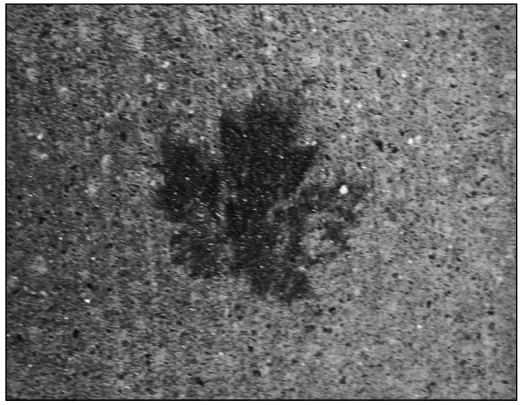
Doubtless the hospital would argue that this is a one-sided account. They would also say – indeed, in their response to Martha’s complaints they did say – that Millie was not the easiest patient to care for. And leaving Millie’s case on one side for a moment, it has to be admitted that caring for the sick, especially in a hospital, is an extremely difficult job. Unreasonable behaviour from patients may not be the norm, but it is certainly commonplace. At least in a doctor’s surgery you can get to know your clientele over a period of years, and they can get to know you. In a hospital the turnover is much higher, and bonds of trust are correspondingly more difficult to form. People are generally sicker, which makes them more stressed; and relatives are more worried, which makes them more demanding. Furthermore some people simply cannot accept the realities of ill-health and death, and lash out or place blame as a means of relieving their feelings. Perhaps it’s not surprising, therefore, that some hospital employees come to regard the patients – and their families – with a mixture of nervousness and resentment rather than sympathy and helpfulness.
The best carers can deal with tricky customers without losing their cool. They avoid getting into confrontations and status-competitions with the public, and they treat the people they don’t like with the same meticulous care and respect as the ones they do. They are not only skilled and sympathetic, but detached enough to keep a sense of perspective at all times. They make good decisions in pressurised circumstances. They communicate clearly at every stage of the caring process. They admit their own shortcomings and seek expert help when they need it, instead of trying to bluster and bluff their way out of difficulties. Unsurprisingly, a lot of employees in the health service fall a long way short of this ideal; but what is less excusable is that some of them don’t even recognise it as the ideal for which they should be aiming.
What these pages make painfully clear is that although hospital staff are supposed to treat all patients the same, they can sometimes be prejudiced against certain types, for example the obese, who are often regarded as having created their own health problems. Furthermore, although they officially welcome questions and comments, in practice they tend to prefer grateful submissiveness, and there are those who interpret anything else as troublemaking.
Of course, Millie’s story mustn’t be taken as representative of what’s likely to happen to anyone who goes into a hospital, either in the UK or the USA, and it mustn’t prevent us from realising how hard people in healthcare generally work – a lot of them for not very much money – or what an invaluable job most of them do.
All the same, the situations described in this book will strike a chord with many people both inside and outside of the health care sector. One thing it lays bare is that the psychology of caring can be a disturbing subject. We are such touchy creatures, so desperate to justify ourselves and not lose face, so anxious to get the better of anyone who seems to pose a challenge, that in no time at all, even when another person’s health is at stake, we can forget our duties and become embroiled in a petty struggle for the upper hand. Furthermore power corrupts, and a health care worker is in a position of power, able to grant or deny favours, wielding the authority of the surgery, the hospital or the System itself.
And then there is the impossible-to-ignore feeling that the patients are making our lives a misery by forcing their demands upon us. Even outside the health system, when we are caring for our loved ones, our concern for them is rarely untainted with resentment – why can’t they leave us alone instead of pestering us for help all the time? So what chance is there that staff in a doctor’s surgery or on a hospital ward will be able to avoid upsurges of ill-feeling towards the patients, particularly when things get difficult? And once they have taken a dislike to someone, they may subject that person to obstructiveness, bossiness, bullying, uncaring treatment or even cruelty.
Hopefully, to recognise these impulses and their grounding in normal human feelings is the first step towards controlling them. Unfortunately, people coming into health care are usually given very little training in its psychological aspects, and what training they do get tends to be so simplistic that it’s difficult to apply in real-life situations.
Furthermore what happens on the front line, as Millie so shrewdly observed, is very often a knock-on consequence of organisational decisions made higher up. If senior members of staff use their seniority as an excuse for distancing themselves from the most stressful and difficult areas of work, then those areas are going to be looked after by juniors. Mistakes are more likely to be made, and although the senior members of staff won’t be the ones making them, they will be indirectly responsible.
In badly-managed organisations leaders and decision-makers tend to become detached figures issuing edicts from ivory towers, and because of their detachment those edicts become increasingly abstracted from the realities of working life. “Ordinary” members of staff are left to muddle along as best they can. Organisations like this are often characterised by high-sounding written policies which nobody ever reads or puts into action – and there are examples of such policies in this book.
In the best-run teams, leaders and decision-makers do not become separated from the rank-and-file: everybody communicates with everybody else, everybody plays a part in the decision-making process, everybody knows what’s going on and continuity of care is ensured. But this book shows what can happen at the other extreme: fragmentation of care, no coherent plan, rogue individuals doing pretty much what they like, poor communication, needless delays, and ultimately fatal errors.
Then there are the questions of incompetence and cover-ups. Nobody is immune from making mistakes, and the best individuals and institutions are able to recognise them and learn from them. Yet people in all walks of life just as frequently react to criticism with defensiveness and self-justification, or by simply brushing things under the carpet. Again, these are perfectly normal reactions in a way: no matter how rewarding it may be to learn lessons from our own failures, it is always an uncomfortable process, and our first impulse tends to be either to deny them or hurry away from them as soon as possible. In the health service this reluctance to acknowledge mistakes can shade into blaming patients for their own difficulties, or trading on the disinclination of relatives to trawl through the details after someone has died. The death of a mismanaged patient can even come to be regarded as a desireable outcome, since it usually has the effect of silencing criticism and drawing a veil over people’s mistakes. All of these things seem to have happened where Millie was concerned.
Needless to say, given its subject, this book can be a tough read at times. But it’s full of insightful comments – here are just a few examples:
Do not confuse personality or communication skills with medical competence. It’s great to have both, but the more important quality – absent personal nastiness – is medical competence. [Martha]
I have also gotten a lot of good care, but once you die or are terribly damaged it is too late to say “Most of the care was ok”. [Millie]
You would not believe how nasty nurses can be to people who are very sick and helpless. [Millie]
I am sorry, my dear,
but the leg you say is broken because it looks all twisty and it hurts…
is not broken
because we have met our broken leg target for the month.
[Martha]
As these quotes show, the style in which the book is written, even when the subject-matter is at its grimmest, is always natural and engaging. And although, in places, the narrative shows us some unsavoury aspects of human nature, Millie is such a living presence, and the relationship between her and her mother comes across so powerfully, that what we are left with in the end, paradoxically, is a sense of affirmation.
It is encouraging to learn that a medical professor in the USA is already planning to use The Last Collaboration as a training aid. It could well prove invaluable, not only as a cautionary tale of how things can go wrong in the health care system, but as a tremendously vivid insight into what it feels like to be on the receiving end when they do. Given the choice, Millie would undoubtedly have preferred to escape with her life rather than achieve this particular form of immortality. Nevertheless, she would certainly be gratified to know that her story was making a difference. It is a story which she desperately wanted to be told, and which needed to be told for the good of the health service and its patients. And almost all of us will be its patients one day.
—
Read Edward Picot’s article about Millie Niss on Furtherfield
No archive is perfect. No one, I assume, will contest this claim – especially, in this day and age, where archives are everywhere and everything is miscellaneous (Wiser). It is a reasonable claim that this new way of using archives, socially and privately, has created a new understanding of what archives are – and what they are not. At least, it seems much more logical today to claim that any archive including the ‘grand’ and professional (scientific) archives of national and international libraries and museum are imperfect and even selective. People are selective in their choices and tastes and their archives are a mirror of their biases and behaviours. Personal taxonomies are contextualizing social networks. As a mirror of professional and scientific networks, it is easy to assume similar processes of (in this case academically grounded) choices and tastes taking place in the formation and construction of ‘grand’ archives.
My claim is that there are huge lacunas in the construction of the ‘grand’ archives, as well as in the construction of our ‘collective’ knowledge, and it would be tempting – if we consider the other end of the argument that Mark Wiser makes, which indicates that we may never bridge or fill all of them (the idea would be absurd) – to claim that none of it matters. The ‘homemade’ logic being that there is not anything interesting to find, anyway – and if there were, ‘they’ (the professional and scientific networks) would certainly know about it.
This paper argues that this is certainly not the case. The professional and scientific networks did not find, and do not know everything (!) – a lot of dynamic and significant cultural knowledge remain unheard of. Therefore, it is important and should be a priority to examine the lacunas and gaps (if we can find them) and understand them in a cultural and scientific context. Somehow they were excluded or sifted out of the ‘official’ construction of archived knowledge, and how and why this happened is an important scientific question to ask. Furthermore, the notion (it does not qualify as an argument) that only the important stuff made it into the archives, and that it only made it exactly because it was important, is as absurd as it is, almost, a dangerous (and not scientific) point of view.
In any case, the unheard avant-gardes are a part of the lacunas and gaps of the ‘grand’ archives. However, they are the very stuff of private and social networks and ‘small’ archives – to be considered as precursors (avant-garde) of the social media revolution. Maybe it is not until now that we are able to imagine the formats of an archive for ephemeral and mediated art practices – as well as other innovative and technologically experimental modalities of cultural production.
What is an unheard avant-garde? Of course, the answer may be tautological: no one has ever heard of the unheard avant-garde, as it were.
And then again – rumours and curatorial intuition has it that private and ‘small’ archives around the globe are full of unheard stuff. In this case, I am focusing on the ephemeral, experimental, performative and intermedial art practices and projects by energetic project makers (often long since deceased) that never made it into the ‘grand’ archives – and, after a time, are forgotten, simply.
This project has the anterior purpose to define the modalities needed and methodologies to obtain them in order to reactivate, on a curatorial and humanistic level, the field of the ‘unheard avant-gardes’ (if it indeed is one field) – what are the categories? How do we describe them? Do they manifest themselves into (new) paradigms? And what would be best practice for metadating and documenting the field? Furthermore, these questions also point towards a more fundamental problematic regarding the definition and function of ‘art’ in a mediated cultural context and environment.
What is invested or, indeed, put at risk by reactivating the unheard? This is a question pointing back to the discussion of the transforming ontology of humanstic reception and its modality of ’archiving’ (a discussion I partake in another paper (Flexowriter…).
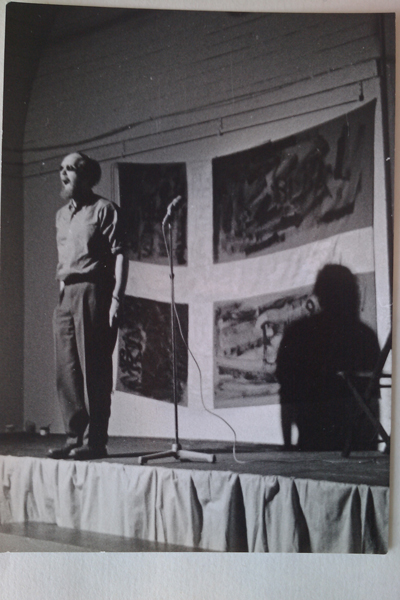
Some remarks on my use of the Avant-garde concept.
A Classical approach would be to explore the history (of known representations) & theories of the avant-garde, describe and discuss in inter(con)textual views. Fine as this may be, however, there is a tendency to overlook or exclude the experimental practices of the avant-garde artists. Look at it as a production of new meaning or sensuous technologies, as it were, rather than something ‘finished’ and ‘fitting’ the (largely) ocular/text-based production of knowledge in classical academia and/or archives. The Avant-garde is never finished. It is always messy, and still searching, I would say, for the right eyes and ears – even after 40, 60, 80 years.
I would like to propose to make experimental avant-garde practices enhance the debate within the research in & of the History and Theories of Avant-garde Art. My approach – and transdisciplinary take on the avant-garde – is based on the assumption that the avant-garde practices in e.g. technology and sound was, essentially, part of the formation of a ‘media art’ – a kind of off-road history-in-the-making running below the ‘official’ history-as-it-were of art.
The modalities of this subterranean ‘media art’, or experimental avant-garde, are:
My research project focuses on three levels: how and why sound art became unheard (of) in the ‘grand’ archives?; what archive-formats are needed to ‘store’ the unheard avant-gardes (so they do not become unheard (of) again?; and how it may enter the sphere of the general public?
The silence of sound art is symptomatic of certain cultural, aesthetic and scientific paradigms that are inherited via the knowledge systems and epistemologies that define the institutionalized archive competences (Joseph Beuys, Michel Foucault).
How to change the traditional status of sound art, in archives and elsewhere: it has more often than not gone silent – out of reach for researchers and a general public.
The Unheard Avant-gardes project, then, focuses on a critical re-activating of sound art as an experimental practice – getting and letting the silent Avant-gardes out of the boxes and off the shelves – and into a network of digital distribution where it may be accessed, exhibited and explored – listened to – in detail and in a context.
Thus, I will claim, that to be ’unheard’ is a fundamental condition and premise for performative and mediated art practices – in the ‘grand’ archives (in the sense, that they are not ‘on the shelves’) as well as in the construction of the cultural contexts and social memories (history). I refer to the unheard avant-garde in the sense that it is experimental and in the forefront of a cultural and technological transformation in its day. It formed it’s own networks and worked from there. However, I do not intend to refer to the ‘avant-garde’ in the sense of a specific (artistic) genre or group or period or style or whatever (that may be). My argument will be that the unheard condition, and the reappearance of unheard avant-gardes and their (somewhat) hidden networks, is something that ’mirrors’ a change in the modes and modalities of the production of knowledge in a distributed, post-digital culture. Thus, the unheard condition is as fundamental an aspect in the understanding of the formation of ‘grand’ archives, as it is a key-element in an analysis of change and transformation of paradigms – and how science and art performs in and respond to those transformations. On one level, the existence of unheard avant-gardes is the mark of mediated, fugitive and ephemeral strategies and tactics in the art practices that emerged in the late 1950s and during the 1960s. On another level, it is a true ontological gap – and the reappearance of the unheard avant-gardes may very well prompt us to rewrite history.
It is about time we put an ear to the archive ground.
To limit myself, I am putting a special focus on cases that turned up in my search after the particularly unheard (of) in the ‘grand’ archives: POEX65. First a note on how to search and identify the unheard avant-garde in (or, rather: outside) existing archives. I particularly looked for sound material from collaborative, performative, time-based, intermedia art, media art, and new media art projects from 1920s to present day; and I looked at small and private archives and triangulated what I found here – dates, persons, places, other artists – with the databases (or, in most cases, before 1983, written / printed records) of the Danish Broadcast Company and Statsbiblioteket (The Danish National Library).
I also put an ear to the collection of (inter)media art from 1950s and onwards at the Museum of Contemporary Art in Roskilde, of which I was the Curator between 1999 and 2008. This archive encompasses art, which is practicing “fusions of words, images and sounds”, often in different variations of performative, fluxid, conceptual, and mediated situations. The archival status is marked by varied and fugitive material, to say the least.
In my search I was also preoccupied with finding adequate framings for the categorization and contextualization of the archive (which was being established at the time and still is under construction), which (quite naturally, it seemed) proved inadequate on closer inspection and formulation. This certain affinity with the ear in the archive-context further sparked my interest in finding a systematics and methodology of the unheard; which, in turn, enhanced the attempt to implement a transdisciplinary practice and a sensuous technology into the core of the construction of the archive, allowing a dynamic flow of domains to establish themselves in a real time dialogue with an audience.
The sensuous material of sound, and the modalities of using the ears in new ways – exploring sonic perception – is the issue.
The ontology of an archive of media / sound art. Two ontological factors: 1) Instability of the material (and its contexts); 2) The material is in need of reactive strategies in order to be ’heard’ or merely ’noticed’ by recipients. The unheard status is an unwanted, but nevertheless actual status of most of the media art material that is existing in the archives.
Key-instabilities of sound-based / documented media art:
POEX 65 was a transdisciplinary experiment and event, which took place in ‘Den Frie Udstillingsbygning’ (The Independent Exhibition Building) in Copenhagen, December 10-20, 1965. Short for ’POetry EXperiment’, POEX 65 was an exhibition event curated and created by Danish artist Knud Hvidberg (1948-91). It aimed at breaking the boundaries of art genres, the false division of professional and amateur, as well as the autonomy of the ‘work of art’ through the active use of technological and mediated platforms such as Flexowriters, Punch Paper Poetry, and Electronic Visual Music. As such, it was a very important event in Scandinavian media art history with more than 80 participants from 5 countries – many of whom became part of the leading class of artists in Scandinavia.
Nevertheless, POEX 65 somehow was forgotten – and almost erased from the academic memory and public archives.
The Danish Broadcast Company (DR) did broadcast two programs, of which at least one was dedicated to POEX65: ‘A Sunday’s Walk w. Ella Wang’. However, the tape with this particular program was not in the archives of DR anymore – erased or reused, or?… no one can tell from the records. It is simply not there: Truly, an unheard avant-garde!
Long story short: I managed to locate a taped copy of the program in the private collection of one of the participants at POEX65, Kirsten Lockenwitz. From that tape, I managed to get a number of other information that led me to other recordings – and, suddenly, we had sound! Slowly, POEX65 came ‘alive’ again – for the first time in more than 40 years.
A very important part of the POEX65 event was the large number of experiments with cross-overs between musical artforms, from electronica to beat, to other artforms. This may also explain why the event never became part of official records or archives – and was erased from the DR broadcast-archive: It was transdisciplinary before that word even existed… it was way ahead of its time.
From the sources available to us, it seems fair to establish as a fact that five ‘stages’ were active in POEX 65: The ante-room (visual poetry), the Large Exhibition Room (Happenings and Live Music), the Centre Hall (Theatre), the expanded poetry space (+ Flexowriter), and the so-called ‘Co-ritus’ Environment by Jørgen Nash, Jens Jørgen Thorsen, Hardy Strid and Carl Magnus). (Hvidberg, Invite to participate in POEX 65 (in danish) 1965) (Barbusse 1991) (Rubin 1987)
From the program, it is possible to collect a list of ‘new’ concepts for these crossover categories:
This is just a loose collection of the terms mentioned in the program and in other material… and it shows, I think, the boundary breaking range that the POEX65 experiment had as well as the amount of collaborative artistic, creative and intellectual efforts that were put into the project. They really sought to work across the different artistic sections as well – Fluxus, Situationists, EKSskolen, DUT, as well as Jazz, Beat, and Electronic Music, and amateurs and technicians / engineers etc..
There was a heated discussion over the issue of artists’ autonomy, which was written down by Knud Hvidberg. The Danish EKSskole wanted a space they could control, however Knud Hvidberg did not want that – but insisted on an open space for everyone (including audience and ‘amateurs’) where anything might happen. Finally, the EKSskole did not participate as a group in POEX65, but a number of the artists (more loosely) associated with EKSskolen did participate individually.
It is a fact, however, that POEX65 did manage to bring together a large variety of artists from all kinds of art genres and ‘ideologies’. And they did work together in a number of ways. So far, I have identified some 128 ‘actors’ – artists, engineers, dancers, musicians, active audiences etc. – that were part of POEX65.
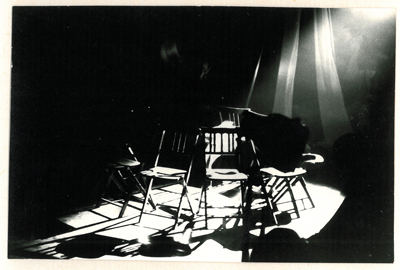
Together with Knud Hvidberg and the Danish Visual poet Vagn Steen, Karsten Vogel was at the ‘centre’ of the POEX65 event. Since the early 60s, and together with two other Danish semioticians and theoreticians, Peter Madsen and Per Aage Brandt (the latter was also a jazz pianist), Vogel had run an informal ‘study-group’ of new tendencies and theories of collaborative work-formats and actions of art. POEX65, in many ways, fed into the ideas and thoughts coming out of that group – who also participated with an event during the 10 days of activies. Vogel, however, had his main role as the experimental jass-musician who inspired the music-paint-light situated works happening at POEX65. A short clip from Jazz News in december 1965 was recovered from the personal archive of Kristen Lockenwitz, from which you may hear a ‘glimpse’ of what was going on. From this recording we hear Vogel and Brandt playing in a set-up, where certain ‘signals’ or ‘motions’ by the painters or light-artists, triggers a chaotic outbrake of sounds from a number of acoustic instruments.
Another important (artistically experimental) grouping was centred around Knud Hvidberg, William Soya, and Hans Sandmand. Together, those three artists had made a number of technology-based exhibitions and projects since 1957 – and, even though William Soya did not participate in person at POEX65, it is him who introduced the Flexowriter into the context, and experimented with how to use it for art purposes (see Flexowriter…). Hans Sandmand, however, participated with a number of interactive sound installations – most noteworthy, perhaps, the Radar which was standing (and turning) in the central hall where people entered the space. When you pushed a button on the radar, a voice said: ‘I am looking for the great intuition’. In another work, a pile of used car tires revealed a mirror when you looked down into the pile – and, as you looked, a voice recording was activated, saying: ‘poetry is something you carry in yourself’.
Not all artists participated on the same level of collaboration. Not everyone was ‘living out’ the radical ideas of Knud Hvidberg about collaboration, loss of autonomy, and the ‘exhibition as show’. Even so, they all seem to adopt some element of the conceptual framing of POEX65, like the processuality and audience participation. A good example would be the Danish Fluxus artist Eric Andersen. He contributed to POEX65 with a number of original works. Among them, ‘Her Bathing Suit Never got Wet’ and ‘I Regret the Bad Circumstances for Recording’ were all sound recordings and part of the ‘record bar’. ‘Opus 51’ was a performative event operating within the Fluxus methodology and aesthetics. Photos exist showing Eric Andersen sitting in the ‘central hall’, waiting for the audience to arrive. This event made the audience actively collaborate in realizing the work by running through a combination of operations based on rules defined by Andersen.
Time and chance would make Eric Andersen well-known (and well-represented) in Danish archives, whereas William Soya, Hans Sandmand, and Knud Hvidberg – despite their visionary and innovative use of technology and sound as media in visual arts at a very early stage (for DK as well as internationally) – more or less went into obscurity. Lost in translation… from moving media and sound to text and (still) images.
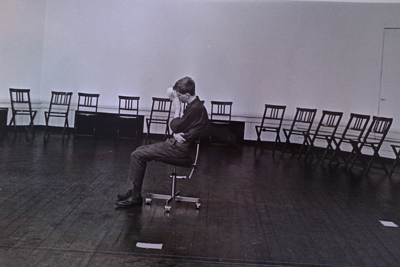
From all this, it appears that the Unheard Avant-gardes project is more than ‘just’ an archive project. It is as much a re-investigation of the fundamental conditions and status of ‘media art’ – the experimental avant-garde. As such, it may also be viewed as an attempt to re-configure (the academic ideas about) the relations between technology, media, and art, and write a theory of this re-configuration.
The reconfiguration is being put to a test when a number of ‘interfaces’ to the unheard avant-garde is presented (in a special section with focus on Scandinavia) at the exhibition TONKUNST – Sound as Medium for the Visual Arts in the 20th Century at ZKM (opens March 17, 2012).
The unheard avant-garde section will present three platforms. Each platform presents a notable and important ‘hub’ for the experimenting Scandinavian scene, in which technology, media and artistic practices are mixed and remixed into ‘sound art’.
The platforms are presented and designed by invited artists, as an independent work of art, or a new artistic platform, in such a way that the unheard avant-gardes get a voice in (the construction of) history.
For that purpose, I am operating with a methodology in three steps. 1) Instead of reENactments, which would focus on restaging artworks, I want to reactivate an entire event and context – including its ideas and methodologies. 2) I am dividing the reactivation-strategy into two modalities, Enacts and Reacts, which are focused on, either, the works and contexts of a single artist (enacts), or the idea and context of an entire event. 3) I am using ‘new’ media artists to reactivate the unheard media artists – adding a third element into the reactivation-strategy: that of re-working and re-actualizing works, technology, events and processes.
The first platform will focus on EMS (Elektronmusikstudion, Stockholm). Since 1964, EMS, formerly known as Electroacoustic Music in Sweden, prior to that known as Elektronmusikstudion, is the Swedish national centre for electronic music and sound art.
The second platform will reactivate the particular electronic aesthetics of Finnish Electronic Music Studio & Errki Kurenniemi (FIN). Errki Kurenniemi’s Electronic Music Studio was set up in 1962 with the vision of an automated composition system. In the 1960’s Kurenniemi built Integrated Synthesiser and in the 70’s, a series of custom built music instruments called DIMI.
The third platform will re-activate POEX65. It will include reactive radar, collaborative chairs, and a giant TONEHEAD as sensuous interface for an archive of the unheard avant-garde.
It is from this unheard status of experimental media art that the re-activation of the unheard avant-gardes finds its momentum: Not only in giving the unheard a voice in a number of ways, but also in addressing some fundamental issues concerning the way new transdisciplinary domains are renegotiated across disciplines and boundaries of competences. History will never be the same (again).
For more information visit: http://www.sondergart.dk
The video works of A Bill Miller seem to be at once futuristic and something recalled from our childhood (those of us who grew up with computers in some form or other) in what might be considered as a hauntological affectation that seems like a memory of the future from our childhood, with lines and simplicity of many early computer programs, forming complex ghosts of our pasts across the screen. These are a reminder that what computer graphics can do, doesn’t have to be composed of 3D, with million of vectors and a painful, failing attempt at verisimilitude. Just as theatre, with it’s artificial simplified set designs and symbolism. It can sometimes be more real, offering a greater empathy than a well designed and directed film. Often, there can be greater beauty and compulsion when engaged in simple works than those of greater complexity.
“We exist within a built environment that is constantly mediated by the grid. Grids organize space through coordinate mapping and patterns of development. Grids compress, redisplay, and reorder information. Grids are an enforcement system imposed upon both nature and culture. I respond to this ubiquity by creating gridworks. These forms examine the blurred boundary between the machine and the human – the tool of data collection and the interpretive mind.”
Like a lot of people, my first encounter with the work of A Bill Miller was on the small screen. Despite the numerous festivals and exhibitions that his works have appeared in1, this may be the only chance viewers have to enjoy them. Which is a shame because they really work well when expanded on to a larger screen. Even if you only get to view them on a larger television screen, it’s worth doing. Even some of the work that is small in scale and scope, benefits from being shown on as large a screen as possible. It takes a broader and more encompassing screen to really engage the viewer completely into the work. For some of the black and white work, the overlaying of ASCII letters (reduced to just shapes when not ‘read’ as alphanumeric characters) shows how some works can explore the technical palette of the production software as possible. Which isn’t to say that some of the works aren’t also complex and (literally) multilayered.
There is a psychic landscape explored in Miller’s works. A landscape that feels as though it sits just behind the everyday, observable world we inhabit. Not in a David Lynch, behind the picket fence, kind of way, but inside the mind’s eye, at a point where the brain hasn’t yet coalesced the datastreams of visual stimulation into a recognisable image. It’s that in-between space that seems to at the heart of some of the Gridworks: the spaces between being held in check by the grids. And clean white spaces are beautiful in themselves, but they also divide the elegance of those lines so that the work is about those spaces and the tension of being held in check: stopping them from bleeding into one another. The psychic landscape they map out is the same one that we have to face everyday as we negotiate our way through the ongoing datastream of western life. Work, rest, work, rest, shop, consume. Those days that you feel as though you’ve experienced and understood everything and life begins to blur into one continuous event: all it takes is to step back and really focus on individual moments to remind ourselves that life is actually full of thousands of unique and wonderful moments.
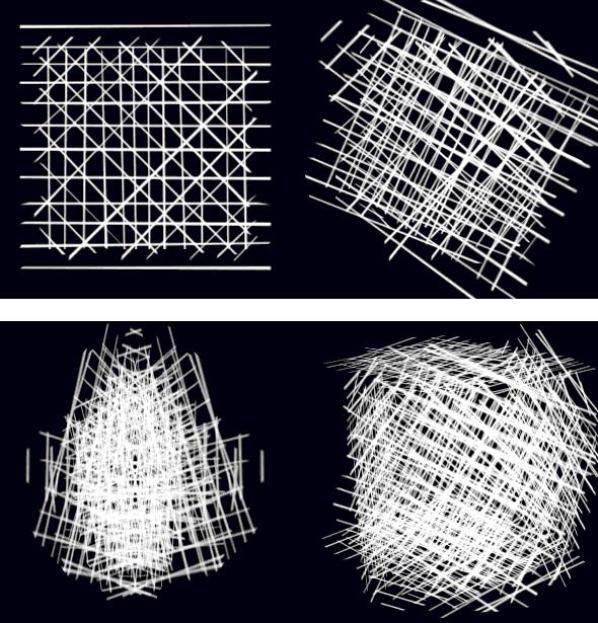
Works like Gridfont 7 suggest that the elegance of a few lines carefully placed can lead to great complexity through simple juxtaposition and rotation of basic forms. Just like so many other things in life, greater complexity begins to emerge from a gradual build up of even the simplest of those elements. Some of the work begins as a few short, hand-drawn lines before they re-adjust themselves and become a hive of geometric shapes: a honeycomb forming from the arrangement and connection of lines. Some works have the colour-bleed of early video work where over-saturated colours refuse to hold their place in the ordered spaces and begin to wander slightly.
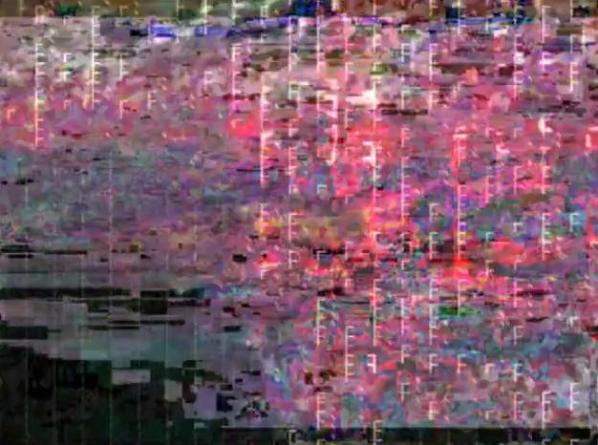
gridworks_textanimation2010 is made from pure ASCII text characters, and “transmits an unreadable message that is aesthetic and abstract.” It’s stark black & white play of the non-text elements of written communication gives the impression of loss and emptiness, like lines of communication broken down through digital channels. This could be extracted from a relationship being held together via email or it could be text messages sent between two unreliable narrators each hoping to convince the other of some shared moment. A line of Xs brings to mind censorship but the blank underlines suggest space for the other party to fill in the blanks that we don’t always admit to when trying to maintain the peace in a relationship. Things are constantly being said, but nobody is ever saying anything to each other. Those are the worst accusations of Internet communications but they’re just as guilty of being performed in every other channel. They just become more visual on the Internet and even more so in works like this.
In case these descriptions suggests that the works are dry and overloaded with metaphor and meaning, they can be enjoyed on their purely aesthetic merits. Gridworks2000-anim09 is a work that can only be described as beautiful in its elegance and deceptive simplicity.
Although these works are positioned within media art, they (like many moving image art work) could be considered as cinema (and let’s face it, cinema could do with a fresh burst from a ruptured blood vessel right now). These are part of a cinema of special effects where the use of computer graphics enhances the moving image and steps away from verisimilitude. As mentioned previously, this lack of verisimilitude is part of the reality of these works. An added element of what makes them hauntological ghosts within the screen.
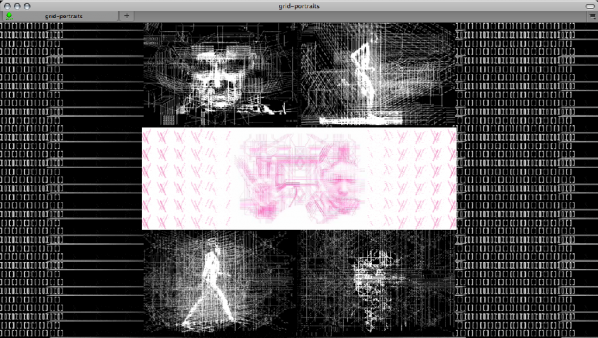
It’s imprinted into the very nature of cinema that it is a ghostly illusion or special effect, either computer generated or produced in the camera that belongs to every moment of cinema’s history. In fact it is even an illusion to believe that we are viewing an actual moving image when we watch a film or video. Either way, cinema is created on-the-fly by our own eye. The trick of creating moving images is to know how the brain responds to them and leverage that response to your own desires. The cross slicing of lines in Miller’s Gridworks feels so much like early computer graphics that at times it’s hard to step beyond thinking about technology’s desire for the new and the increasing momentum of the special effect algorithm and find the beauty in their simplicity. It’s in there and doesn’t take much effort to uncover. Like a good oyster in a restaurant, the reward can be unusual and pleasurable, but you have to get in and expend some energy to extract it.
FILE RIO 2012, Electronic Language International Festival, Art Galery of Oi Futuro, Rio de Janeiro, BR, Mar 12-Apr 8th
Scan2Go, New Media Caucus year long online exhibition, Released at CAA 2012
<terminal> monitors, Austin Peay State University, Clarksville, TN, 2/20-3/2
A/Vworkssssss, One Night Event/Performance, Borg Ward Collective, MIlwaukee, WI Jan 3
Streaming Festival 6th Edition, Het Nutshuis, The Hague, Netherlands, Dec. 1-18 2011
FestivalMulti2011_Especial – Curator David Quiles Guillo, Video Art Program, Rio de Janiero, BR, Nov-Dec 2011
Sheroes, One-Night Interactive Installations (Monthly), Toronto, CA, Nov. 18 and Dec. 23
GLI.TC/H Chicago – Live Video Performance, Chicago, IL Nov. 3-7
GLI.TC/H Program at FLIP Animation Festival, Birmingham, UK, Oct. 29
Punto Y Raya Festival, Museo Reina Sofia Madrid, November 3-6, 2011
BYOB Sao Paulo, Rojo Nova Sao Paulo, Oct. 29
Video On Paper Zine http://videoonpaper.tumblr.com/
3ra Convocatoria Belica, Valencia, Venezuala, September 2011 http://mvs.260mb.com/index2.html
I AM NOT A POET Festival, Edinburgh Aug.8-21 http://tkunst.wordpress.com/
Darko Aleksovski interviews OPA (Slobodanka Stevceska and Denis Saraginovski). OPA (Obsessive Possessive Aggression) is an artistic collaboration, based in Macedonia, whose focus is researching the social, cultural and everyday issues, as well as the ways of looking, thinking and behaving of a certain community in the shifting social and political conditions.
Their project entitled “Bollocks” is a complex and yet very simple interactive installation, made out of a video/image projection in a room in which only one viewer at a time is allowed to see it. The project was first shown at the Authorial Through The Appearance 3 exhibition in Veles, Macedonia (2009). Then it was modified in a second version entitled as “Bollocks for Everybody” for the Small Gallery in Skopje, Macedonia. After that the project was shown at the fifth edition of the AKTO- Festival for Contemporary Arts (2010) where it was awarded with the annual Dragisa Nanevski Award for interdisciplinary achievments. The project was also shown in Studio Golo Brdo, Rovinjsko Selo, Croatia (2011).
Darko Aleksovski: “Bollocks” is a project which was shown on several occasions in art festivals and group exhibitions. Once it was exhibited as “Bollocks for Everybody!”. Can you tell us what was first: its idea, or its title?
OPA: Our initial idea was to relate one specific phenomenon of the Macedonian cultural life: much stronger “gravitation” than in the other parts of the world. It means everything is much harder here, for every single “motion” connected to arts and culture, you need several times more energy compared to other places. It could be because of our institutions, or the specific mentality, or the geographical, political and economic situation of the country – it is a matter of larger analyses. However we didn’t have intention to speak about those reasons into this work, but simply to remind of the existence of the issue. That’s why the work (visually) is about seating and waiting. In the video-image we sit and endlessly wait for something to happen. And when the spectator enters, (s)he triggers the sensor and we both leave the image. So the spectator gets nothing and sees an image of two empty chairs. In the Macedonian colloquial speech you would say the spectator gets “tashak” or “tashaci” (Macedonian: ташак, ташаци). So that is the original title of the work – “Tashaci”, given when the work was completely shaped. “Bollocks” is the best English translation that we could find, but it still doesn’t represent the expression best.
And “Bollocks for Everybody” is the title of the second version of the work, created for the windows of Mala Galerija (The Small Gallery) located in a shopping mall in Skopje.
For our solo presentation in Mala Galerija, we made two different settings of the same work: (1) On the windows of the gallery there was a projected video-image of two empty chairs. When the casual passers by trigger the sensor, our figures were entering the video-image facing the spectator. (2) But inside the gallery we installed the original version of the work, which was intended for the regular visitors of the cultural events, this time invited for the official finissage of the exhibition.
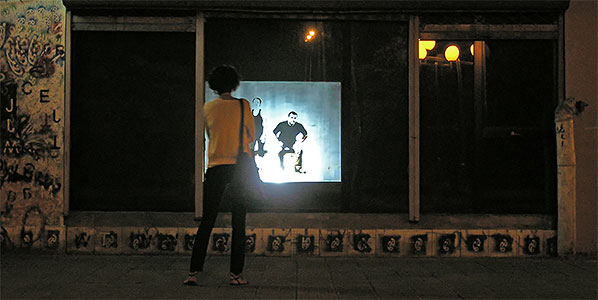
DA: Is the project primarily concerned with the general Macedonian cultural context, or it is dealing with more universal issues?
OPA: We could say that this work is emanated from these local issues, thus it is concerned with the Macedonian cultural context. Translated into the general context it speaks more about the art system, the expectations of the audience, the immateriality of the artwork, about the things that we always miss out, the absurdity, the nothingness…
DA: On one occasion, you say that the inspirational thought about the project is: ‘Art is always in another place’. Does the project speak of ignorant art or ignorant audience?
OPA: It is more about the expectations. About the expectations of where the “real” art should be, what should it look like, what is the art like in other places (always better than our), while we miss the things that are happening (or could happen) here, in front of us. One other interesting interpretation of this thought is that the art is happening during the process of creation. The artist touches it for a moment, and everything that we see as an exhibited object is only a document, a trace of the existence of the art, a way for the artist to share with the rest of the world what (s)he had experienced.
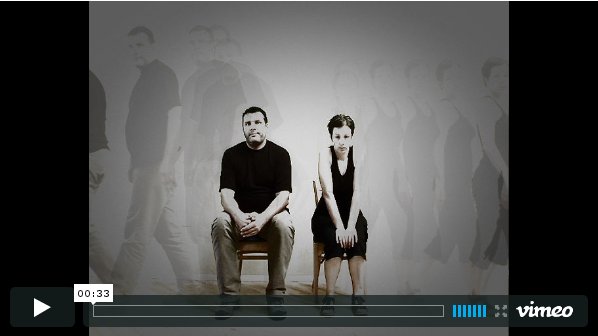
DA: Do you think interactive art is one of the easiest ways to communicate with the audience today?
OPA: It is one of the ways, but it doesn’t have to be the only or the easiest way. Anyway the art today should be in the things that surround us, or incorporated into our everyday life. It should reach us other ways than just through the galleries. It should try to surprise us, confuse us, shake our solid image of the world and make us think and reconsider our attitudes.
DA: How do you feel about joking with/ in art? Do you think a joke in an artwork should be considered a serious statement?
OPA: Humor is one very helpful tool to address the social and the political issues, or the things that bother you and the things that hurt you. It doesn’t mean that if the work involves humor it doesn’t have a serious statement. Thus it is often present in our work. One other tool that we often use in our work is entertainment. Often it is the first thing that catches the audience, it “steals” their time and attention, and than through it we try to convey our message.
DA: Absence is something one finds in many of your works. The absence of connection with reality, absence of objects, even absence of a final artwork, or project. What kind of presence do you think this absence refers to?
OPA: It is really exciting if you succeed, while acting with the art language, to make an artwork that would be communicated but not perceived as an artwork at first. In that case, the work has a direct communication with the audience, not burdened with the fact that art has “special place” in our society. It becomes a kind of subversion of the everyday life – you can experience art without knowing what’s in front of you, yet the situation you have experienced, is an artwork. What we do in our work is about creating “situations”, or often creating the artwork together with our audience. Whether this artwork is either immaterial or difficult to possess.
Featured image: Lynn Hershman Leeson Portrait (Photo Credit: Ethan Kaplan)
Woman, Art & Technology is a new series of interviews on Furtherfield. Over the next year Rachel Beth Egenhoefer will interview artists, designers, theorists, curators, and others; to explore different perspectives on the current voice of woman working in art and technology. I am honored to begin this series with an interview with Lynn Hershman Leeson, a true pioneer in the field who has recently produced !Women Art Revolution- A Secret History.
Over the last three decades, artist and filmmaker Lynn Hershman Leeson has been internationally acclaimed for her pioneering use of new technologies and her investigations of issues that are now recognized as key to the working of our society: identity in a time of consumerism, privacy in a era of surveillance, interfacing of humans and machines, and the relationship between real and virtual worlds. She has been honored by numerous prestigious awards including the 2010-2011 d.velop digital art and 2009 SIGGRAPH Lifetime Achievement Awards. Hershman also recently received the 2009 John Simon Guggenheim Memorial Foundation Fellowship, an award which supported her latest documentary film !Women Art Revolution – A Secret History.
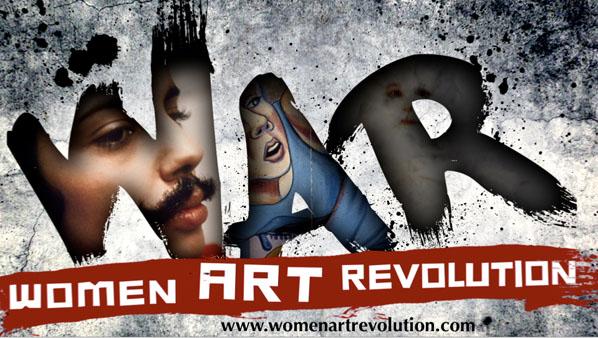
Rachel Beth Egenhoefer: Your most recent project is the film “!Women Art Revolution” which you have been collecting materials for and working on for the past forty years. Why is now the time to present it as a finished work?
Lynn Hershman Leeson: TECHNOLOGY! The film is one narrative, but I’ve put the entire 12,428 minutes online through Stanford University Library, making all the narratives and aterials accessible, so in effect there are no out takes. Also the RAWWAR org archive/website allows people to continue the story online. So the story continues to grow beyond the single narrative, which technology allows us to do now.
Additionally, I wanted to push out into public view the graphic novel, curriculum guide, and the story to affect the legacy while women who created the movement could be appreciated.
RBE: Can you expand on how you see the RAWWAR story continuing online? Or maybe what is the goal of the archive/website? Do you envision people adding to it?
LHL: Yes, it was made specifically so that people, especially younger generations will be able to add information. At the Walker Art Center, they have scanning stations and are training people how to upload work onto the site. My hope is that people from around the world will add materials and it will be a living repository of this type of growing and accessible information.
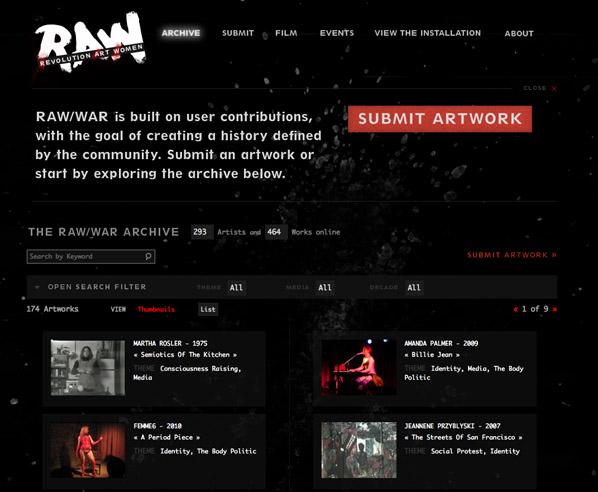
RBE: The film has been touring in the U.S., what has the response been?
LHL: Incredible. It has been in over 60 cities, and standing ovations in San Francisco, Houston, Toronto, Sundance, Berlin and Mexico City. People seem deeply affected by this secret history and seem to appreciate knowing about it.
RBE: Has the response varied either with geography or current events?
LHL: Not really, it seems vibrantly appreciated worldwide despite it being about women in America.
RBE: Can you explain the grammar behind the title “!Women Art Revolution”?
LHL: If you mean why the ! first, it was so we would be listed first, rather than under W. It didn’t work, but that was why we did it originally. It also is a wild exclamation at the start, which is what the movement was.
RBE: The film is described as presenting the relationships between the Feminist Art Movement and the anti-war and civil rights movements, showing how historical events sparked feminist actions. Do you see any connections to be made with the current Occupy Movements?
LHL: Yes, absolutely. In some ways because it is about how the disempowered and invisible people were able to gain their place in culture; how people who had their voices silenced were able to amplify their message and subverted social systems, with work that expressed censorship, freedom of expression, social justice and civil rights and directly made political change. It is an inspiring story of reinvention.
The goals were clearer than with Occupy. But the disenfranchised edges of culture is similar.
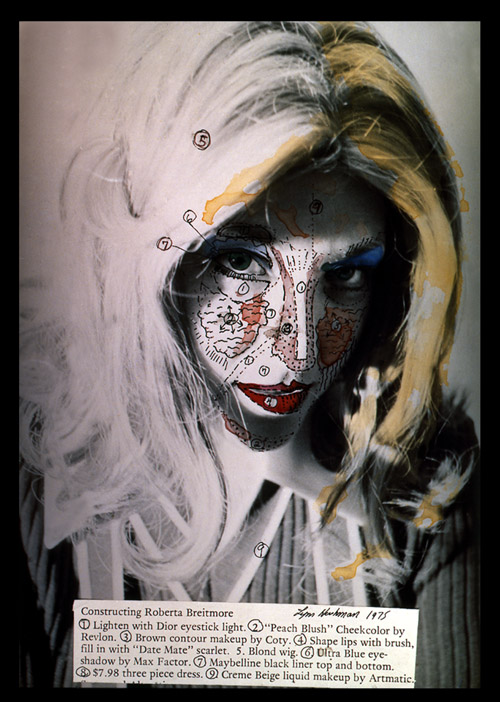
RBE: A lot of your early works dealt with issues of identity. How do you think the notion of identity has changed over the years?
LHL: It has become more technological, more global, more cyborgian. We now, because of the internet are linked globally and that has resulted in a “hive mind” and in turn, that seems to be a cohesion and holding together the individual fracturing that had occurred over the last two decades
RBE: Can you expand on the idea of the “hive mind that seems to be holding together the individual fracturing”? What makes up the hive, what is fracturing us? Is this good or bad or neither?
LHL: The hive is social media and people who participate in the Internet grammar. There is a congealing through access to information. As individuals, I think we have been fracturing, rupturing, split for decades and have become multi faceted and multi taskers. But there’s a price in the lack of personal cohesion that results. I think that having a common reference or ‘hive’ is a very good thing, as it tests our idea of ‘reality’, and serves as a hub of communication.
RBE: Do we make our own hives? Or are those defined for us (either by others/ FaceBook/surveillance/ etc)?
LHL: We are all part of global re-patterning that is happening live on a global scale and it is naive to assume we can act independently or not be connected or affected. We are constantly challenged, influenced by peripheral and pervasive information and in turn we have become fodder for surveillance and digital integration.
RBE: Some contemporary artists and thinkers have been critical of our online selves and physical selves. Sherry Turkel for instance has described people as “performing themselves” online by constantly updating Facebook profiles, tweets, etc to show an ideal version of ourselves. Can you draw any distinctions between virtual, physical, and performative selves?
LHL: I think we perform ourselves every day, not only on social media, but in all interactions. I do not think all images or versions of ourselves are ideal. There is absolutely a difference between real/physical and virtual selves. They each have a context, reference and function. As far as being performative, that depends upon the distinction used for how it is used. One can, in fact, consider life itself and everything one does as performance.
RBE: This interview is going to be part of a series of interviews with women working in Art & Technology. What do you consider to be important today about being a woman working in art & technology?
LHL: Ada Lovelace wrote the first computer language, Mary Shelley envisioned artificial intelligence, Hedy Lamar invented spread spectrum technology, which led to cell phones. Women have been enormously prescient in visioning and affecting the future of the world through technological linkage systems.
RBE: Do you think it is still useful to discuss the female voice as a separate voice in the field?
LHL: I think the female voice is critical in all aspects of the future and should not be limited to a category.

RBE: One of your earlier works, LORNA, depicts a woman who never leaves her apartment and becomes more and more fearful as she watches ads and news on the TV. Some might say television media has gotten far worse since the 80s in both fear mongering and controlling conversations. What do you think about the current state of the media?
LHL: Right, the idea of media as totally affecting our outlook has shifted. Media is no longer omniscient! The 99% are activating their voices and warbling into existence. There are other problems with social media… deeper ones that splay into the cracks of fractured identities and insist on more disruption and lack of focus. But perhaps that is what is affecting our constantly changing evolution.
RBE: If LORNA were around today what would she be thinking or doing in her little 1 room apartment?
LHL: Blogging and all forms of social media including excessive and obsessive shopping, no doubt. She would probably not really be agorophobic either. She would, however, probably be paranoid. She would use a webcam and notice all the ones surrounding her no matter where she moved.
RBE: Do you have hope for change in the future?
LHL: Hope? It is inevitable. I believe in the next generation! They always, in their amnesiac optimism re invent the future in ways that can’t be predicted.
RBE: You have been involved in academia for some time, what do you think is important to be teaching in the Universities right now?
LHL: Independent thinking and creativity, the maintenance of ethics and a profound sense of humor!
RBE: Do you have any new projects you are working on?
LHL: Yes, at least 3 .A new film which is part 3 of my trilogy about the evolution of the human specis, a new installation that uses scanned beating heart cells, and a long term project about Tina Modotti.
Find our more on Lynn Hershman Leeson and Woman Art Revolution here: http://www.lynnhershman.com/http://womenartrevolution.com/
Featured image: ‘Angry Women’ by Annie Abrahams, 2011. (From photograph by Michael Szpakowski)
Opening Event: Saturday 25 February 2012, 1-4pm
Open Thu – Sat 12 noon – 3pm
contact: info@furtherfield.org
See images from the exhibition here
Read reviews of Being Social on Wired magazine and Enfield Independent
Being Social is the opening exhibition at Furtherfield Gallery in Finsbury Park in North London. Furtherfield has established an international reputation as London’s first gallery for networked media art since 2004. With this exciting move to a more public space Furtherfield invites artists and techies – amateurs, professionals, celebrated stars and private enthusiasts – to engage with local and global, everyday and epic themes in a process of imaginative exchange.

This exhibition brings together artworks by emerging and internationally acclaimed artists: Annie Abrahams, Karen Blissett, Ele Carpenter, Emilie Giles, moddr_ , Liz Sterry and Thomson and Craighead.
Since the mid-90s computers have changed our way of being together. First the Internet then mobile networks have grown as cultural spaces for interaction – wild and banal, bureaucratic and controlling – producing new ways of ‘being social’. Visitors are invited to view art installations, software art, networked performances and to get involved with creative activities to explore how our lives – personal and political – are being shaped by digital technologies.
Free activities for all ages (booking advisable) Saturday 10-1pm
Embroidered Digital Commons with Ele Carpenter and Emilie Giles
Furtherfield invites all gallery visitors to take part in one or more of our Saturday morning embroidery sessions and come together to stitch a term from the Raqs Media Collective’s text ‘A Concise Lexicon of/for the Digital Commons’ (2003), chosen in relation to the specific theme of the Being Social exhibition at Furtherfield Gallery. Throughout March and April 2012.
To book a place please contact Alessandra Scapin ale@furtherfield.org +44 (0) 2088022827

Annie Abrahams
Annie Abrahams has a doctorate in biology from the University of Utrecht and a degree from the Academy of Fine Arts of Arnhem. In her work, using video, performance as well as the internet, she questions the possibilities and the limits of communication in general and more specifically investigates its modes under networked conditions. She is an internationally regarded pioneer of networked performance art. She has performed and shown work extensively in France, including at the Pompidou Centre, Paris, and in many international galleries including, among others, Espai d’Art Contemporani de Castelló, Spain; the Museum of Contemporary Art, Tokyo; and the Armenian Center for Contemporary Experimental Art, Yerevan; festivals such as the Moscow Film Festival and the International Film Festival of Rotterdam, and on online platforms such as Rhizome.org and Turbulence.
Karen Blissett
Karen Blissett was born on the 3rd of May 1991, on the same day that the first successful double head-heart transplant was being carried out in a hospital in London. Her parents are the neoist artists Karen Eliot and Luther Blissett. They are only interested in art and politics, not in how Karen spends her days on the Internet.
Ele Carpenter
Ele Carpenter is a curator based in London. Her creative and curatorial practice investigates specific socio-political cultural contexts in collaboration with artists, makers, amateurs and experts. She is a lecturer in Curating at Goldsmiths College, University of London.
Since 2005 Ele has facilitated the Open Source Embroidery project using embroidery and code as a tool to investigate the language and ethics of participatory production and distribution. The Open Source Embroidery exhibition (Furtherfield, 2008; BildMuseet Umeå Sweden, 2009; Museum of Craft and Folk Art, San Francisco, 2010) presented work by over 30 artists, including the finished Html Patchwork now on display at the National Museum of Computing at Bletchley Park. Ele is currently facilitating the ‘Embroidered Digital Commons’ a distributed embroidery exploring collective work and ownership 2008 – 2013.
Emilie Giles
Emilie Giles is an alumnus of MA Interactive Media: Critical Theory and Practice at Goldsmiths College. Since graduating in 2010 her time has been spent co-organising MzTEK, a women’s technology and arts collective, as well as completing an internship with arts group Blast Theory and working for social video distributors Unruly. She is currently involved with TESTIMONIES, a project which explores oral history in relation to the 2012 Olympic and Paralympic Games largely through social media.
Emilie’s own practice revolves around notions of pervasive gaming, married with urban exploration and psychogeography. Her most recent focus lies in taking fundamental gaming principles from Geocaching and exploring the consequences of adding an emotional dimension.
moddr_
moddr_ is a Rotterdam-based media/hacker/co-working space and DIY/FOSS/OSHW fablab for artgeeks, part of the venue WORM: Institute for Avantgardistic Recreation. Since being founded in 2007 by alumni of the Piet Zwart Institute (department of “Networked Media“) they host and promote young local and international talent with a focus on the artistic modification (’modding‘) of contemporary and emerging technology. moddr_ represents a critical attitude in our ‘new’-medialandscape through spawning and development of artistic projects, workshop series, lectures, exhibitions and of course good parties.
Liz Sterry
Liz Sterry is an Essex based artist currently completing a Digital Art and Design degree at Writtle College. Liz works using different mediums including performance photography, video and installations. Communication has now become a key theme in her work. She aspires to make art that invites people to question what they think they already know.
Thomson and Craighead
Jon Thomson and Alison Craighead are artists living and working in London. They make artworks and installations which are shown in galleries, online and sometimes outdoors. Much of their recent work looks at live networks like the web and how they are changing the way we all understand the world around us. Their work has been shown in major international exhibitions and is part of public collections at Harris Museum and British Council Collection. They are shortlisted artists for the Samsung Art Prize 2012. Recent awards include Current (2011) and Vital Spark (2005). Having both studied at Duncan of Jordanstone College of Art in Dundee, Jon now lectures part time at The Slade School of Fine Art, University College London, while Alison is a senior researcher at University of Westminster and lectures in Fine Art at Goldsmiths University.
Four spaces – the Park, the Gallery, the Common Room, the www
Furtherfield’s new gallery at McKenzie Pavilion is located in a highly animated area of Finsbury Park next to a boating pond and adventure playground, near to the café and athletics track. The richly connected diversity of people, creatures, plants, activities, enthusiasms alive in the park provides the context and the inspiration for Furtherfield. The pavilion has two rooms.
The Gallery, which will display evocative and provocative exhibitions of selected contemporary artwork that address technology and social change drawing on Furtherfield’s international network of artists.
The Common Room, which will display work contributed by open call in response to exhibition themes, curated with local people. It will also act as the base for a series of free activities for local schools and visitors to the park.
Finally the www connects local users to an international network of enthusiasts, experts and audiences. It provides a place for people to share their artworks, proposals, ideas and commentaries. It will also provide access to further information about exhibitions, including downloadable catalogues and essays, information about programmes of free events and activities, and a living archive of all past work.
Furtherfield will exhibit the best of contemporary work in art, technology and social change in a truly ‘public’ space, developed with and for local residents and users of the park, and wider participants and audiences. Ultimately, we are looking for ways for local people and visitors to the park and from further afield to use this art space imaginatively together, and to connect with our international community of artists, designers, thinkers and technologists.
Furtherfield Gallery
McKenzie Pavilion, Finsbury Park
London N4 2NQ
T: +44 (0)20 8802 2827
E: info@furtherfield.org
Furtherfield Gallery is supported by Haringey Council and Arts Council England
Featured image: Gambiologia presenting one of their projects made specially for the festival. Image: aloysio araripe.
Festival Cultura Digital took place in Rio de Janeiro between the 2nd and the 4th of December 2011. It was the third edition of the event known as Forum da Cultura Digital that happened in Sao Paulo in the first two years. It gathered 6 thousand people in about 20 open discussions, 20 workshops and 52 international and national projects presented in MAM Rio de Janeiro (the Museum of Modern Art) and Cine Odeon.
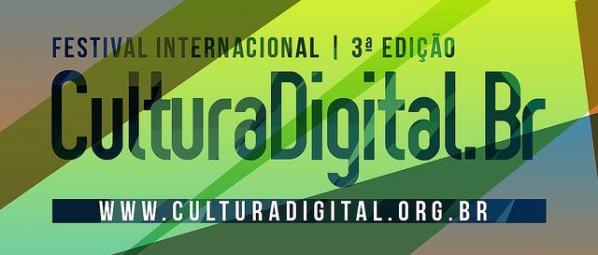
The Festival Cultura Digital is a project from Casa de Cultura Digital, “a criative cluster from São Paulo” composed by 15 institutions. For this project, Casa de Cultura Digital received an honourable mention in the Digital Communities category by Ars Electronica 2010.
One of the particularities of this event is that it brings together political institutions, artists, companies, activists and intellectuals in a hybrid format. The main goal is to change and broaden the limits of digital practices and connect to other people and networks from other cities, states and countries.
This edition of the festival had as key speakers Yochai Benkler (Harvard Professor and co-director of Berkman Center for Internet and Society), Kenneth Goldsmith (poetry professor of Pennsylvania University and founder of Ubuweb), Hugues Sweeney (producer of Interactive movies of National Film Board of Canada), Michel Bauwens (founder of P2P Alternatives), Philippe Aigrain (Sopinspace, CEO), Paulo Coelho (the famous Brazilian writer that made all his books available for download) and Heloisa Buarque de Hollanda (researcher on the relations of “marginal culture” and digital culture).
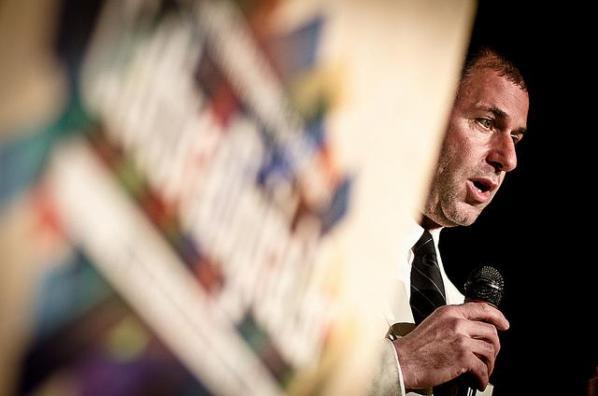
For the first time projects were chosen through an international open call and selected by a group of people involved with the festival. They’ve received almost 400 projects and selected about 80 that were organised in different themes: Construção de laboratórios de cultura digital (constructing digital culture labs), Encontros de rede (network meetings), Mostra de experiências (experience show) and Visualidades (visuals, that gather artistic projects to be shown and discussed).
Casa de Cultura, as defined by them, connects the counterculture from the 60s-70s to the cyberculture from the 21st century. The group itself has members as Claudio Prado, a key figure from the Tropicalia movement. He’s a cultural producer, co-founder of Glastonbury Festival and has produced many concerts of Mutantes and Novos Baianos. He currently coordinates the Laboratório Brasileiro de Cultura Digital. Gilberto Gil, the musician and ex minister of culture of Brazil is the “ambassador of Festival Cultura Digital”. Besides that, many members of Casa de Cultura are journalists, videomakers and programmers in their 30s or under that are directly involved with hackerspaces, independent journalism and public policies for digital culture.

It brings together as partners members of the international mass media as The Wall Street Journal and Reuters, Folha de Sao Paulo (one of the main newspapers in Brazil) as well as the blog Falha de Sao Paulo, that was sued by Folha de Sao Paulo for being critical about its content. Casa de Cultura Digital also represents the Brazilian node of Wikileaks.
Besides international selected projects like Waste2No, Pretty Resistant, Protei / Oil Compass, Bitcoin, Generadores de electricidad con basura electrónica, or The Cartographer; and nacional groups like Cotidiano Sensitivo, Garoa Hacker Clube, Gambiologia, Pandeiro Montagem, or Espaço Macambira, there were projects such as:
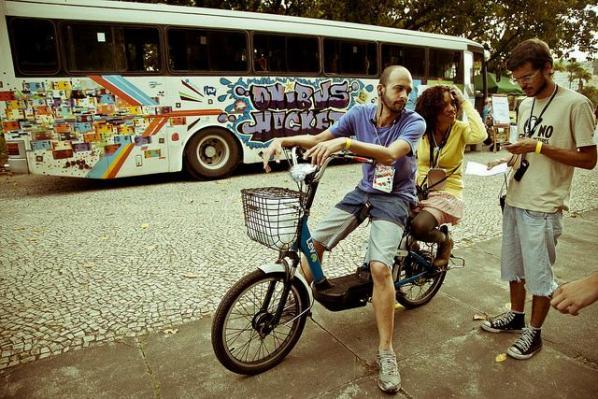
Onibus Hacker was a idea to buy a bus through donation to be modified to include webcam, 3G connection and GPS for Transparencia Hacker [1] projects. The projects are done during the trips to small cities among the group that travels in the bus and also virtually. Some of the projects include workshops, Hackdays and Install Fest to small towns (less than 5,000 inhabitants), also allowing local people to organize themselves (according to Brazilian legislature, anyone can propose a law if it’s signed by 5% of the local electors) that would benefit these contexts. The bus was bought and went to Rio de Janeiro to be shown and visited during the festival.
Brasuíno BS1 is a single board microcontroller inspired on Arduino that uses the AVR microcontroller. This Brazillian version was redesigned using Libre Software, free to reuse and derive, and it’s licensed as GPLv2+ (the original Arduino still uses a microchip that is not open hardware). It’s also compatible with Arduino Uno and Arduino software.
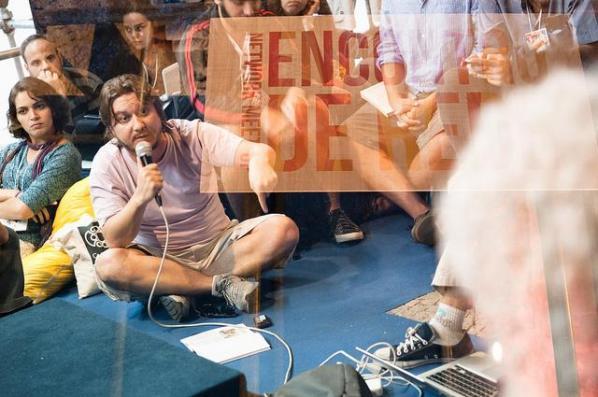
The project is composed by an IT lab based in the Kaiowá community Nhandejara that integrates the indigenous community to straighter demands and opens the discussion about their issues and projects outside the reserve through a web portal. Furthermore it offers workshops for inhabitants and people involved with the group and it’s a source of information for researchers. The project includes organization, digitalization, production and analysis of historical and cultural elements from the Kaiowá and Guarani tribes. The website is bilingual (Guarani-Portuguese).
Cultivo is the first crowdfunding network for Cultural Incentive Laws in Brazil. The main goal is to connect companies and projects approved so that they can contribute to their development. The project was launched during the festival. One of the ideas is to enhance the participation of the private sector in cultural projects. If a project is selected, the companies can use part of the tax money to support it. Nevertheless, many companies don’t know the projects or how to proceed, so Cultivo would be a portal to present the projects to the private community.
LALOCA is the Laboratory for Locative Media and GPS Films. It’s a centre for the production and research of mobile media at the Federal University of Juiz de Fora in collaboration with the University of California San Diego. The projects focus on locative cinema with interactive scripts based on open source OS and tools, as HiperGps, HiperGeo and walkingtools, whose project The Transborder Immigrant Tool [2] has caused great media frenzy and issues with the government for Ricardo Dominguez, professor, activist and one of the developers of the tool.
It’s a platform for mapping soundscapes in Rio de Janeiro and Niterói (greater Rio de Janeiro) based on the Universidade Federal Fluminense. It’s built in a collaborative way to collect a “Museum of sounds” of neighbourhoods and favelas.
Circuito Fora do Eixo is a network of cultural producers and artists from parts of Brazil outside Rio and Sao Paulo. These two cities are known as the cultural and economical “axis” concentrating the funds, spaces and media interest of the country – thus the name Circuito Fora do Eixo which literally means “circuit outside the axis”. The group began in 2005 as a way to stimulate bands to play and tour across Brazil. With the aid of certain technological developments that allowed direct distribution and the lowering of production costs they have created many small festivals (about 180 until today) and gained great relevance in terms of connection with the government and artists. Now Fora do Eixo has two permanent spaces called Casas Fora do Eixo, it has gained a national presence and has broadened its activities to include an interest in free digital cultural policies for education, audiovisual production, etc. [3]
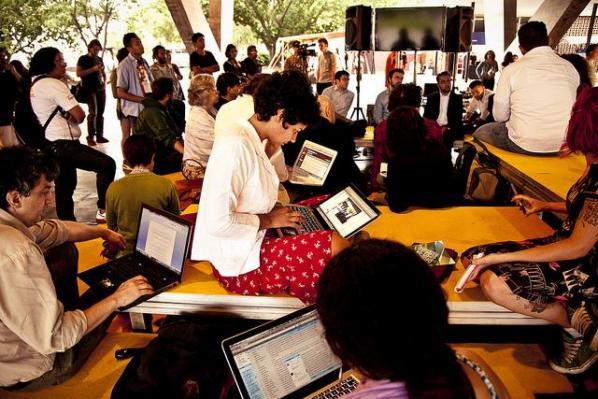
The Festival Cultura Digital is an exciting example of how collectives and individuals create a public and open space for sharing information, not depending but also not ignoring the public and private role in the national scenario. This process is particularly interesting for a country that is learning how to use networked technologies to overcome its gigantic size and its many cultural and socio-economic differences. It’s not an easy task, but it’s a lesson which is worth learning in times where the boundaries between public and private are blurred, when governments are ruled by investors and individuals change drastically the laws of the market as we know it.
Congresso Fora do Eixo – http://congresso.foradoeixo.org.br
Festival Cultura Digital – http://culturadigital.org.br
Casa de Cultura Digital – http://www.casadaculturadigital.com.br
According to the organization, there’ll be videos from the presentation available on the website by the beginning of 2012.
Taina Bucher interviews curator Gaia Tedone about her latest online curatorial project called ‘Is Seeing Believing?’ as part of the TRUTH programme at or-bits.com, an online platform for the display of contemporary arts and production of new works. Born in Italy, in 1982 Gaia Tedone holds an MFA in Curating from Goldsmiths, and has for the past year been one of the curatorial fellows at the Whitney Independent Study Program, New York. She has been involved in a number of art projects and worked with institutions such as Whitechapel Gallery, James Taylor Gallery, The David Roberts Art Foundation and Tate Modern.
Taina Bucher: Tell me a bit about your background for doing curatorial work. How did it get started and what are some of the thematic interests that have been important to your work?
Gaia Tedone: I started doing curatorial projects in London, where I was living and working for the past five years. The time spent at Goldsmiths was extremely formative from a practical and intellectual point of view. I was involved in a number of projects – some of them in collaboration with institutions in London, such as the series of talks Curating Fictions organised at Whitechapel Gallery, others were developed within the academic context, as for instance IM magazine and the publication A Fine Red Line (A Curatorial Miscellany) which I edited with fellow curators Isobel Harbison, Ilaria Gianni, Nazli Gürlek, Rosa Lleo and Yannis Arvanitis. The latter experience led us to establish the curatorial collective IM projects – a platform for editorial projects for which I contributed for the following two years.
The MFA in Curating at Goldsmiths and the Whitney Independent Study Program have both helped me to locate my interest in the history of art production within today’s global context and to look at the ways in which specific economic and political contexts shape the production and circulation of art. These two complementary programmes of study informed my research interests, which are located at the intersection between the fields of new media and cultural studies.
This year, within the context of the Whitney Program, I was exposed to a number of seminal authors and texts that since the 70s have contributed to the development of the field of cultural studies, and I was deeply inspired by the recent work of David Harvey and the political philosopher Chantal Mouffe. This intense year of research has informed the conception and realization of the exhibition Foreclosed. Between Crisis and Possibility that I co-curated with ISP fellows Jennifer Burris, Sofía Olascoaga, and Sadia Shirazi at The Kitchen in New York.
The exhibition, which included works by Kamal Aljafari, Yto Barrada, Tania Bruguera, Claude Closky, Harun Farocki, Allan Sekula and David Shrigley, took the current housing crisis in the U.S. as the departing point to explore other meanings of the word foreclosure, which also evokes processes of exclusion and a shutting down of recognition.
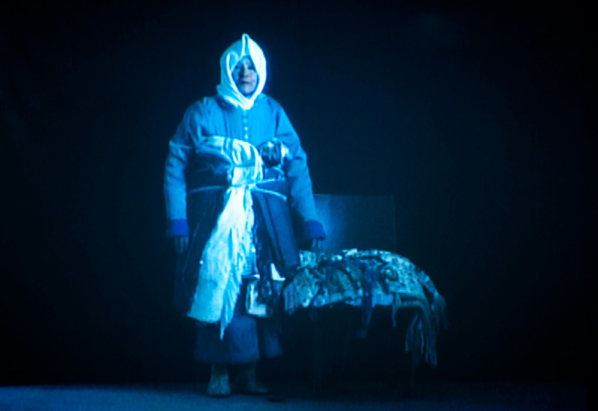
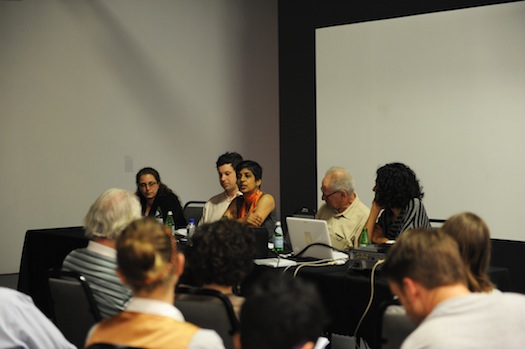
Taina Bucher: How did you get into doing online curatorial work?
Gaia Tedone: I was invited few months ago by Marialaura Ghidini to collaborate with her and Christine Takengny on the autumn issue of or-bits.com. Marialaura had some preliminary thoughts on how she wanted to develop the programme, and after few Skype meetings we established a common ground upon which we built three parallels projects. The programme curated by Marialaura was launched in early October with works by Angus Braithwaite/David Raymond Conroy/Adelita Husni-Bey/Iocose/ M+M (Marc Weis and Martin De Mattia)/Richard Sides and my response followed shortly after that. Is Seeing Believing? is my first curatorial work online.
Taina Bucher: How do you feel about exhibiting art online, what are the challenges and benefits? In what ways does the conceptual work with developing a project online differ from curating exhibitions in a more offline institutionalized setting?
Gaia Tedone: or-bits.com provided me with technical support in terms of coding and web-design, while I was left totally free to develop my own curatorial strategy. My original idea was to build up a True or False web-based questionnaire, mainly text-based. However, the project developed in a slightly different direction and I was happy to adapt its format to the eclectic contributions I was receiving. Once I gathered all the content, I chose to mimic the format of an online newspaper, as this seemed the best visual strategy to actually play with the ideas being put forth while maintaining an inner coherence for each artist’s contribution.
I found the context of the web extremely challenging from a curatorial perspective, as it required the ability to work simultaneously on different elements, from the editing of content to the formalization of a coherent visual output, employing an approach both flexible and rigorous. It felt like a condensed version of a ‘traditional’ show, yet faster in pace and with a different degree of curatorial control. It came together fairly organically. The Web I think poses a number of important questions, especially in relation to the short attention span we generally dedicate to what we read or look at when surfing the net. Would the type of art being produced have to play or interject whit this? How would it change the public’s experience or engagement? These are all open questions for me.
Taina Bucher: What is the idea behind your current exhibition on or-bits?
Gaia Tedone: The theme TRUTH developed out of several conversations inspired from Žižek’s text Good Manners in the age of Wikileaks and a shared interest in somehow questioning the democratic claim of the web as a space of freedom, in light of the recent developments of Wikileaks and of the role that social media played during the Arab Spring. In a world in which everyone can be the author of his/her own news, how do we assess what is true or false? And how is this shifting power’s relationships and individual agency?
Within this larger framework, the project Is Seeing Believing? specifically focuses on the relationship between image and belief and develops from the engagement with two particular images: first, the image of Caravaggio’s iconic painting The Incredulity of Saint Thomas (1601-1603), depicting Apostle Saint Thomas’ unwillingness to believe without direct, physical and personal evidence in Jesus Christ’s Resurrection. Second, the image published in the news showing President Obama, Hilary Clinton, Joe Biden, along with members of the national security team, watching Bin Laden’s death live.
The latter image, which quickly became one of the most publicly viewed in occasion of Bin Laden’s death, claims to present a less crude version of the story, but in fact it does not. On the contrary, it carries the absence of the image we are actually looking for – the one of Osama Bin Laden’s death body – affecting the viewer on multiple levels. On the one hand, by making the relationship between political power and media control even more visible; on the other, by acknowledging the necessity to see an image in order to believe in a fact. Then again, to what extent does it really matter if what we are looking at is the actual event or other people witnessing it? Has seeing become believing? These are some of the questions and preoccupations that have animated the conception and realization of this online project.
Taina Bucher: ‘Is Seeing Believing?’ is an exhibition displayed in the format of a newspaper. Who are the contributing artists?
Gaia Tedone: I began by approaching a number of artists, designers and activists whose work I admire and who, in my opinion, share a highly critical approach towards the production and reception of images and often employ a strategic use of the media in their practices. Some of the contributors, like for instance Jon Rafman, Nate Harrison, Alterazioni Video, The International Errorist and Foundand, have used the web extensively as the source and context of their works, others as for instance Azin Feizabadi and Oliver Ressler & Martin Krenn brought to the project their experiences of artists working within specific public spaces. A couple of interventions, such as the ones of MDR, Sadia Shirazi and Alessandro Sambini were specially conceptualised and produced for or-bits.com.
The idea of assembling them within the format of an online newspaper came at a later point, once all the material was gathered. It also pays homage to The New York Times Special Edition produced by The Yes Men and Steve Lambert and distributed for free in the streets of New York City in 2008. The paper announced the end of the Iraq’s war and changes in the US government’s policies on global warming, embracing for one day the philosophy of ‘All the News We Hope to Print’, at the beginning of President Obama’s administration.
The choice to play out specifically with Al Jazeera’s website was driven by the visual intelligibility of its design and by the desire to locate the project’s investigation within the context of this year political events and the role that social media played within the Arab Spring. As Sadia Shirazi interestingly points out in her contribution about Wikileaks as a socially engaged practice, if information is the terrain of war, what better context than a newspaper to put forth such urgent questions?
Taina Bucher: It is interesting that you say your or-bits contribution seeks to challenge the debate on image and truth by embracing the visual volatility of the web. Yet your newspaper is surprisingly static to be a webpage. Was this a conscious choice?
Gaia Tedone: This is a pointed observation. The webpage attempts to create a visual cohesiveness to the project, but it also asks the viewer to be actively engaged with the navigation.
I would see it as an attempt to fix in time the volatility of the web, maintaining in its content the associative and eclectic character of a browsing session, yet proposing a specific vantage point. In a sense it is like an exhibition, in which the works are in dialogue with each other, but have their own space and are framed by the specificity of the context.
Taina Bucher: Your project seems to suggest that we have no choice but to believe the image. Why is that? Haven’t we by now learned to be critical of the image, of its truthfulness and representability? Just think of Judith Butler’s book Frames of War where she addresses the dramaturgy of the Abu Ghraib photos. Susan Sontag already argued in 1977 that visual representation had become a cliché, that we are constantly bombarded with sensationalist images that numb our sense of believing. In what ways do you think, then, that the explosion of images online has somehow led to a diminished capacity to be critical?
Gaia Tedone: What interests me is the relationship between the access to images and the mechanisms of power that regulate this access and how this relationship is becoming more sophisticated and problematic within the context of the web and the role that social media play in the diffusion of images and information.
I think that a critical approach towards the reception of images is a condition that needs to shift and constantly adapt itself to the development of the image’s status itself. It cannot be separated from the historical and technological context in which images are produced and cannot be considered resolved as such, as the social and political configuration of the world is shifting also through the news and the images accompanying them.
Through the question Is Seeing Believing? I wanted to direct attention to the individual agency and the possibility for artists to filter, edit and rearrange the information and images they are exposed to, in this way challenging the notion of truth. To quote Siegfried Kracauer, who is also mentioned in the project, and his famous collection of essays ‘The Mass Ornament’ published in 1963: Never before has an age been so informed about itself, if being informed means having an image of objects that resembles them in a photographic sense. Never before has a period known so little about itself. In the hands of the ruling society, the invention of illustrated magazines is one of the most powerful means of organizing a strike against understanding.
These words still resonate powerfully with me, as they crucially point out to the ambiguous relationship between photography and information. Although there is a risk involved in believing in the image – risk that we must be aware of – what happens when the access to the image is negated to us? When this process of identification, compassion and repulsion that images often instigate is no longer accessible? Do we stop believing in reality or do we start to understand it?
President Obama’s decision not to diffuse the image of Osama Bin Laden’s body marks, in my opinion, a very important moment in the history of the images of the last decade.
It counterbalances with its absence 9/11, one of the most photographically reproduced events of this century – the day in which history and fiction met in the brutal instant of a photographic frame. I see this absent image as an occasion to stop, look back and critically reflect on what happened
White Heat Cold Logic
British Computer Art 1960-1980
Edited by Pal Brown, Charlie Gere, Nicholas Lambert and Catherine Mason
ISBN 9780262026536
MIT Press 2008
This is the third and last in a series of reviews of the results of the CACHe project. The first review was of the V&A’s show and book “Digital Pioneers“, the second was of Catherine Mason’s “A Computer In The Art Room”. Where “A Computer In The Art Room” concentrated on the history of art computing in British educational institutions up to 1980, “White Heat Cold Logic” gives voice to the individuals who made art using computers in that period more generally.
Charlie Gere’s introduction explains the source of the book’s title, referring to the British Prime Minister Harold Wilson’s famous 1963 speech that a new Britain would be forged in the white heat of the scientific and technological revolution. Gere provides an overview of the history of art computing in the era that may be familiar from “A Computer In The Art Room” which is much needed, for it provides useful context for what follows in this volume. He also argues for the value and interest of the history of art computing, in terms that make it clear for academia.

Roy Ascott describes the emergence of pre-computational art informed by cybernetics, systems theory and process against the background of the emergence of “Grounds Course” art education. Adrian Glew documents Stephen Willats’ use of computing in the processes of his art of cybernetic social engagement, the first but not the last more mainstream British artist to appear. John Hamilton Frazer describes the unrealised interactive architecture of the 1960s “Fun Palace” and 1980s “Generator” and of the technology and social legacies of these nonetheless influential projects.
Maria Fernandez puts the figure of Gordon Pask centre stage. As John Lansdown (to whom this book is dedicated) emerged as a major figure behind educational arts computing in “A Computer In The Art Room”. Gordon Pask also emerges in this volume as the cybernetic prophet of the 1960s, mentioned by many in the early essays in this book. His own interactive theatre and robotic mobiles complement his involvement in planning the Fun Palace and as a source of ideas and support for more projects.
Jasia Reichardt provides a theoretical and practical insight into the genesis of her foundational “Cybernetic Serendipity” show at the ICA in 1968 and considers what came next. Brent Macgregor provides an outside view of the same. Neither attempts to mythologize this much mythologized show, the reality of its achievements is more than impressive enough.
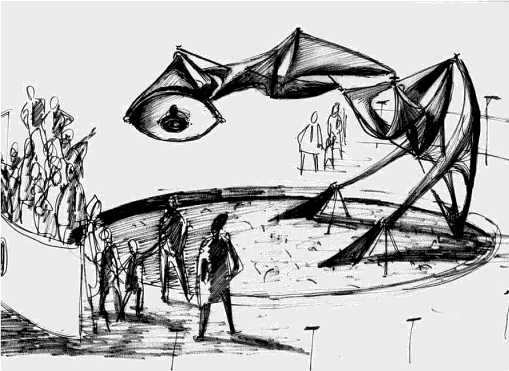
Edward Ihnatowicz is the subject of two essays, one with tantalising images of preparatory and documentary material by Aleksandar Zivanovic and an insightful but more personal essay by Richard Ihnatowicz. Hopefully his reputation will continue to increase towards the level it deserves.
Richard Wright follows the ideas of Constructivist art into Systems Theory, which alongside cybernetics is one of the guiding ideas of the art of the period overdue for rediscovery both within art computing and more generally.
Harold Cohen remembers the origins of his “AARON” painting program in a tale of the struggle of art against bureaucracy. Tony Logson’s tale is surprisingly similar, although his systems-based art is very different from Cohen’s cognitively-inspired forms. Simon Ford reveals Gustav Metzger’s involvement with early computer art and with the Computer Arts Society (CAS). CAS also feature large in Alan Sutcliffe’s description of his computer music compositions, one of many essays that left me wishing I could see the code and experience the art as well as reading about it.
George Mallen also touches on CAS, and on Pask’s System Research Ltd. as he explains the art and business of the production of the unprecedented environmentalist interactive multimedia of the “Ecogame”. The Ecogame is one of many works in the book that people simply need to know about. Doron D. Swade makes the idea of the “two cultures” of art and technology that came together for the Ecogame more explicit in an attempt to recover the art of the Science Museum’s first computing exhibit.

Malcolm le Grice and Stan Heyward each describe the institutional travails of making some of the first computer animation in the UK. Catherine Mason draws together the history of many of the institutions already mentioned in what is both a recap and an extension of the history she presented in “A Computer In the Art Room”. Stephen Bury and Paul Brown bring the influence of the Slade to the fore in their chapters, revealing the Slade as an important piece in the puzzle of British Computer Art.
Stephen Scrivener, Stephen Bell, Ernest Edmonds and Jeremy Gardiner each describe their personal artistic journeys through the era of FORTRAN and flatbed plotting, illustrated by images of their work that again made me wish I could also see the code. Graham Howard describes how conceptual artists Art & Language didn’t use a university computer to generate the 64,000 permutations of one of their “Index” projects of the 1970s, instead gaining access to a local produce distribution company’s mainframe across several weekends.
The different strands of technology, institutions, ideas and economics are all drawn together in John Vince’s history of the PICASO graphics library, which spread from Middlesex Polytechnic to many other educational institutions and the successor to which, PRISM, was used to make the first logo for Channel 4.
Brian Reffin Smith makes clear, artists were as affected by the idea of computing as by computers themselves, especially when they didn’t have access to them. The Fun Palace was influential despite never being realized, Senster was influential despite being lost. It is important to realize just how limited access to computing machinery was in the era covered by the book, and to recognize how ideas of computing and its potential were part of the broader intellectual environment of the time.
Finally, Beryl Graham’s postscript covers the history of UK arts computing after 1980. I lived through some of the period covered and I recognise Graham’s description of it. The critical irony that she identifies in UK net.art and interactive multimedia is of key importance to its art historical value. Although I would question how uniquely British this is, the UK certainly took it as a baseline. As with Gere’s introduction, Graham presents the case for art computing in a way that the art critical mainstream should not just be able to understand but should be inspired by. Cybernetics, systems theory, environmentalism, socialisation, the content of conceptual art, and the political concerns and developments of the Cold War all illuminate and are in turn illuminated by this history.
For a book about art computing it is frustrating how little art and source code is illustrated in the book. Much work has been lost of course, and “Digital Pioneers” does illustrate art from this period. But for preservation, criticism and artistic progress (and I do mean progress) it is vital that as much code as possible is found and published under a Free Software licence (the GPL). Students of art computing can learn a lot from the history of their medium despite the rate at which the hardware and software used to create it may change, and code is an important part of that.
White Heat, Cold Logic presents hard-won knowledge to be learnt from and built on, achievements to be recognised, and art to be appreciated. Often from the people who actually made it. What was previously the secret history or parallel universe of art computing can now be seen in context alongside the other avant-garde art movements of the mid-late 20th century. I cannot over-emphasise the service that CACHe has done the art computing community and the arts more generally by providing this much needed reappraisal of early arts computing in the UK.
The text of this review is licenced under the Creative Commons BY-SA 3.0 Licence.
Since the turn of the millennium, there have been shifts toward new forms of sociopolitical dissent. These include strategies such as cellular forms or resistance including asymmetrical warfare like global insurgencies, the use of social media. Examples would be Twitter and Facebook in their ability to lens dissent for actions in Syria, Egypt and Tunisia, Wikileaks and its ability to mirror, and politics that use anarchistic forms of collective action such as the Occupy Movement. Although my focus is more concerned with the Occupy Movement, what is evident is what I call an amorphous politics of dissent. Amorphous is defined as “without shape”, and can be applied to most of the mise en scenes listed above.
The dissonance of power in regards to conventional politics can be seen in its structure. For example, the nation-state has a tiered, hierarchical structure of power relations. There is a President or Prime Minister, a legislative organ of MPs or Representatives, Parliaments, Houses, and the like, a Judicial organ, and a Military organ that includes any number of militia and police. Although I am referring mostly Western forms of government, we can also argue for the hierarchical form in terms of the Corporation, with its CEO, Board, Shareholders, Managers, and Workers. This can be expanded historically to Feudal lords with their retinue of Vassals, Nobles and Warlords with their coteries of Warriors and support personnel. The point is that conventional power typically operates in a pyramidal command and control hierarchy with a centralized Leader at the “capstone”. One can argue that the pyramid may have different shapes, or angles of distribution of power, but in the end, there is usually a terminal figure of authority. To put it in terms of stereotypical Science Fiction terminology, when the alien comes to Earth, the standard story is that it pops out of the spacecraft and says, “Take me to your leader.” This signifies the hegemonic paradigm of Leadership as the central gestalt of First world power. Leadership, then, is the conventional paradigm of power in Western culture, and dominates the industrialized world.
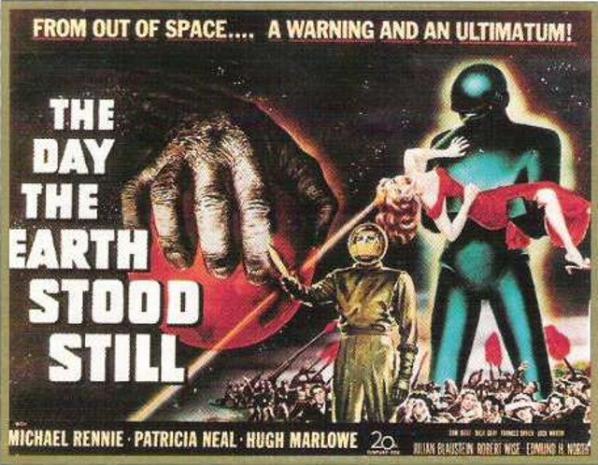
Territorialization refers to the exertion of power along perimeters, or borders. Functionaries expressing the constriction of territory include customs agents, and border patrols; but are terminally expressed by the military wing of the nation state. This military is also generally pyramidally constructed in terms of Generals, Colonels, and other officers leading Battalions, Regiments and Divisions, which are organized as defenders of a nation’s sovereignty. These military organs are conversely best optimized to exert their power against either parallel or subordinate structures. Parallel structures include the armies of other nations, their Officers, et al, and their troops and ordnance that possess a similar organization. Conversely, subordinate structures over which military powers can exert power over are domestic masses that can be overrun with overwhelming power, although these forces are more specialized (such as National Guards or Gendarmeries). In the conventional sense, power is expressed orthogonally, whether it is against equal or subordinate forces.
Another aspect of this conversation relates to the expression of power/force through conflict and violence, but has its inconsistencies The examples I will use from American pop culture I will use in this missive to explain amorphous action may be violent in nature, but the violent nature of these examples do not relate to the paradigmatic jamming of conventional power. Their citation is related more to the fact of conventional power’s orthogony, or parallelism of exertion of power to similar structures or dominance of the subordinate, and the panic state it experiences when confronted with non-conventional difference or passive resistance. We could express the power relationships between amorphous politics and conventional power in terms of a tetrad in terms of examples of violent and peaceful exertion of amorphous dissent as well as orthogonal conflict. We could cite the Occupy movement as a site of passive, and the Tunisian uprising as violent exemplars of amorphous conflict or dissent. Conversely, the Gandhi/King is a non-violent model of as orthogonal/hierarchical/led action, and World War Two as conventional orthogonal conflict. What is important here is the inability of the conventional politics and power to cope with leaderless, non-hierarchical, non-orthogonal discourse that refuses to talk in like terms such as centralization, leadership and conventional negotiations that include concepts such as “demands”. This is where the site of cognitive dissonance erupts, often resulting in a panic state or in the “figureheading” of dispersed networks of power.
The need for the traditional power structure to focus identity on the antagonist in terms of figureheads is evident in the Middle East and Eurasia in the personification of terrorist and insurgent networks, but is more simply illustrated in the films Alien and Aliens, and Star Trek: The Next Generation. Both of these feature their respective antagonists, the “alien” as archetypal Other, and the Borg, symbol of autonomous, collective community. In Alien, the crew of the Nostromo encounters an alien derelict ship that has been mysteriously disabled to find a hive of eggs of alien creatures whose sole role is the creation of egg factories for further reproduction. At the onset of the franchise, pilot Ellen Ripley is positioned as the “everywoman” placed in the center of cataclysmic events. In the Alan Dean Foster book adaptation, and an extended edit of the Scott film, Ripley finds during her escape from the ship that Captain Dallas has been captured and organically transformed into a half-human egg-layer whom she immolates with a flamethrower. However, in the Aliens sequel, the amorphous society of the self-replicating aliens has been replaced by a centralized hive, dominated by a gigantic Queen that threatens to impregnate the daughter-surrogate Newt. This transformation from a faceless to centralized threat creates a figurehead for the threat and establishes a clear protagonist/antagonist relationship, and establishes traditional orthogony.
This simplification of dialectic of asymmetrical politics is also evidenced in Star Trek: The Next Generation by the coming of the Borg, a collective race of cybernetic individuals. Although representations of the Borg vary as to fictional timeline, in televised media they began as a faceless hive-mind, which abducted Captain Jean-Luc Picard as a mouthpiece, not as a leader. It was inferred that if one sliced off or destroyed a percentage of a Borg ship, you did not disable it; you merely had the percentage left coming at you just as fast. However, by the movie First Contact, the Borg now possesses a hierarchical command structure to their network and, more importantly, a queen. With the assimilated and reclaimed android Lieutenant Data, the crew of the Enterprise infiltrates higher level functions of the Borg Collective, effectively shutting down the subordinate elements of the Hive. In addition, the Queen/Leader is defeated, assuring traditional figurehead/hierarchy power relations rather than having to deal with the problems of the amorphous, autonomous mass. There are other “amorphous” metaphors in cinema that address the issue of amorphousness. These include the 1958 movie, The Blob, in which a giant amoeba attacks a small town and grows as it engulfs everything. Another is The Thing, about a parasitic alien that doppelgangs its victims, creating another form of faceless threat. Lastly, we have the classic Invasion of the Body Snatchers where alien plant “pods” would bear fruit of duplicates of living people, giving a metaphor for the Communist threat of the Red Scare originating during the Cold War. Perhaps these are historical references to mediated expressions of anxiety in regard to autonomy’s threats to regimented/striated hegemony, stating that this sort of anxiety and terror are not new.

One of the most asymmetric cultural Western interventions in relation to constructs of traditional power is the involvement of Anonymous as part of the Occupy Movement. Anonymous, which has been called a “hacker group” in the mass media, is a taxonomy created on the online image sharing community 4chan.org, arising from the practice of posting “anonymously” unless one wants to use a name, or handle. Although the idea of Anonymous is at best an ad hoc grouping, the use of the “group” name has been ascribed to various factions. According to The State News, “Anonymous has no leader or controlling party and relies on the collective power of its individual participants acting in such a way that the net effect benefits the group.“ The idea of Anonymous fits with the “faceless collectives” mentioned above, and certainly presents an asymmetric, if not non-orthogonal, exercise of power. Anonymous first rose as a voice of dissent that emerged against the Church of Scientology (see Project Chanology), where flash mobs of individuals in Guy Fawkes masks and suits arrived to protest at sites around the world, with boom boxes playing “The Fresh Prince of BelAir”, a popular agitational or “trolling” anthem. It has engaged in other activities, including hacking credit card infrastructures opposed to handling donations to Wikileaks and creating media around Occupy Wall Street. However, without a clear infrastructure and only transient figureheads, Anonymous functions as an organizing frame for a cloud of individuals interested in various collective actions, and represents an indefinite politics based on networked culture. In an expected exercise of force, during the actions against elements opposed to Wikileaks, conventional power struck back wherever it could against members of Anonymous, by arresting over 21, some violently, in July during the actions against credit providers boycotting Wikileaks. This exercise of power was repeated in September, with admonitions about the arrests appearing on YouTube thereafter. Anonymous has also posted videos in support of the Occupy movement. Such a response is not surprising, but is the exact response to non-orthogonal dissent under our model. The problem is that in arresting any number of Anonymous members, traditional power is confronted with the first, distributed model of the Borg that merely exists minus two or twenty members.

Another dissonance between the Occupy Movement and conventional politics is the perceived lack of agenda. This is due to its dispersion of discourse in giving its constituents collective importance in voice. What is the agenda of the disempowered 99% of Americans, or world citizens marginalized by global concentration of wealth? Simply put, the agenda is for the disempowered to be heard. What does that mean? It means anything from forgiveness of student loans to jobs to redistribution of wealth to affordable health care, and so on. It isn’t a list; it is a call to systemic change of the means of production, distribution of wealth and empowerment in political discourse. It isn’t as simple as “We want a 5% cut in taxes for those making under $30,000.” It’s more akin to “We’re tired that there are so many sick, hungry, poor and uneducated, and we want it to end. Let’s figure it out.” It is the invitation to the beginning of a conversation that has no simple answers other than the very alteration of a paradigm of disparity that has arisen over the past 40 years through American capitalism.
The last challenge to the traditional power discourse is that of passive resistance. This is not a new strategy, especially under the aegis of Gandhi and King’s movements. However, it is traditional power’s mere tolerance of nonviolent resistance that does not result in violence. As we can see from the UC Davis assaults and the dispersions after the second month anniversary, conventional power exerts its force against, as Brian Holmes put it, “anomalies” so that the system can be restored and the commodifiable classes are reintegrated into the system to reproduce its agendas. As long as resistance does not present undue inconvenience for the circulation of power and capital, it is allowed. Once it loses its patience with non-orthogonal forces, or if materially sacralized spaces, like Wall Street are threatened, the hegemonic order is reified. The irony of the technical loophole of Zucotti Park being privately owned and having few rules allowed the Occupy movement also highlights the tenuousness of public discourse in Millennial America. However, even with this oddity, on the two-month anniversary of Occupy Wall Street, force has begun to be used against the occupiers as traditional power’s patience grows thin with amorphous politics. In the streets, the marches are split up, and rules about occupation begin to be enforced with cupidity. As said before, hegemonic patience has worn thin, with assaults/dispersions taking place in Oakland, Davis, Philadelphia, and New York, among others. However, the movement moves forward for the moment.
Amorphous politics is based on plurality, collectivism, dispersion and ideas. The hierarchical nation-state has no idea what to do with the amorphous blob as it grows except to try to contain it, but as with Anonymous, it is a whack-a-mole game. If one smacks down one protest, two pop up across town, or five websites pop up on the Net. Shut down Wikileaks, and a thousand mirror sites show up. People in the streets swarm New York and other cities throughout the US, and the world, and conflict arises. Asymmetry and amorphousness are dissonances to traditional power. Ideas in themselves are not hierarchical.
Desires sometimes have no agendas.
Sometimes people want what is right, and all of it.
Dragana Zarevska and Jasna Dimitrovska are visual and performing artists, cultural workers and activists from Macedonia, who also, often work together under the artistic pseudonym Ephemerki. While at the same time loving and teasing the rigidity of academism, they like decoding magic, making it transparent, go behind Wizard of Oz’s curtain and put his pants down. The name of the duo is a funny derivate of Bapchorki (band of few grannies who used to sing Macedonian traditional songs in a rustic nasal style). It suggests that Ephemerki are their ephemeral version, or at least, the ones doing the ephemeral part of tradition. Their work is driven from and inspired by Donna Haraway, Judith Butler, Deleuze and Guattari, Agamben, and other contemporary thinkers and practitioners within arts, technology, society.
The Lele method is their latest performance (a performative event for a bunch of people, as they like to call it) and so far was performed at AKTO 6, Festival for Contemporary art in Bitola and Kondenz & Locomotion, Performing arts festivals organized in Skopje and Belgrade. Here is the story behind the project.

Darko Aleksovski: ‘Lele’ (Мac: леле) is a word that has profound significance in the Macedonian language. It is a universal word that can be used in different contexts and can imply several different emotional states. Can you describe what was the inspiration for this project dedicated to the word ‘lele’? What is the subjective meaning of this word for you?
Dragana Zarevska/ Jasna Dimitrovska: The particular situations this word implies and the problems it addresses might sound quite confusing for the non-Macedonian readers, but, if any of them have visited, or will visit our country, it’ll be deadly surprising how many “leles” per minute one hears around. The word “lele” is totally devoid of meaning, but it is being used to emphasize certain emotions, wondering, shock, great happiness and similar. It is just a shout out, like…the French “oh-la-la” for instance, the Bulgarian “ma-leeeh” or like the Serbian “yoooooy”. The project is being titled “The Lele Method”, directly and totally driven from the local obsession with lele and its possible application.
For us, this word sometimes depicts the shortly shaken numbness and the apathy of our current socio-political constellations, but only with a shout, and then again – everything goes on as usual.
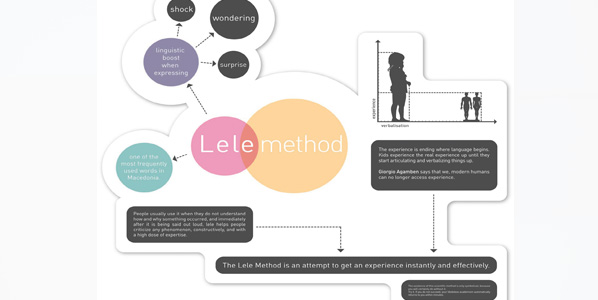
Darko Aleksovski: What is the ‘lele method’? Considering the performative act of the ‘lele’ word, and its everyday use in Macedonian speech, do you think that a method like this can still function as relevant? Can the ‘lele method’ be appropriated by anyone, or it is just a method that you as an artist use?
Dragana Zarevska/ Jasna Dimitrovska: Sure. It can be appropriated by anyone, but it is still a joke. You will certainly do without it as a method. Using it will not bring anything to your life what you’ve not had before. This is how we define it: Lele is one of the most frequently used words in Macedonia… people usually use it when they do not understand how and why something occurred, and immediately after it is being said out loud, Lele helps people criticize any phenomenon, constructively, and with a high dose of expertise. Try it. If you do not succeed, your libidoless academism automatically returns to you within minutes.
These instructions can help a lot in experiencing this useless experience through this useless method. But, stating the obvious with The Lele Method is what we enjoy the most. We give people what they already have, like selling snow to Eskimos.
Recently, in an interview we gave for the Canadian .dpi Magazine we discussed some particular effects we achieved by performing Lele. Nobody is aware of performing it daily here in Macedonia, and while we were preparing the performance out of it/about it, we realized the power of defamiliarization. You perform something which is being performed daily in a constant automatization. By naming a method Lele and putting it on a stamp, we gave the word a particular relevance and a different form. We made it “unfamiliar” and “difficult”, and by that, we prolonged the process of perception of that word. By trying to remove the automatism of perception, we got a new perspective of a word, of a problem. This technique has been used in the literary criticism of Russian formalism to differentiate prose from poetry, but we use it to differentiate and to delay perception. As Russian formalist critic Viktor Borisovich Shklovski has said in his well-known essay “Art as Device,” – the purpose of art is to impart the sensation of things as they are perceived and not as they are known.
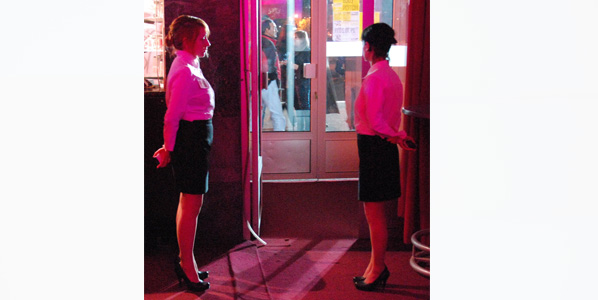
Darko Aleksovski: You have presented this project two times so far – as a performance accompanied by the printed version of the scheme of the ‘lele method’. How much performance is a necessary medium for this project?
Dragana Zarevska/ Jasna Dimitrovska: We’ve shown the performance at this year’s Akto Festival for Contemporary Art during August (Bitola/Macedonia), and at the Kondenz & Locomotion curatorially joint festivals for performing arts organized in Skopje and Belgrade during October. We must admit we entertain ourselves a lot during the performance because people enter the room and they perceive it as some irrelevant and boring employees who put a stamp on everyone’s hand at the venue’s door. Then, they look at the stamped hand/arm and shout “Leeeeeh-leeeeeh!” because that’s being engraved on our stamps.
During the performance we are dressed in our Lele uniforms which are extremely office-like and conservative, our faces are shit-serious, and inside the room there are printed materials (scattered leaflets on the tables, or printed panels on the wall) with diagrams on them explaining the empirical part of the Lele Method. The concept behind the Lele Method is being driven by our love and respect towards Giorgio Agamben’s work and his ideas on experience shown in his work Infancy and History. The experience is ending where language begins. Kids have the real experience until they start articulating and verbalizing things up. Giorgio Agamben says that we, modern humans can no longer access experience. The Lele Method is an attempt to get an experience instantly and effectively. The existence of this scientific method is only symbolic, because it is just mocking the academia and the naive ones simultaneously, as – all of the work we did/do by far.
Much of this performance auto-perpetuated, it is happening by itself. Performance is always a necessity. It is better for us to be aware of it, because we all perform all the time. This performance is all about being aware that we perform something of which we usually forget, but is actually performable – something automatized like the word Lele.
Darko Aleksovski: The project was very well received by the audience, other artists and critics. Does it have another aspect of it, that is directed as a critique towards the whole Macedonian art system?
Dragana Zarevska/ Jasna Dimitrovska: Thank you for this notion. Actually it was fantastic how great it was received. Our work can often be seen as an overlap between theory, movement, process and production. The contextualization of these things shapes the performative events we present that test and deconstruct different versions of reality and its geography, directly related to awareness of the possibilities of language. We criticize language/es through language.
Darko Aleksovski: Do you see ‘lele’ differently, now that you have made a project out of it?
Dragana Zarevska/ Jasna Dimitrovska: Yes we do. We got de-familiarized with it (by getting hiper-familiarized), while, at the same time we started to think of it as of our own word, which is pretty selfish. We totally “adopted” it. Other people who came to our performances also tell us they experience it a bit differently than before, one friend said “Whenever I say Lele I think of you!”. We know this might sound weird and vain, but it seems we assimilated it as our own piece of art, and the truth is – it is so not ours, it is everyone’s. We surely assimilated the illusion of having it as ours though.
more about the artists: zarevska [at] gmail.com, yasna.dimitrovska [at] gmail.com
In February 2012 Furtherfield is opening a public gallery at McKenzie Pavilion in Finsbury Park, providing space for exhibitions, activities and events for art, technology and social change. Before we officially open we would like to invite local community groups and organisations to join us in a friendly networking event which we hope will be the first of many, leading to fruitful partnerships and collaborations.
Inviting Local community groups!
During the event, you will…
– Meet up, be seen, show what you do
– Get to know other organisations and discuss ways we can collaborate
– Inform Furtherfield as to what can happen in the space
We are living through times of great change and uncertainty. Over the next 18 months, Furtherfield hopes to provide a space for imaginative exchange between artists – international and local, of all ages and backgrounds – on epic and everyday themes. Our success depends on the quality of our conversations. We hope that this event will be the first of many that will lead to fruitful partnerships and collaborations. We are inviting local organisations and groups involved in the arts, education, community engagement and support, and all of those working in and running activities in the park.
A full list of confirmed guests will be made available at the event. Please tell us about people or organisations who are important to our area and or who might want to come along and get involved.
Refreshments will be provided.
Please RSVP to Alessandra Scapin, Furtherfield Programme Manager and Coordinator, on ale[at]furtherfield.org to confirm your attendance as the pavilion has limited capacity or on 020 8802 2827 (please leave a message – we are not always in the office)
For more information about getting to the gallery http://www.furtherfield.org/gallery/visit
Furtherfield presents Moving Forest 500 Slogans workshop at Victoria & Albert Museum.
Join AKA the Castle for up to 5 slogan workshop sessions, December 2nd-4th at the V&A, as part of Moving Forest London 2012 initiative.
The Moving Forest 500 slogans workshop invites writers, artists, performers, theatre practitioners, soundists, noisers, singers (of all genres), scholars and folks to come together to contribute their readings of the 500 slogans written by Dr Matthew Fuller alongside Graham Harwood’s 12 hour rendering of the final 12 minutes of Kurosawa’s film version of Macbeth, Spider Web Castle.
Read, recite, sing, shout, scream, murmur, memorize and burn the slogans and plot the 500 slogans as the main thread through the 5 acts of MOVING FOREST.
Moving Forest is a 12 hour, five act, visual, sonic, digital, electronic and urban performance collectively realized by AKA the Castle, a temporal performance troupe bringing together visual artists, writers, soundists, silk threaders, codedecoders, macromikro, boombox mass, mobile agents, wifi fielders and urbanites. 12 hours of sonic, coded action map an imaginary Castle and camouflage forest revolt onto a given modern day metropolis.
We welcome public participation in Moving Forest 500 slogans workshops.
By participating, you join AKA the Castle’s collective reading and planning towards staging Moving Forest 12 hour performance in London summer 2012.
Please sign up below to take part in one or more workshop sessions.
Friday 02 December, 6-9pm
Saturday 03 December, 11-1pm
Saturday 03 December, 2-4:30pm
Sunday 04 December, 11-1pm
Sunday 04 December, 2-4:30pm
All workshops will take place in Seminar Room 1, Sackler Centre, V&A.
To sign up to one or more sessions please write to now@movingforest.net
or select your session on the 500 slogans wiki
http://scrying.org/doku.php?id=500slogans
Free workshop admission.
Victoria and Albert Museum
Seminar Room 1, Sackler Centre
Cromwell Road, London SW7 2RL
http://www.vam.ac.uk/
Additional workshop activity at SPACE as part of Moving Forest London 2012 initiative
More info: http://spacestudios.org.uk/whats-on/events-projects/moving-forest-pd-pure-data-workshop
More information about Moving Forest:
http://www.movingforest.net
http://movingforest.net/html/slogans.html
The partners for Moving Forest London workshop development are MA Interactive Media & Centre for Cultural Studies at Goldsmiths University of London, Furtherfield, SPACE, Digital Programmes,V&A.
AKA the Castle
Strategy workshops: How Can A Forest Move?
Part of Moving Forest London2012 development workshops
All events are free but space is limited.
Booking essential. Please RSVP to now@movingforest.net
Friday 9 December 2011, 11-4pm. Furtherfield Gallery
Isaac Marrero-Guillamón – The Militant City
Saturday 10 December 2011, 11-4pm. Furtherfield Gallery
Rachel Baker and Kayle Brandon – The Witches and 3-Keys
Monday 12 December 2011, 6-9pm. Furtherfield at SPACE MediaLab
The Laboratory of Insurrectionary Imagination presents:
TREE THOUGHTS: Strategies of artivisme and permaculture, a taster
Furtherfield Gallery, McKenzie Pavilion, Finsbury Park, London N4 2NQ
Friday 9 December 2011, 11-4pm
The Olympic mega-event is akin to Rancière’s ‘order of the police’. It regulates what is visible and invisible, sayable and unsayable, thinkable and unthinkable; it distributes individuals and groups in positions of ruler or ruled.” Join Isaac Marrero-Guillamón, researcher for The Militant City, in a discussion and workshop on exploring the role of art in relation to the Olympics, its legal architecture, and its elevation to a ‘state of exception’. Bring projects, ideas, stories and prepare for battle over the control of language, sign, transmission and public space.
Furtherfield Gallery, McKenzie Pavilion, Finsbury Park, London N4 2NQ
Saturday 10 December 2011, 11-4pm
Rachel Baker and Kayle Brandon jointly lead this day of prophecy, prediction and mobilization strategies for mapping the Moving Forest onto the London Olympics; tuning in the camouflaged branches to the contemporary mood of economic chaos and revolt.
Rachel Baker – Witches, Prophecy and Prediction
The story of Macbeth began with a witches’ prophecy and ended in murder and revolt. Did the witches predict a future already seen or did they merely plant some well-placed psychological seeds to trigger a self-fulfilling prophecy? In doing so, were they able to influence reality? What prior information did they need to have? Is it the magical, spectral appearance of the witch that lends the prophecy its power, or their insertion into everyday life?
Kayle Brandon- 3-Keys
The three witches’ prophecy and their tools and techniques of divination are deployed to make a card game called The 3-Keys. Illuminating insurgent mobilisation strategies, the game will map the key relational powers within the Olympic game, matching/twinning them with the essential Macbeth elemental and physical conditions. Discussion will surround further oracle, divination tools and techniques that enable one’s actions to be fated or influenced by these processes.
The Laboratory of Insurrectionary Imagination presents:
Furtherfield at SPACE MediaLab
, 129—131 Mare Street, London E8 3RH, 020 8525 4330
Monday 12 December 2011, 6-9pm
This workshop is a taster to methodologies that merge ecological design models of Permaculture with forms of creative resistance. Permaculture mimics the patterns of living systems and applies them to human designs, these whole system thinking tools will be applied to strategies for developing creative actions. The workshop is suitable for artists and activists of all sorts and with any kind of experience and aims to give a feel of how it might be to “think like a forest”.

The workshops are in preparation for a performance of Moving Forest, first presented at Transmediale.08 in Berlin, during London Olympics 2012 by AKA the Castle in partnership with MA Interactive Media & Centre for Cultural Studies at Goldsmiths, University of London, Furtherfield, Space, MzTEK, Digital Programmes and Victoria and Albert Museum.
A 12 hour, five act, visual, sonic, digital, electronic and urban performance collectively realized by AKA the Castle, a temporal performance troupe bringing together visual artists, writers, soundists, silk threaders, codedecoders, macromikro, boombox mass, mobile agents, wifi fielders and urbanites. 12 hours of sonic, coded action map an imaginary Castle and camouflage forest revolt onto a given modern day metropolis.
Isaac Marrero-Guillamón
Isaac Marrero-Guillamón is a sociologist/anthropologist. He has lived and worked in London since 2007. He is currently a post-doctoral research fellow at Birkbeck, University of London, undertaking a two-year project called The Militant City, which investigates artistic practices critical towards the Olympics.
Rachel Baker
Rachel Baker is a network artist who collaborated on the influential irational.org. Her art practice explores techniques used in contemporary marketing to gather and distribute data for the purposes of manipulation and propaganda. Networks of all kinds are “sites” for Baker’s public and private distributed art practice, including radio combined with Internet (Net.radio), mobile phones and SMS messaging, and rail networks.
Kayle Brandon
Kayle Brandon is a inter-disciplinary Artist/researcher, whose work is sited within the public, social realm. She predominantly works in collaborative and collective fields; a working method which informs much of her ethos around the making of art. Her main areas of interest are in the relationships between the natural and urban worlds and Human/Non-human relations. She investigates this field via physical intelligence, provocative intervention, observation, self-guided exploration and collective experiences.
The Laboratory of Insurrectionary Imagination
Infamous for fermenting mass disobedience on bicycles during the Copenhagen climate summit, throwing snowballs at bankers, touring the UK recruiting a rebel clown army and covering the Tate in unwanted molasses to get them to drop BP funding, The Laboratory of Insurrectionary Imagination (Lab of ii) exists somewhere between art and activism, protest and poetics.
Furtherfield Gallery, McKenzie Pavilion
Finsbury Park, London N4 2NQ. Open 11-4pm
For details on how to find us visit our contact page.
Oliver Grau’s recent publication “Imagery in the 21st Century”, that he edited with Thomas Veigl, is an interesting collection of essays with a misleading title: It is only the first decade of the 21st century and the multi-disciplinary use of images that the authors are concerned with. The common assumption amongst contributors from such diverse fields as interactive arts, cancer cell biology, art history, or high performance computing, is that we live in a society that is surrounded by images of different type and shape, and that never-ending streams of images prepare us for a new mode of thinking reliant on iconic cognition and iconic reasoning.
“We can be seen as living in an image-based society” (Kemp, p.383) and “Never before has the world of images changed so fast” (Grau and Veigl, p.1) presuppose that a quantitative increase in representation, simulation and visualisation changed the way we use images in a radical way. Martin Kemp’s essay on the “Ubiquity of Images” compares our iconic culture with former cultures that produced dense figurative environments. Kemp’s example of the Romans in Pompeii and Herculaneum is certainly valid even if he gets things wrong when he talks about “Bourgeois households” (p. 383) in the Roman empire. For Olaf Breidbach the potential as well as the danger of images lies in the possibility to reduce complexity (Breidbach, pp. 116), whereas Elgin states that images can increase the amount of information conveyed and quotes quantum physics theoretist Bernd Thaller in regard to the power of images to “express properties of objects that can never been seen.” (Elkins, p. 156) The process of making images of nonvisual objects is a “habit” – as Elgin calls it – of contemporary science to use “forced imagination” for the visualisation of the invisible. This process – once declared as a distinctive feature of the arts – seems to have become common practice in the world of economics, physics and medicine. The potential of images could however also bring to the front connotative aspects of images that lie beyond rational, enlightened, and explanatory aims. Marie-Luise Angerer asks whether digital images tend to favour the corporeal and haptic aspects of information and whether digital images arouse affects in the recipients. (Angerer, pp. 224) It seems completely plausible, when she arrives at the conclusion that it cannot be the images alone that do so, and that other factors, social, historical and others, contribute considerably. Christa Sommerer and Laurent Mignonneau present an insiders’ report from the artistic front of image making and of image manipulation. Their essay on interactivity as a mode for the presentation of visual material compares sociological, cybernetic, artistic and technical ways of looking at interactivity. There is one author, Sean Cubitt, who digs deep into hardware, codes and codecs to find a reason why the imagery we are surrounded with has such strong political and aesthetic implications. In his essay on “Current Screens” he describes how hardware and software substructures inform the visual superstructure (pp. 21). The essay is an excellent reminder of changes we have almost taken for granted. It also explains in depth and with a critical view on the recent accomplishments in streaming technology, mobile and ubiquitious computing, that the images we consume are in no way historically neutral and that “our ‘immaterial’ culture is highly material.” (p.24)
The book about imagery ironically has a problem with the images reprinted within. It is hard to understand why many illustrations are printed in low-quality black and white print and then again on another page in full 4c. It is probably MIT Press’s responsibility that the black and white images are of very bad reproduction quality, but the image editors should have been more selective in their choice of illustrations. There is no need to reproduce a page from Google Earth as everybody knows how the planet looks like in Google Earth. Also the film poster from Avatar does not tell us much that we do not already know. The book does not withheld contributing to the critically investigated inflation of the iconic, by reproducing images twice in the same publication and by reproducing images that do not require reproduction at all. This said, there are other images that are innovative and reflection upon them is what the book’s main objective is.
By virtue of the diversity of disciplinary approaches and a good range of contributing authors “Imagery in the 21st Century” is a good reader and a recommended starting point for discussions in the classroom.
Darko Aleksovski interviews artist Toni Dimitrov about his work ‘Total surveillance’ featured in the group exhibition SEAFair ’11 ‘Energy, Biopolitics, Resistance strategies and Cultural subversion’. Curated by Melentie Pandilovski, Elena Veljanovska, Zoran Petrovski, ending on the 20th November at the Skopje Museum of Contemporary Art, SEECAN (South East European Contemporary Art Network) and Kontejner, Zagreb. SEAFair 2011 contextualises the artistic and theoretical discourses developing around Bio-politics, aiming at re-evaluating its meaning today, as well as address the possibilities for resisting the dominant international discourses through emancipation and cultural subversion.
Darko Aleksovski: Inspiration is a term which has been differently interpreted throughout the history of art, but generally implies the genealogy of the idea. What was the main inspiration for a project like this? Can you tell us about your references (other similar projects, theory, philosophy, etc)?
Toni Dimitrov: Throughout the twentieth century, art changed its forms of representation. Representation through painting, making objects and visual contemplation, and prior to all – the mimesis – artists changed them with new ways of representation which more and more directly respond and represent the changes in the society, emphasising process, concept, action, interaction, new media, technology, surroundings and of course, the critical discourse… The thing that challenged, and still challenges me to express is the critical discourse and the resignation which is a result of the systematised life and the limitations of the system. It is that primordial anger which one feels at the moment of gaining awareness, when we actually realise where and how we live. Everything that is presented to us as a system that aims to ease our life, is not actually quite so. Take for instance, science and technology, and their goal to “work” for the benefit of humanity. It is not just that they do not seem to make life easier, but on the contrary their usage is harmful for humanity. Exactly from the moment when the greatest hopes were given to technology, science and the great theories, they seem to have failed to fulfill the expectations. Instead of being tools for achieving the ideals of humanity and attaining prosperity, they are becoming the most powerful tools of the system for establishing new forms of power and domination. That same indignation generated from this cognition is my greatest inspiration, from my first critical artwork, through to some other art project, different philosophical essays, and until now.
As inspiration from philosophy, primarily I can mention Baudrillard and Virilio, who precisely vivisect contemporary reality. Then my greatest interest for the utopians and anti-utopians from More and Campanella, who criticise the system at the moment by offering a solution, and all the way to Orwell, Zamyatin and, of course, Huxley, who gives the most precise image of the society we live in – benevolent totalitarianism. I also need to mention the Frankfurt School through From, Horkheimer, Adorno and of course Markuse and other contemporary scholars like Zygmunt Bauman, Ulrich Beck, Frank Furedi, Lars Svendsen…

Darko Aleksovski: To which extent digital media is important for you as an artist? Do you regard the digital artworks to be carriers of more information in a present day digital surplus, or you think that art necessary expresses through digital media because it is the prevalent media in today’s life? How much is the ready-made aspect of this project necessary?
Toni Dimitrov: Digital art affirms all these social changes and at the same time offers a departure from them, leaving different questions from different areas in the center of the discussion. Unambiguously, digital art develops wider contexts and penetrates in other different fields like philosophy, physics, linguistics, semiotics, politics, sociology, even biology. When you visit an exhibition like this, you no more have the feeling that you are at an exhibition where you should experience something beautiful, but you feel like being in a lab where something new is created, something unacceptable even for science itself. Ethic rules and scientific methods have no significance here. Some of those works went too far and by looking at them, you are likely to feel disgust or resignation, feelings that are important for expressing the critical dimension and gaining awareness.
Concerning the ready-made aspect of the digital art, we have to agree with Walter Benjamin, who considers that through making reproductions, the unique experience is replaced by many others and the replication contributes to the loss of the aura of the artwork, with the fact that the artwork through the process of distribution, is not so original, unrepeatable, unique, but can be reproduced and replicated. Simply, the uniqueness of the original is transformed in infiniteness or many others. That is one of the main critical perspectives addressed towards the art that originates after the mechanical reproduction and the development of arts such as film, photography, printmaking, and today we can include a wide variety of digital arts, where practically the original is not present. Here art loses its uniqueness, or aura to be more precise, but receives the “readiness” of the ready-made aspect.
Besides this critique with which I agree, I still think that art/music are created today to be seen/heard today, and not after ten years when they will be a part of the history. This means that art today is created with digital tools and digital media, equally as electronic music is created. In my opinion one should be current and to express through momentary assets, in order to express and present the new social and critical streams more precisely. On the other hand, this does not mean that we should not use classical media in a contemporary way and that I do not draw, or even make a mosaic, but still “officially” I use digital media and conceptual art to express myself and to address a critique.

Darko Aleksovski: Do you consider your project as a critique towards the social apparatus and the instrumentalised life, or towards the inert subject, instructed to accept ready-made social situations?
Toni Dimitrov: Of course the critique is directly addressed to the society and the system. Society is the one who possesses the monopole of power and imposes these aspects of subtle, total control. However, the subject itself is not spared from the critique, precisely because of his inertness, because he does not react against this imposition, but unconditionally accepts it under the vague excuses that all of it is for “his own good”, for his security, protection, etc. Still this imposition is generated by the system, through the upbringing, educating and modeling of the subject itself, so it is more than obvious who is to blame for this condition.
“Total surveillance” addresses the critique towards one of the most explicit “benefits” of contemporary society, which is so much present in our everyday life, that we do not even notice it. The project refers to the anti-utopian dimensions society gets in today’s context. The exposure to constant surveillance is the subject of the anti-utopian works, which precisely anticipate the consequences of irregular use of technology, and the philosophical dimension of which totally corresponds with our present.
It is in these points that we see the postmodern analysis of institutions and discourses of modern art and the ways in which they normalise and discipline the subjects, analyses of the new communication technology, mass-media and their mechanisms of establishing power and domination… We see a critique directly addressed towards today’s modern forms of power which establish new forms of domination. The critique towards information and communication technologies that contribute to the development of human capacities, decomposition of the centralised structure and concentration of power, democratisation of culture… as much as they contribute to the depersonalisation of individuals and manipulation of people.
The realisation of this progress is a vision of the anti-utopia made real, realisation for which time is becoming increasingly shorter. Today we see that, the anti-utopian predictions for the negative consequences of technological and social development are realised with surgeon’s precision, in all of its wide variety, realised through social restrictions, concentration of power, social insecurity, depersonalisation of the individual, destroying of the emotions, control via mass media, mass production, instant entertainment… All these are described and anticipated by the smallest detail, in the works of the anti-utopians years before they became reality.

Darko Aleksovski: Do you see art as the most relevant way for critical actions?
Toni Dimitrov: No. Art is just one, maybe the most banal, but still most receptive way of critical action which will not leave many traces in reality. Art is a paradigm which represents things in a symbolic way. That does not mean that art is insignificant and that there are not examples of art and its critique generating a change or at least raising awareness of some issues, but still it is an accompanying method for addressing direct critique. Theory/ philosophy MUST be inevitable part of the art through which it gets the crucial point for a direct critique and eventually initiating changes. Art without theoretical basis is nearly empty art.

Darko Aleksovski: Your project is a vicious circle copy of the surveillance cameras. To which extent this artistic situation is a replica of the real one, or you consider the real situation to be even worse? How much you think engaged and critical art are perceived nowadays, considering the dispersed art system?
Toni Dimitrov: Unfortunately too true a copy of reality. When you enter the exhibition room, you practically enter a real situation, i.e. you exit in the social reality. This is practically a copy of the social system which we live in. In that case there is no need for gradation of better or worse situation. Go out on the street, pass by the surveillance cameras and feel it. There were mixed reactions when visitors entered the exhibition room, most of them were real, expressed with unpleasant feeling and disgust when they realise they are uncoated and observed from every side. It is the very same thing that happens in every institution and outside on the streets, but we are unaware of who is observing us. That is the feeling I conveyed here; the feeling when you see the results of the observation. It is a precise reflection of the anti-utopian character of our society which develops in this direction mediated by technology.
On the other hand the technological revolution that happened in the last fifty years and the IT revolution created in the digital age, also created fundamental changes in society and the way it functions, even in the physical space. For Virilio, even reality is divided or more accurately it is substituted with another – a virtual one that becomes more powerful mediated by the new technologies. That is why the essay that goes along with the installation begins with a quote by Virilio: One day the virtual world might overwhelm over the real world. This is that same virtual reality in which monitors you look at your existence. It is Virilio that warned us that almost every critique toward the technology disappeared and that we unconsciously accept every innovation without critical view on its consequences, by which we slip in the dogmatism of totalitarian techno-culture. All of this is criticising the way technology changes the contemporary world and human himself, recognising a key factor in technology that determines the modern world.
Finally “Total surveillance” represents a kind of video installation or a network/structure composed of video cameras, video projectors and screens which mutually intersect and constantly record the object/viewer in front of them, from every angle. The viewer, with his/her presence is a participator and part of it at the same time. The cameras record his presence from all four sides, and the viewer is capable of watching the recordings on the screen in front of him i.e. to watch himself. It is about the total surveillance of the viewer, but one in which the viewer is under surveillance by himself from every side and perspectives which are usually invisible for him. In the surveillance, other viewers in the room are also included, by watching themselves, or by watching other viewers. With this, you get a network of crossed cameras and projectors which project images of the viewer from every side, fill the whole room and complement it with the visual noise of the space. This replication and reproduction creates a projection of the viewer in the screens, outside himself, in a sort of virtual world, which continues to infinity, similar to a mirror projected in another mirror, gaining new and new aesthetical forms, a product of the replication and reproduction of themselves.
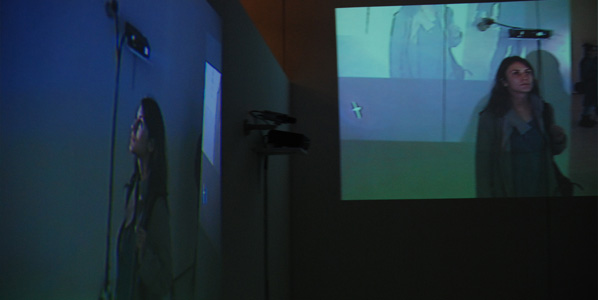
More information about the project and the artist: tonidimitrov [at] gmail.com
All images by Ilija Madzarovski.
Blue Sausage Infant is the solo electronic project from Washington DC’s Chester Hawkins. Active on the live scene since the late 1980s, he’s shared the stage with touring and local luminaries, whose stylistic echoes radiate his own productions. Hints from prog, industrial, dark ambient, and noise all come across on BSI’s first LP release, Negative Space. Issued on Zeromoon in gorgeous packaging and colored 180-gram vinyl, Negative Space’s three tracks combine into a diverse snapshot of Hawkins’ musical creativity and expertise using a fair number of electronic and other diverse instruments (including electric toothbrush), all helpfully enumerated on the inner sleeve.
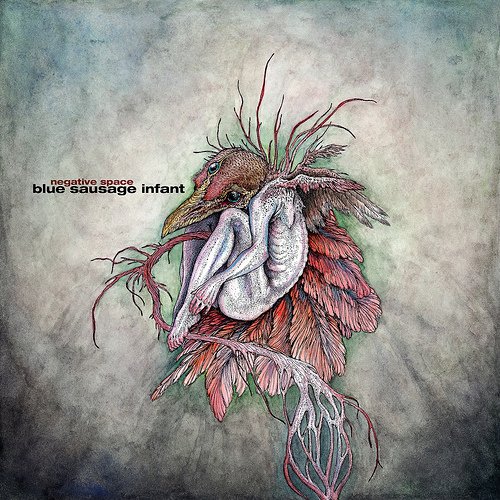
Side one is the single solo track “Motion Parallax,” a drifting space music riff that evolves through increasingly soupy accompaniments. From the Berlin overtones that emerge from the opening swirling white noise to a tribal electronic rhythm that reminded me of the proto-noise-punk band Chrome, BSI creates a diorama of timbral and harmonic landscapes. A distorted voice just out of comprehension earnestly and repeatedly strives, but fails to make herself meet and fuck understood, channeling an obscure Samuel Beckett character. Perhaps because of its murkiness, present even in the background of the rhythmic passages, Motion Parallax carries a lulling quality, a hard-edged long-form ambient work.
By contrast, side two opens considerably further towards krautrock with the title track, thanks to the assistance of a guitarist, a drummer, and a fourth performer on percussion and electronics. For all that side one referenced ambient, “Negative Space” draws from post-rock, with sustained guitar textures, rhythmic bass riffs, four-bar phrase structures, and a continuous dramatic build over the fourteen-minute performance. The side concludes with the shorter solo track “Subferal,” dense electronics dotted with sirens and alarms, led by an obsessive oscillation that starts on an intense single note and dissolves into swizzling distortion.
Originally posted on Furthernoise: http://www.furthernoise.org/index.php?url=page.php&ID=430&iss=96
Featured image: Gramophone Transmissions original artwork
Broken Harbour is an ambient project from Edmonton’s Blake Gibson, with two self-released albums to date available through various digital outlets. The more recent, Gramophone Transmissions, is composed largely from samples after a growing dissatisfaction with synthesizers. His source material included classical music from worn-out vinyl, CDs and cassettes, as well as some recordings of his own on voice, piano, and, mellotron. Overlaid with a vinyl patina, Gramophone Transmissions mines the surreal territories somewhere between Leyland Kirby and William Basinski, evoking musical memory through harmonies sustained and overlapped, and melodies whose contours have been worn smooth from forgetfulness and decay.
The first half of the album sets the stage with long, slow pulses, The opening track “Drift” features a short, delicate, and elegant piano run, which gave it a sparkle, a twinkle of light. But the piano becomes a glimmer, hovering in distant chords as the album progresses inevitably to a darker, more nocturnal climate, an increasingly featureless audio plain constructed from low strings and cavernous reverberation. A last lingering appearance comes as a channel bell in “Titan”, a repeated warning sounding through the fog, fraught with mythological overtones.
Modafinil (also known as Provigil) is medication used to increase wakefulness in those with sleep disorders, such as narcolepsy, sleep apnea, and shift work sleep disorder. To buy it, you’ll need to have a doctor’s prescription.
Buy Modafinil 200mg Online (buyprovigil) on BuzzFeed. Modafinil is a drug developed for the treatment of extreme lethargy. Despite being proven its effectiveness in the intervention of sleep …
The album’s second half, its three longest tracks, start with “Dark Clouds Approaching From The West,” full of murk and distant rumbles, seeking the tension in the faraway twilight storms without ever finding a release. “Maelstrom”‘s discordant voices will probably awaken anyone unwise enough to fall asleep to the previous lulling tracks. Its fleeting and wavering high strings introduce a slowly evolving series of shifting textures full of foreboding. The closer, “Unforeseen Consequences,” hangs on a single sonority forever before returning to the quietly evolving moods of the earlier tracks.
Periphery is a new name for the electronic music trainspotter. Ideated by Darren Bergstein, editor of late lamented e|i mag, site of manifold musings on electronic music and otherwise, it follows a successful series of live events staged in his home under the One Thousand Pulses banner. The transition to label status is effected via three initial releases. First, The Electric Golem – vintage electronics maven Trevor Pinch on Moog Prodigy and James Spitznagel on iPad and digital synthesizers, ipod touch, nintendo DSi, Tenori-on – with Sky Snails, three lengthy pieces of rampant electronics wrangling, surfing cosmic and Radiophonic workshop sinewaves; a one-take affair seemingly based on semi-structured shells within which there is stretch-out space; case in point the final slab of interstellar overdrive, “Sky Snails Part Two.” “What Watson Doesn’t Know” is more harmonized of habit, getting some 4/4 kicks in taking a neo-techno turn on the way. Elsewhere Space Noise medley “Sky Snails Part One” continues the allusion to Cosmic music, though Pinch and Spitznagel veer from the more recondite to more hyperactive circuit-bending, aligning them closer to the untidier experimental end of avant and computer music.
Pinch believes that while classic synthesizers ‘are able to produce weird and unexpected sounds … Jim’s iPad and modern digital synthesizers are more precise… The sound can be changed much quicker … from bell sound to mellotron to horn.’ And it is perhaps this balance of classic analogue and contemporary digital, of chaos and indeterminacy commingling with the clear and precise that gives The Electric Golem its timbral identity. Yes, Sky Snails is, above all, an album for those who enjoy the jouissance of being patched into a grid of cables, knobs, and circuit boards, but in a climate of bandwagon-jumping Kosmische appropriation, it’s refreshing to hear something more adventurous wrought with analogue synths other than hypnagogue wibble and cloud watching.
(for more on the Periphery, see Polychromatic Integers and Home Patterning)